




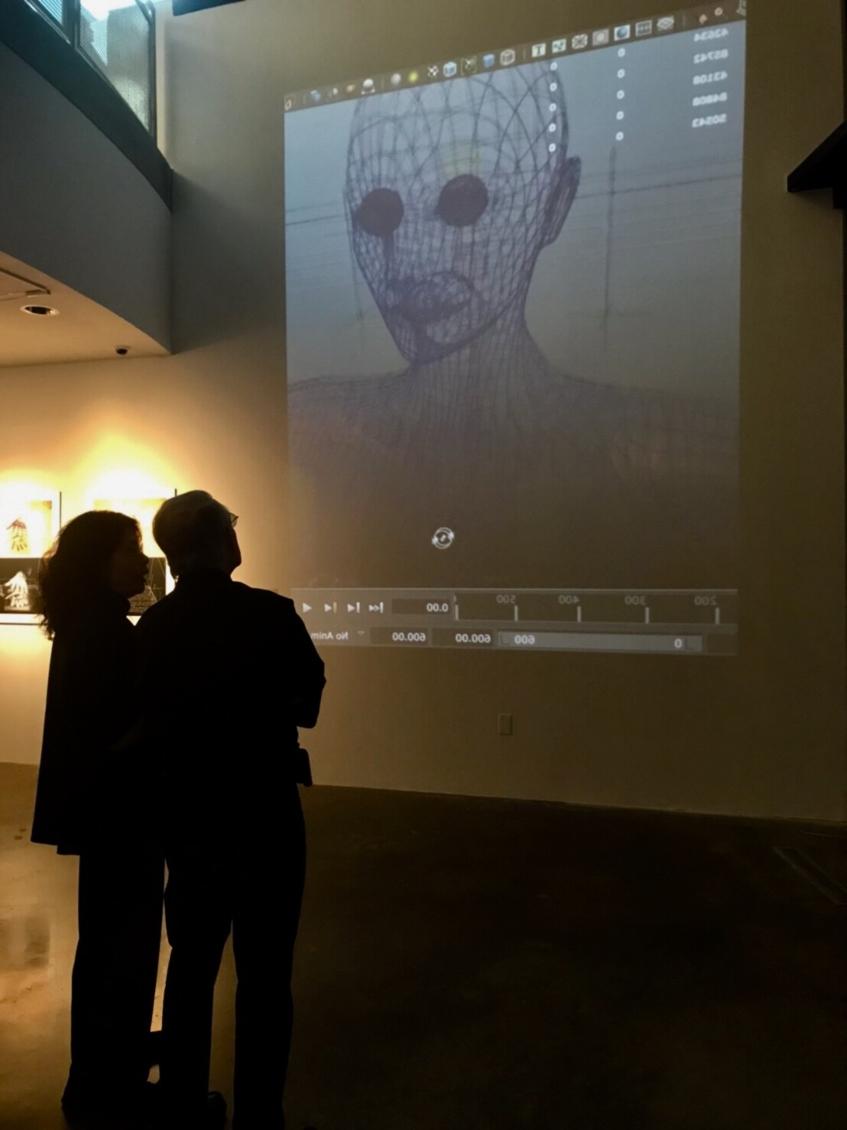 A work by Pey-Chwen Lin
A work by Pey-Chwen Lin
Lives and works in Berlin, Germany
Lives and works in Moscow, Russia
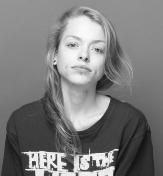
Lives and works in the United States
Lives and works in Ljubljana, Slovenia
Lives and works in Paris and in Brussels

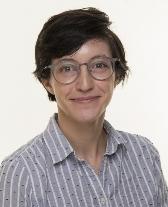
Lives and works in the United States
Lives and works in Japan
Lives and works in Taiwan
lives and works in Tel Aviv, Israel

Peripheral ARTeries meets
My work is process driven, meaning prior research fuels my installation making, covering architecture, a sense of place or narratives of places and of people. I work with mixed materials, sometimes found at the location, other times materials that we cannot fully control, like the wind.
The complex intricate processes of the making lead eventually to strong visual components in their end results. Sometimes living sculptures, including plants, or breathing works, set in motion by the passer by, participative art pieces or documentaries, my projects highlight the potential of spaces (sometimes) hidden in front of our eyes. My installations re-integrate objects and places into the visible landscape morphology and re-define them.
An interview by Dario Rutigliano, curator and Melissa C. Hilborn, curator peripheral.arteries@europe.com
Hello Natalia and welcome to Peripheral ARTeries. Before starting to elaborate about your artistic production we would like to invite our readers to visit http://nataliairinaroman.eu in order to get a wide idea about your artistic production and we would start this interview with a couple of introductory questions. You have a solid formal training and after having graduated from Bard College Berlin, in Installation Art you nurtured your education with a Master in Public Policy and you are about to achieve your artistic Ph.D in Fine Arts, from the prestigious BauhausUniversität Weimar: how did those formative years influence your evolution as an artist and help you to develop your attitude to experiment? Moreover, how
does your cultural substratum due to your Romanian roots and your current life in Germany direct the trajectory of your current artistic research?
My eclectic background is certainly the result of a journey spanned over many years and different cities. I have developed into a professional working across various fields, from conceptual and strategy work of transforming spaces, to text and complex mixed media art designed context specifically for various locations.
Working interdisciplinary has particularly helped my work in and with the public space – a place where so many different fields intersect, from city planning, architecture to political aspects. I have been living in Germany for many years now, I am both a Romanian and German citizen, although I primarily identify myself as a citizen of Europe. Mircea Roman (https://vimeo.com/7360467), the brother
 Natalia in a former signal tower. Photo by Patrick Düren.
Natalia in a former signal tower. Photo by Patrick Düren.
of my father, a sculptor working internationally, has always been a source of inspiration for my artistic work in the sense of valuing a strong visual dimension of art works, complementing the conceptual one. On a different note, through my work in the cultural field and exhibition curation and organization, for example at the MartinGropius-Bau exhibition centre in Berlin, I have gotten in touch with several other contemporary artists, whose work I admire, such as Mona Hatoum or Rebecca Horn.
For this special edition of Peripheral ARTeries we have selected Along the Lines, an interesting project that our readers have already started to get to know in the introductory pages of this article and that can be viewed at https://vimeo.com/297415570. Along the Lines is a work at the scale of the city, re-activating with installation art former signal towers of the German railway, at several stations around Berlin, and we have been particularly impressed with the way it highlights the potential of spaces, to provide the viewers with such a multilayered visual experience: when walking our readers through your usual workflow and process, we would like to ask you how did you develop the initial idea for Along the Lines.
Currently, the former signal towers progressively lose their initial function of safe guarding the train travel and are left without a new function, given their vicinity to the railway tracks. I have noticed these silent spaces years ago, by chance, and this curiosity was at the beginning of the project. Along the lines (http://nataliairinaroman.eu/along-thelines/) is primarily about the trains of our
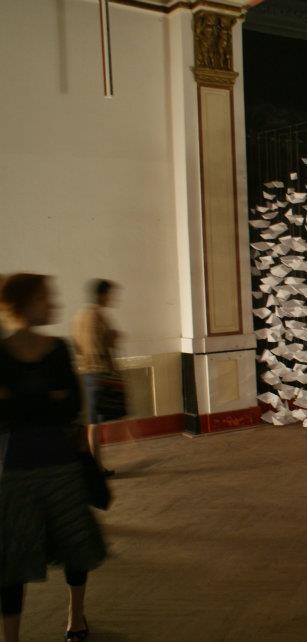
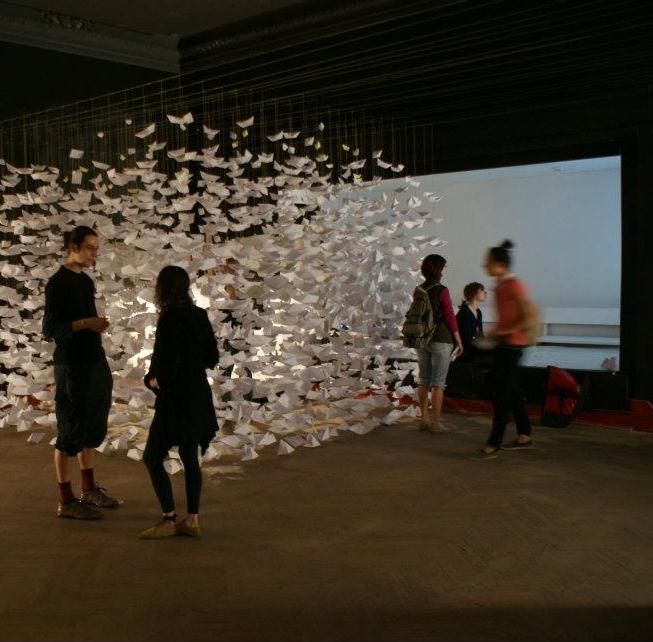

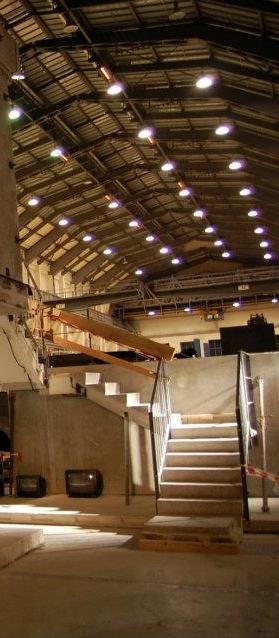
every day, about trains taking us to school or to work, and how in this automated context we often do not notice the city details anymore. Along the lines is a platform for arts in public space, along the railway lines, seen from the passing by trains and from the train platforms. This project converts the former signal towers of the German Railway (Deutsche Bahn) into spaces for arts, accessible to over a million travelers daily with the Berlin S-Bahn. Last year, in cooperation with Deutsche Bahn, the S-Bahn Museum and Hauptstadtkulturfonds, among others, I have successfully organized an exhibition, through which the vicinity of the former towers to the busy railway in Berlin became an advantage.
We daresay that Along the Lines can be considered a combination between understanding reality and hinting at the potential of unknown: we daresay that your artistic practice seems to aim to look inside of what appear to be seen, rather than its surface, providing the spectatorship with freedom to realize their own perception. How important is for you to invite the viewers to elaborate personal meanings? And in particular, how open would you like your artworks to be understood?
The invitation to imagination comes especially from the unseen components, included in the works I have designed for Along the Lines. For the first exhibition, I focussed on the interior of the former signal towers, and I have installed my works in such a manner, as to be seen from outside, through the windows of the buildings. This means that parts of the interiors remained out of sight, which created an open space, it created rooms of possibilities beyond the
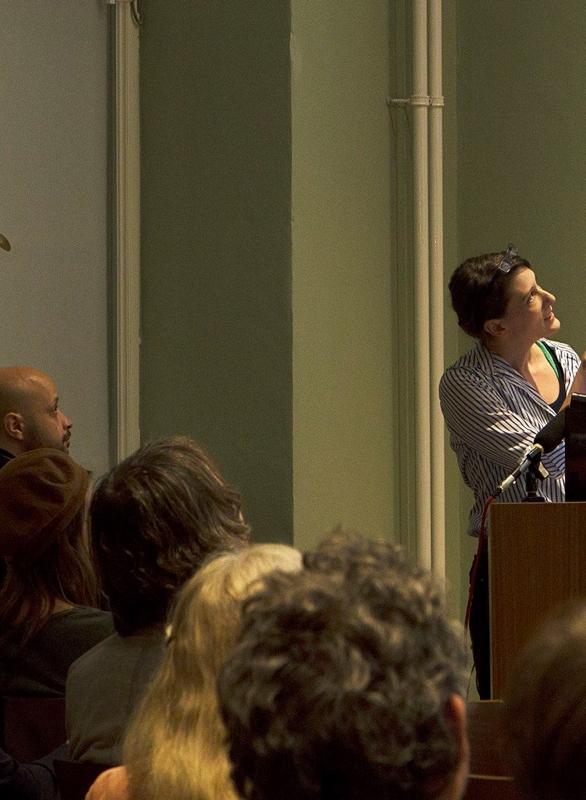 Natalia on The Potential of Disused Railway Spaces, at Nicolaihaus. Photo by Ekaterina Bodyagina.
Natalia on The Potential of Disused Railway Spaces, at Nicolaihaus. Photo by Ekaterina Bodyagina.
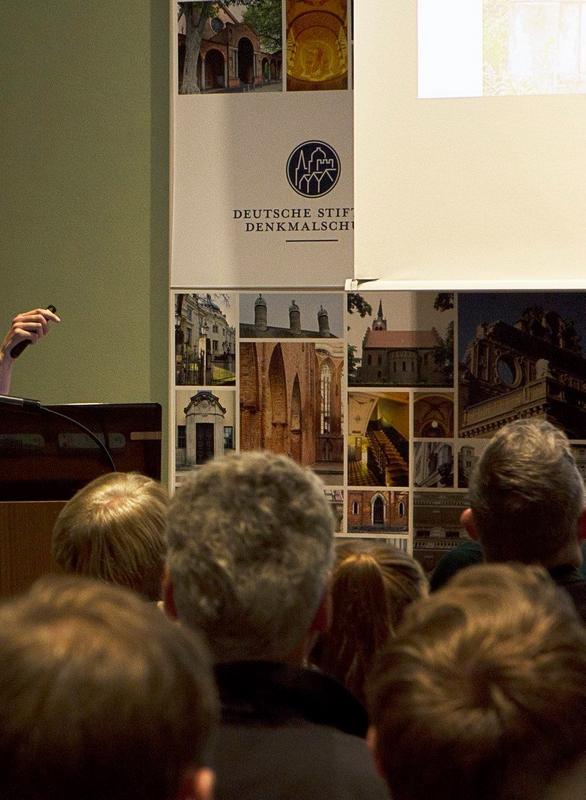
world that we otherwise acknowledge. I have decided to use light for the installations in order to be able to transition from a dormant space to a lively space and back,
several times a day. The light installations activate the former towers and go on and off at different times, surprising the passerby. I had also included in my installations
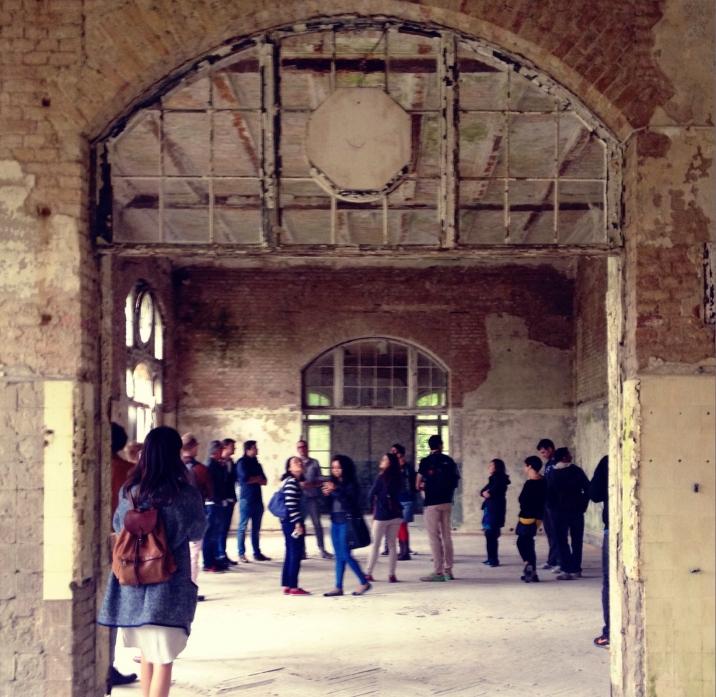
Interior
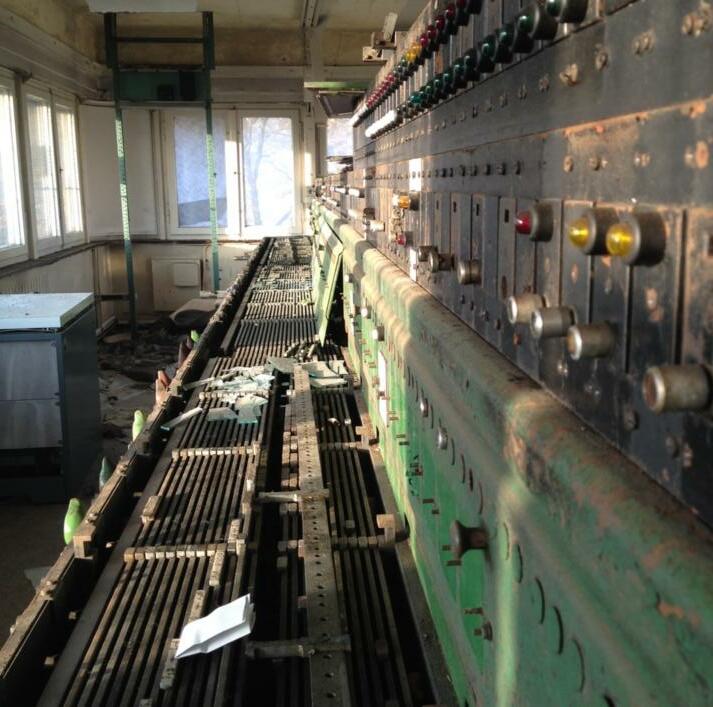
elements connected to the context of the spaces – for example, water, given the vicinity to water of two of the former towers, or a tree, given the meaning of the mulberry trees
in the history of this place and the 1500 mulberry trees, which were planted by Friedrich II back then; one can still visit today the only remaining mulberry tree,
out of the original 1500; having had such an important meaning associated with this tree, in the history of this place, it was important to me to reference it, and that is why I had included a tree in one of the former towers. The natural, organic elements, the tree, the water or the snow, are meant to set a contrast to the former technical buildings.
Along the Lines has drawn heavily from the specifics of Berlin's urban landscape: how did you consider the relationship between the idea of urban space and your artistic research?
One of Berlin's beauties – in my eyes – is its eclectic architecture. My city has been an unfolding muse for my work (https://www.spottedbylocals.com/blog/48hours- berlin-like-local/) and I made sure to look into its many pockets. If you take the Ring Bahn – the circle line – and stay on board for a full roundabout, you will see how different neighborhoods appear as different cities all together. Out of the S-Bahn I have noticed many buildings along the railway, which seemed out of use, and I became curious about their status – especially in a city like Berlin, dealing with an ongoing crisis of space.
Given the scarcity of space that Berlin is dealing with, I was even more surprised to find out that some spaces belonging to the Deutsche Bahn are indeed not used, some for security reasons. This is how I have researched the status of the former signal towers and learned about the limitations they face, given their vicinity to the railway. Along the Lines is thus the pilot exhibition through which I have successfully tested the suitability of my working method with these spaces, allowing their transformation.
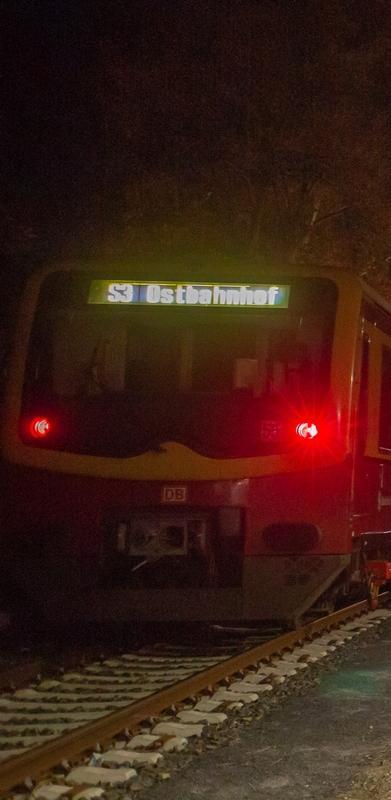

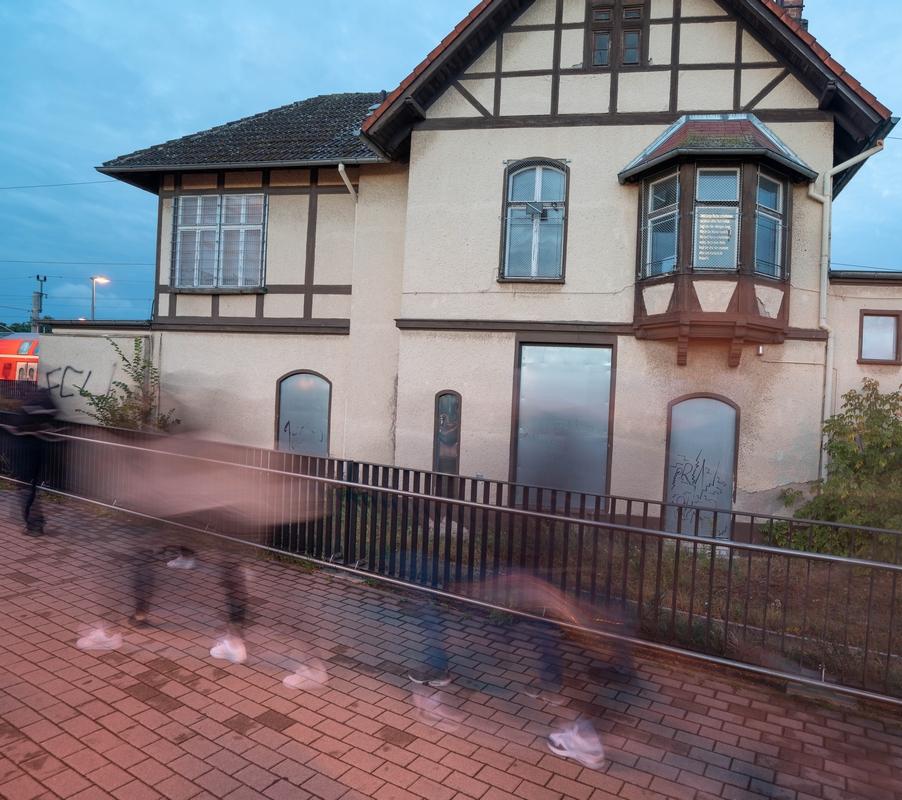
Your works are often structured in order to provide the viewers withan immersive, almost surrounding visual experience: what were you aesthetic decisions in relationship to the exhibition space, in order to provide them with such visual qualities? Moreover, did you aim to provide Along the Lines with allegorical qualities?
My works are the result of my research of the context where the exhibition takes place this includes architecture, the immediate and further away surroundings, the history of the space, other narratives relevant for the particular place, people I meet in this context and their stories.
For Along the Lines there are several restrictions I had to obey to, with respect to the railway traffic security – I could not use certain colors for my light installations, such as for example red, because of its meaning in the railway traffic – but above all, also with respect to a lengthy bureaucratic process to obtain the permissions from the Deutsche Bahn to use the buildings for exhibitions. While my concept brought along a certain degree of security – since the visitors did not enter the disused buildings – the aesthetic advantages proved to be overwhelming. This concept transformed a weakness of the spaces – the vicinity to the railway tracks –into their strength – the many travelers passing by daily have suddenly become an audience.
The installations I have designed for Along the Lines were charged with metaphors – the thread of the works was lyrical and transformed the former towers into mysterious spaces along the railway. The deciphering was left to the viewers. Despite
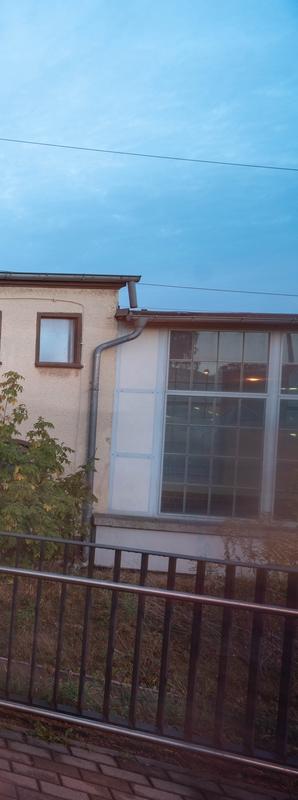

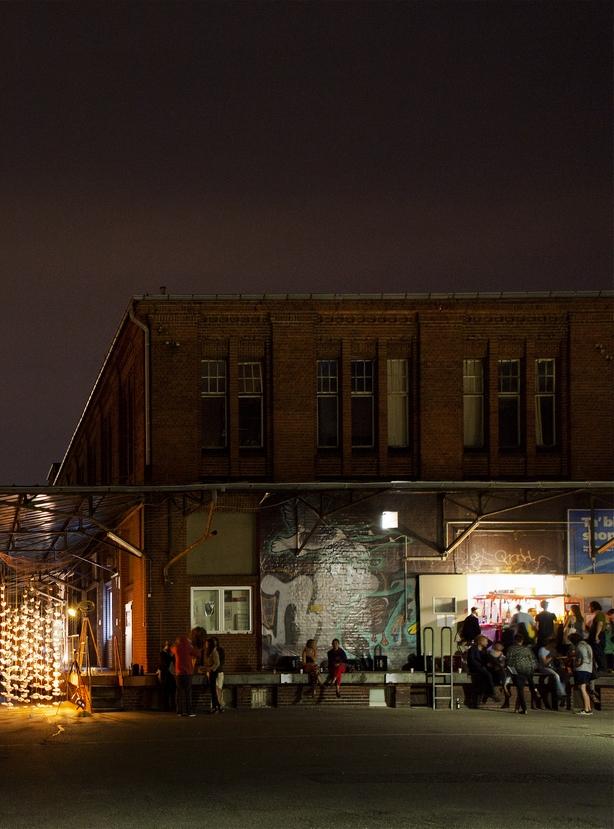 Installation Shipwreck, at District Berlin. Photo by Mariela Apollonio.
Installation Shipwreck, at District Berlin. Photo by Mariela Apollonio.
 Installation Halle 125, at Reinbeckhallen. Photo by Andrea D'Auria.
Installation Halle 125, at Reinbeckhallen. Photo by Andrea D'Auria.
the complex conceptual level of my works, my art includes also many visual components.
This is important to me in order to open up more dialogues channels with the viewers, who if they choose to, can dig deeper into the research that is backing up the work. As Bachelard describes, in his book “Poetics of Space”, a closed drawer is far more interesting than an open one, irrespectively of the beauties that are revealed when eventually opened, because once you see what it is inside, you stop imagining other possibilities. The former signal towers stayed closed for the Along the Lines exhibition, and allow, thus, more possible imagined scenarios in the eyes of the viewers.
As you have remarked once, your practice re-integrates objects and places into the visible landscape morphology and re-defines them: how does your everyday life's experience fuel your creative process?
The borders between my art work and my every day are blurry. I get sometimes inspired by details I notice while walking down the street or by taking the subway. Every day objects that we know so well, like for example, a paper boat, a chair or a key, I particularly find fascinating to work with –since the viewers can easily relate to these familiar objects; in my works I re-frame such objects, place them in another context, in order to put them in another light, either to make them (more) visible or to equip them with additional meanings. One can get a
glimpse into bits of my every day and my work through my instagram account (www.instagram.com/sitespecificideas). I have always been a fan of trains and train travels and it was from a train that I have first noticed the former signal towers. I was fascinated by these dormant spaces, with an eclectic architecture, too close to the railway tracks to be part of the rest of the world. It is no wonder that I have started more and more to focus on the public space in my work, since making art accessible to diverse audiences has always been important to me, I mean including audiences, who would not usually go visit a museum.
The process of looking is as equally important, since there are so many different ways of looking at something, that we think we already know so well. Alexandra Horowitz has written a book on this topic, called “On Looking: Eleven walks with expert eyes” - the same every day block, seen with different eyes, transforms suddenly into different worlds.
You often work with mixed materials, sometimes found at the location.
Photographer and sculptor Zoe Leonard once stated, "the objects that we leave behind hold the marks and the sign of our use: like archeological findings, they reveal so much about us". We’d love to ask you about the qualities of the materials that you include in your artworks: how do you select them and what does you address to combine found materials?
While at the beginning of my work I have
mainly used video, the video was often more than just a two dimensional projection, and it has occupied certain parts of the space. In one of my first projects I have created a lyrical portrait of Berlin's many districts, by recording the abandoned Christmas trees on the streets, in a video installation, which I designed site specifically for the Plattenvereinigung, in Peter- Behrens-Halle. Even then, I have included other objects into my installation, like furniture found in the city, analogue to the found trees.
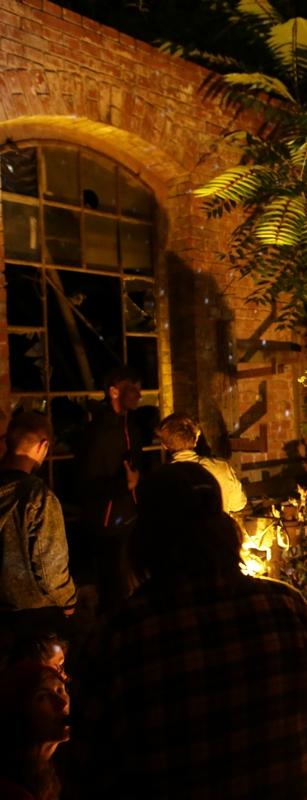
In Asphalt Grün
(http://nataliairinaroman.eu/asphalt-grun/), same as in Along the Lines, the unseen in the every day public space played a central role: I had filmed the abandoned Christmas trees throughout all Berlin neighborhoods, to make the invisible trees visible again, since most of the Berliners did not notice them anymore, once Christmas was over.
With time, my creative process has become more complex and it often includes objects found at the exhibition locations or stories of the people met in these contexts. Such elements engulf stories about the particular spaces themselves, in a way, that a constructed object could not. These objects become archives of their locations.
On the other hand, I have become increasingly interested in materials that we control less. The wind set in motion the installation I have designed, with hundreds and hundreds of paper boats (http://nataliairinaroman.eu/one-boat-twoboats-three- boats/), at the Round the Corner Gallery in Lisbon, in Portugal. The ivy lines continued to grow and transform the
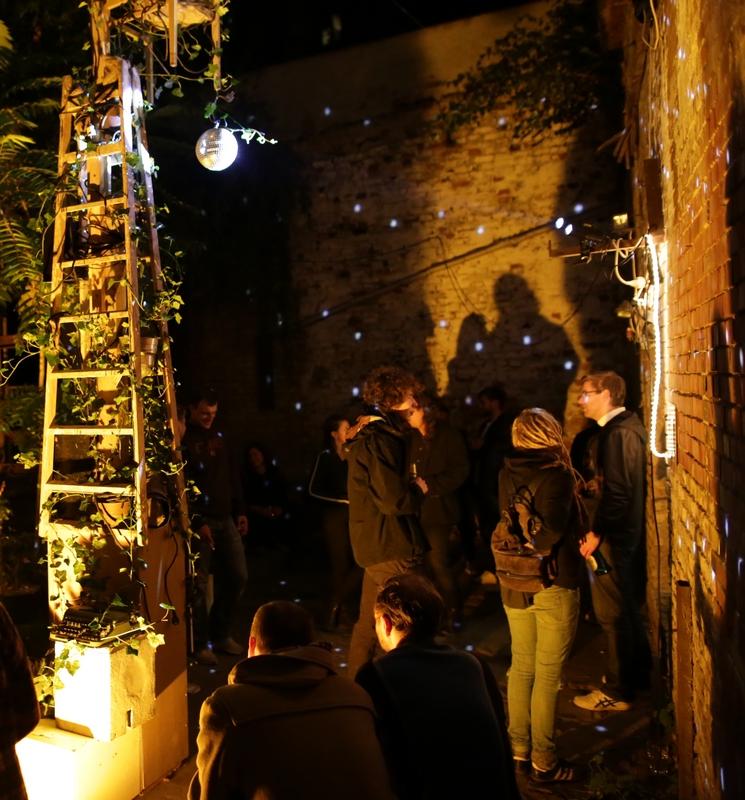
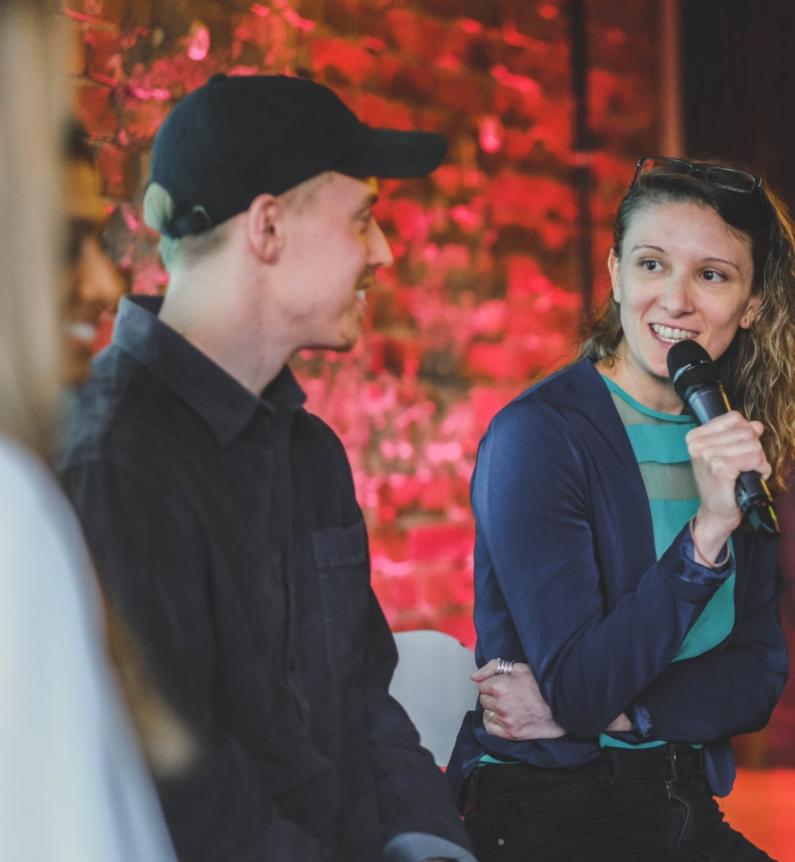
installation (http://nataliairinaroman.eu/ivy-andindustry/) I have designed for Antje Oeklesund in Berlin, a mix of objects found at location and ivy; the work lived there until the building itself has been demolished, in a recurrent situation in Berlin, when investors buy a place in order to demolish it and pursue economic interests.
The installation (http://nataliairinaroman.eu/light-as-a-feather/) I have designed for GlogauAIR in Berlin, in a former school, is a lyrical exercise reversing the process of falling asleep, stretching over three building floors, in the staircase, and it incorporated synthetic feathers; I have installed the feathers along the edges of the staircase, so that the visitors set them in motion when passing by; one can never control the trajectory of a feather's flight. I believe that an art work, once it is done, it begins a life of its own; when it incorporates elements, which we control less, its autonomy is strengthened and the element of chance becomes visibly part of the construction.
Mexican artist Gabriel Orozco once stated, "artists's role differs depending on which part of the world they’re in": does your artistic research respond to a particular cultural moment? In particular, do you think that artists can raise awareness to an evergrowing audience on topical issues in our globalised age?
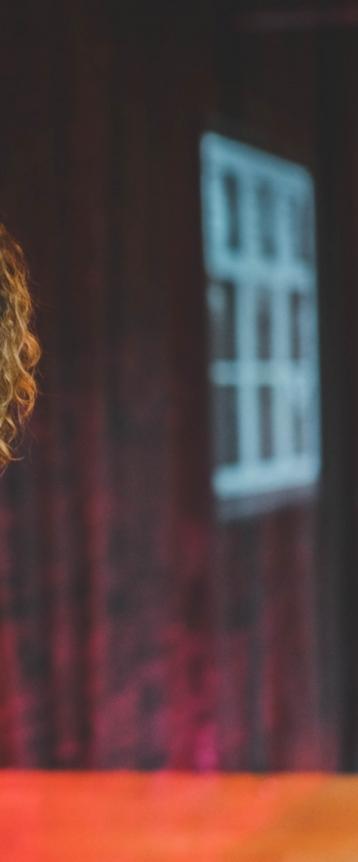
I believe that artists have (other) means to make situations and phenomenons visible, which are otherwise invisible. Through art, one can express critique in a different way and art has sometimes proven to create a common ground, when everything else fails us.
Over the last years I have worked on various participative art projects (http://nataliairinaroman.eu/participative-art/),
bringing communities together or bridging as common language. With Along the Lines I respond to the actual problem Berlin faces in terms of space scarcity – in what extent this reality was the fuel of my project is hard to say, but Along the Lines is definitely offering
an alternative platform for art to the many artists in this city. On a wider scale, this project comes up with a model, which is transferrable to other cities and other countries, since the former signal towers are to be found in many places, and they are facing a similar problem.
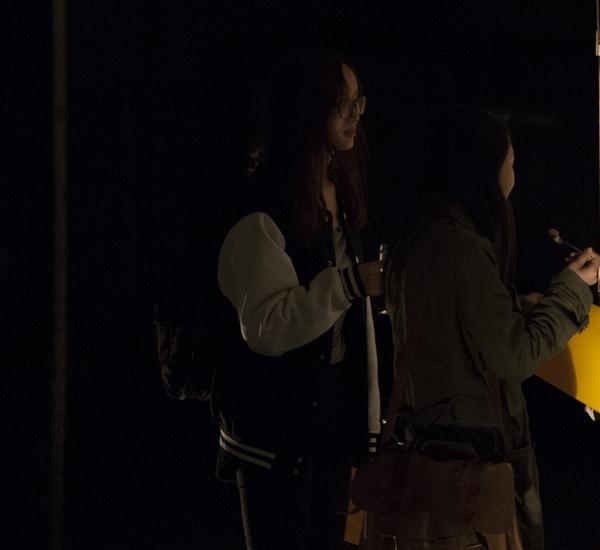
You are an established artist and over the years you had solo and group shows in Germany and abroad, including your recent show Along the Lines, that included public talks about disused DB property, which took place at DB mindbox and at Nicolaihaus,
Berlin: how do you consider the participatory nature of your relationship with your audience? Direct relationship with the audience in a physical is definetely the most important one, in order to snatch the spirit of a work of Art. However, as the move
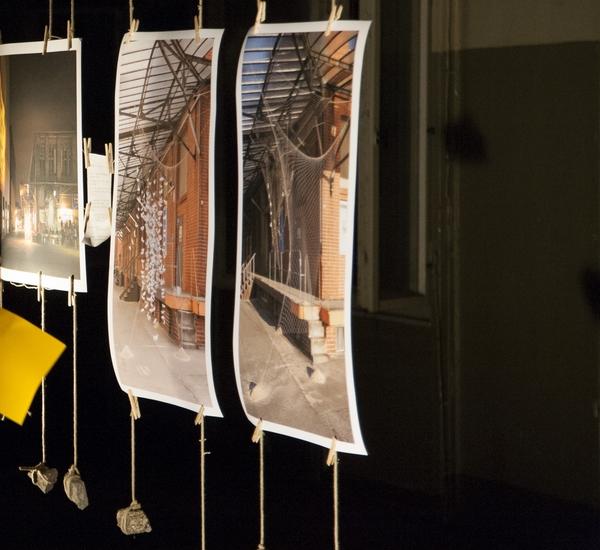
of Art from traditional gallery spaces, to street and especially to the online realm increases: how would in your opinion change the relationship with a globalised audience?

Along the Lines is a project taking place in the public space, so there was no chance to organize an exhibition opening in the usual sense. This prompted me to look for an additional space, a space where I could have a conversation with my audience, a place where I could contextualize my project. This led to two cooperations, one with DB mindbox (http://nataliairinaroman.eu/kunst-und-zug/) –a start up lab of the Deutsche Bahn – and Deutsche Stiftung Denkmalschutz (http://nataliairinaroman.eu/stillgelegteobjekte-der-deutschen-bahn/) – the German foundation taking care of historical monuments.
The discussions brought together an eclectic public, from private owners of former train stations or architects to artists, interested in working with these spaces, academics or employees of Deutsche Bahn, among many others. It was a meeting point among groups that rarely have the chance to sit and talk together in this constellation. On a global scale, the social media channels (https://www.facebook.com/sitespecificideas) have become more and more important for my work. I thoroughly document my projects and communicate them through various online platforms.
We have really appreciated the multifaceted nature of your artistic research and before leaving this stimulating conversation we would like to thank you for chatting with us and for sharing your thoughts, Natalia. What projects are you currently working on, and
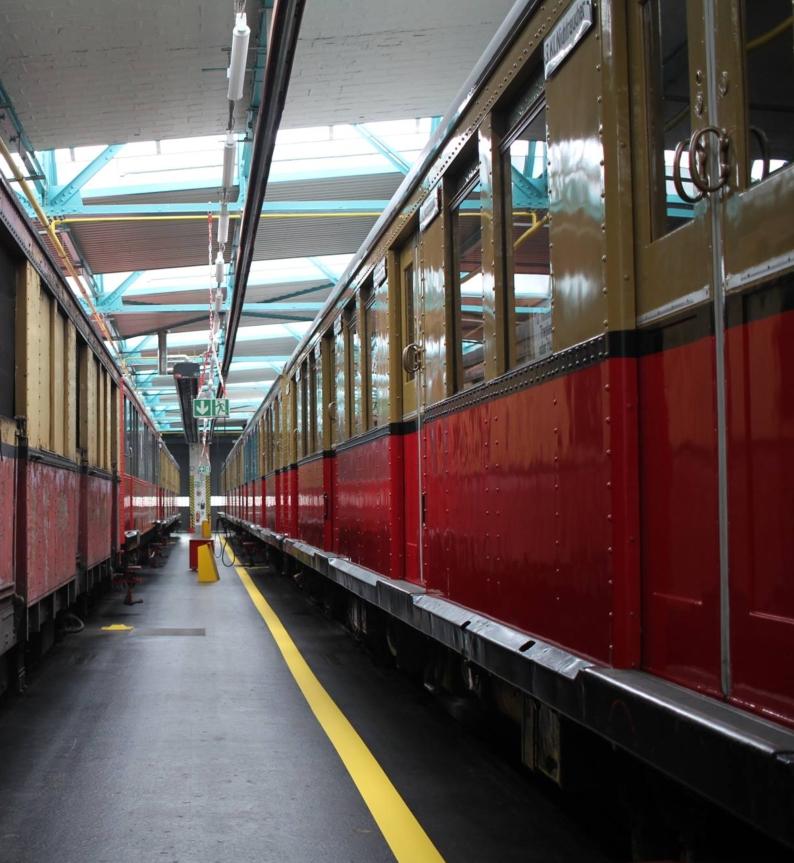
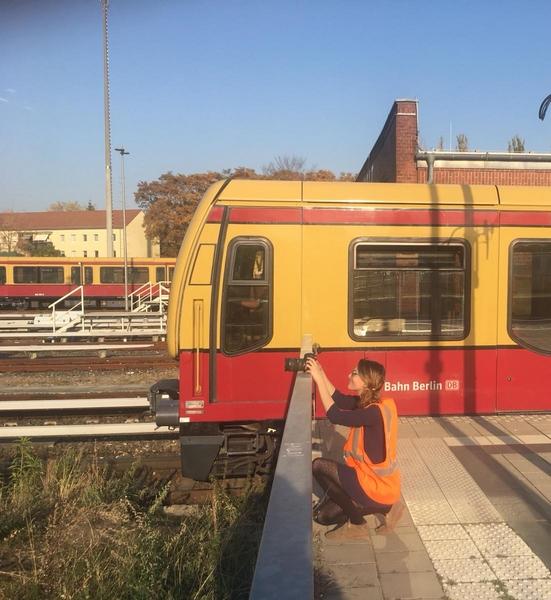
what are some of the ideas that you hope to explore in the future?
Along the Lines continues with a second exhibition, this time with an open call, in order to give other artists the chance to work with these spaces, and for me to be able to share with them what I have learned in this context and work as a curator.
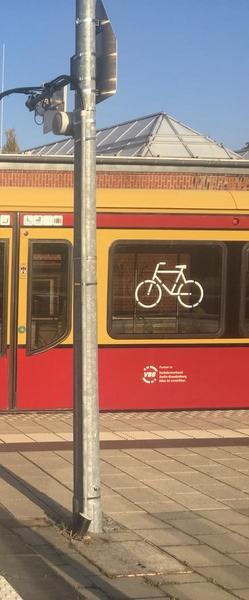
I pursue the transformation of the former signal towers also through practice classes (http://nataliairinaroman.eu/teaching/), through film and various talks. Further threads of my work have become the topics of co-living and co-housing – people living together, as opposed to someone living by themselves. Having lived for more than ten years in two cohousing projects myself, in and around Berlin, I see a wonderful potential for our futures in such communities.
At Project House Potsdam – Babelsberg, in cooperation with the association InWole (https://www.inwole.de), I am currently setting up an Artist in Residency – called Zone C (http://nataliairinaroman.eu/artist-in-residency/) –in former trailers, a programme focused on process oriented art, context specific art and art designed together with a community.
Sara Piotrowska, a visual artist, and Mateusz Szymanowski, an architect, both from Poland, are going to join the first chapter of the residency this August.
I have selected the two artists out of many applications received through our Open Call, together with Dr. Hendrik Budde, architect and curator at Martin-Gropius-Bau (https://www.berlinerfestspiele.de/de/gropiusbau/ start.html), Pierre Granoux, artist and founder of
the project space Lage Egal (http://www.lageberlin.de) in Berlin, and Petar Atanackovic, member of the Project House (http://www.projekthauspotsdam.de/index.php).
The house finds itself in between Berlin and Potsdam, in Berlin Zone C – labeled transportwise – in the middle of an historical neighborhood; the contrast between the surrounding private sumptuous villas and the house project is strong in terms of its organization – Project House Potsdam displays a model in which a diverse group of people have organized in an association, through which they have bought two houses and built a third one; the people who live here are both renting their places in the project and having owners' duties, for the duration of their living here, in terms of taking care of the project premises – a relevant example of how one can deal differently with the current scarcity of space in our cities, through collective decision making. The art during the residency will emerge from the work of the invited artists, the space of the Project House and the communities in and around the project.
Last but not least I have recently been invited to take part in an Artist in Residency (http://nataliairinaroman.eu/conferences-co/) myself, at Kunsthalle Below, in the North of Germany, a programme focused on the topic of minimal traveling.
The work I have created with this occasion has to do with different ways of looking at a space and ways of looking in and out of a space; the work includes video and text, written together with the writer and philosopher Achim Wamßler.
We both recorded the (atmosphere of the) space and the surroundings of Kunsthalle Below between 5 and 7 o'clock in the morning, a time

when everybody seemed to be awake, except for the people – the ants, the horses, the birds, the bees and other unseen, but intuited, beings.
Our lyrical video essay will be released later this year.
Thank you for the invitation in this conversation!
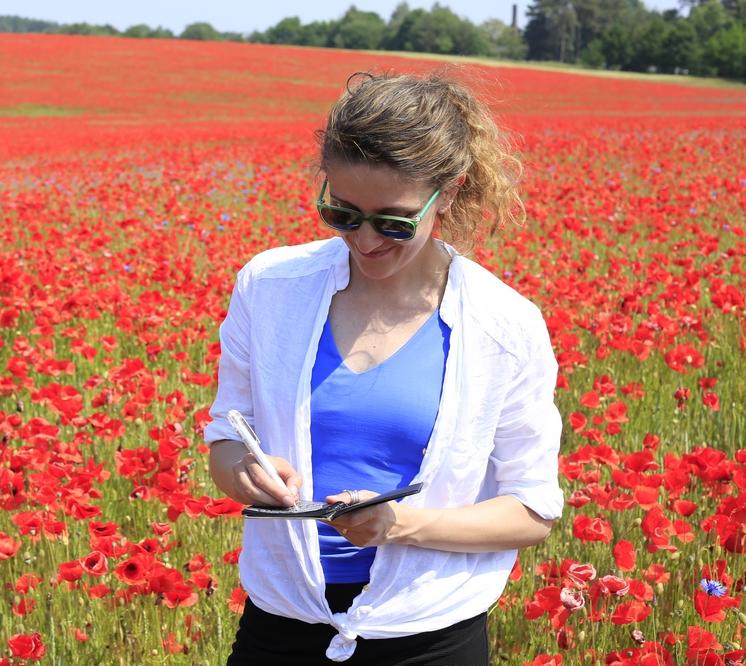
"My artistic method is based primarily on the interrelation of the surrounding world with the inner world. Through my work I try to build a bridge between domestic everyday reality and the subconscious, this is somewhat reminiscent of psychoanalysis from the from the perspective of artist. But her there are no instructive theses and abstracts. As in life there are no simple unequivocal answers to all the questions.
In my works I try to show the uncertainty, the fragility of human ideas about himself and about the outside world. To overcome such uncertain condition, I like to build a bridge across this volatile and unsteady part of the reality — a person has been getting experience, is feeling something, after then he can either immediately switch to his usual way of life, or turn aside in his intuition in the direction of those sensations that have caught him. And my bridge leads also there.
I think that my art method is the architecture of the bridge which is a conductor from the ordinary and reflex reaction to things to the world of intuitive images, symbolic dreams, leading to a more deeper understanding of yourself. And so, by going to ordinary life, I mean an escapism, but an intuitive-sensual world is exactly the way to gain internal stability".
Hello Natasha and welcome to Peripheral ARTeries. Before starting to elaborate about your artistic production we would like to invite our readers to visit http://www.natashavonbraun.com
in order to get a wide idea about your artistic production and we would start this interview with a couple of introductory questions. From early childhood you were engaged in various types of creativity and you later nurtured your education in the field of film directing and sculpture: how did these experiences influence your

Art objects and porcelain ware developed, made by the author, textiles 200x180x200 cm, 2018
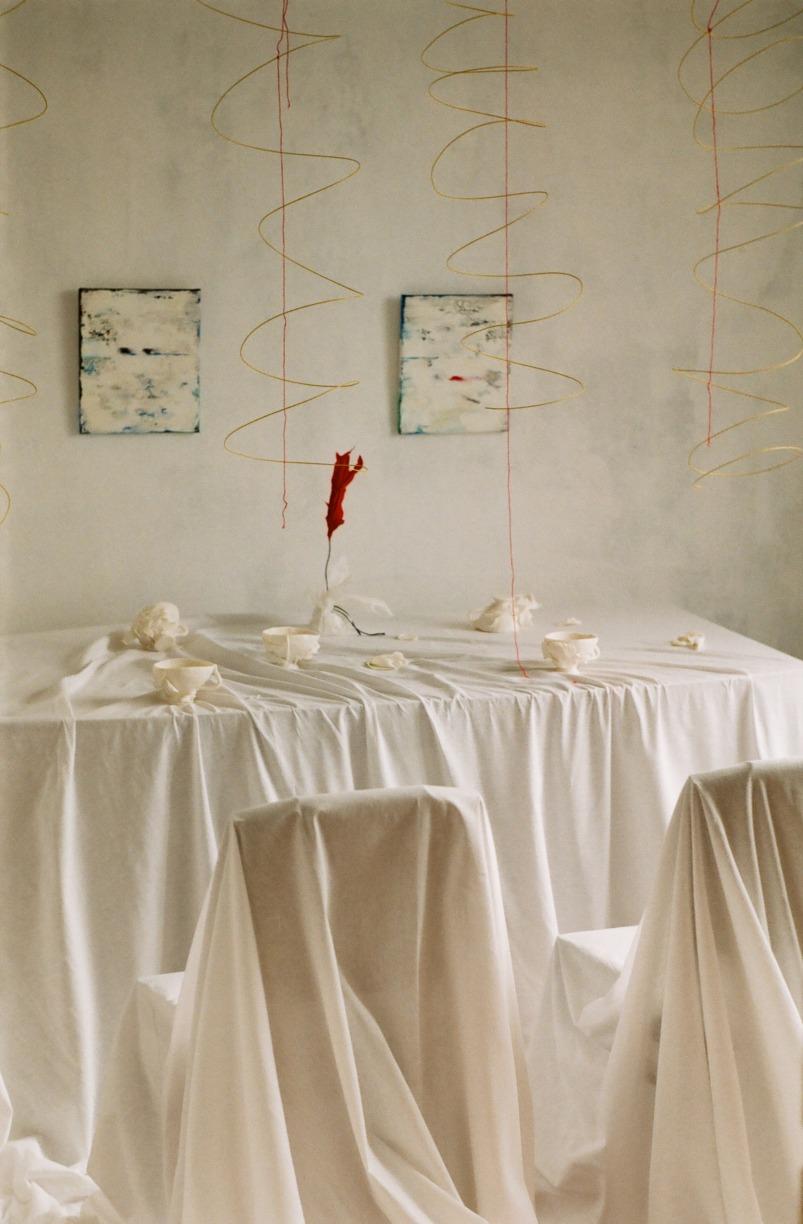
evolution as an artist and help you to develop your attitude to experiment? Moreover, how does your cultural substratum due to your Russian roots direct the trajectory of your current artistic research?
Hello Peripheral ARTeries, glad to be here.
My cinematic education at some point became too heavy. A large baggage of studied cinema symbols for some time lay a heavy burden and did not allow the necessary creative spark to flare up. Perhaps that is why after the end of the cinema courses I was interested in painting and I remembered my childhood hobby for doll animation. Sculpture lessons helped balance all the knowledge gained with some my maybe natural tendencies in creativity. So there were sculptures and later — installations.
But of course the cinema has not gone anywhere, it just has found its place in my creative process. Directing artistic images is also a movie, only it occurs in the head. And sometimes the viewer can see this movie and feel the whole drama behind the static form and “leave the hall” with some thoughts and feelings. So the experiment continues, as long as people watch my artwork the final will always be open.
You mentioned my Russian roots.
Russian roots are in themselves the whole universe. I would say that there are some things that a person cannot talk about from the outside. This is a part of us, the way we look at things, how we breathe, how we love - these are our roots as well. I do not set myself the task of specifically focusing on some problems in Russia, this would be political art, but I’m interested in what concerns the consciousness of an individual, with Russians roots or any other roots.
Ai Weiwei said “everything is art, everything is politics”. If we take one more step towards this statement, it will turn out that everything is all.
The body of works that we have selected for this special edition of Peripheral ARTeries andour readers have already started to get to know in the introductory pages of this article, has at once impressed us for the way you sapiently combined theories from psychoanalysis and genuine artistic pratice. In particular, we have appreciated the way Tao of Love reminds us of the notion of non lieu elaborated by French anthropologist Marc Augè, for the way it expresses the resonance between the subconscious mind and its surroundings. When walking our readers through your usual workflow and process, we would like to ask you if you think that there is a
Art objects and porcelain ware developed, made by the author, textiles 200x180x200 cm, 2018


central idea that connects all your works.

In the Tao of Love the theme of time is important. Our life is an experience that we accumulate from the moment of birth until the moment of reading this article, for example. And this experience stretches in the time. Once at the table inside the Tao of Love, we can live our own lives in one moment and feel its importance. This is my most interactive project. And in it I feel free from everyday worries, from problems and even from time. But this is not an escape, but on the contrary - here and now, that is, where we rarely happen in everyday life.
I think that the topic of personality transformation through resonance with the surrounding reality is present in many of my works. In the Tao of Love, this transformation takes place through the theme of time and place. In other works, for example, in the Darkness Spell, this is simply the only path, a ray of light in the dark. Here you need to step through rooted fears, let yourself some time to drown in uncertainty when you yourself do not know who you are. After deepening in the subconscious, there is a chance to re-release yourself, your identity. In these images it is a step towards real maturity. And everyday reality pushes for this transformation.
We would like to ask you something about your aesthetic decisions and the qualities of the materials that you include in your

Mixed media; TV, metal, balloons, 100 x 200 x 200 cm, 2018

artworks. New York City based artist Lydia Dona once remarked that in order to make art today one has to reevaluate the conceptual language behind the mechanism of art making: are your works created gesturally, instinctively?
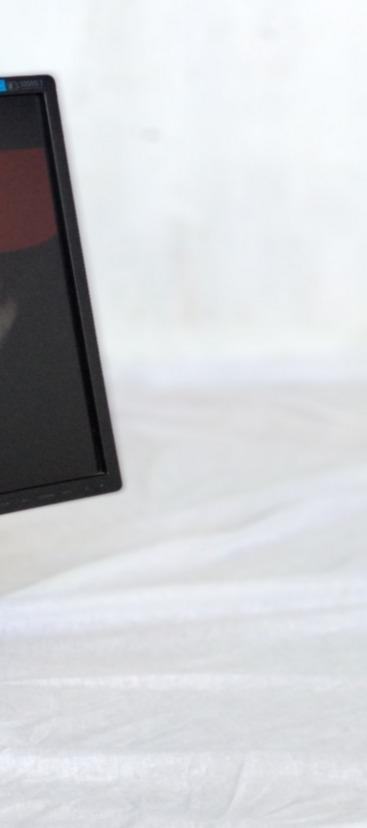
Turning inspiration into tangible objects and exploring them is the work of intuition and intelligence at the same time.
I have a couple of artworks that I did in 1-2 days. But this is an exception. My approach is largely traditional - a lot of dirty work before you can pick up paint, fabrics and other materials to give the final image. It is a quality consisting of time, physical and emotional strength.
The idea is moving by intuition. And this is pure magic - when the image is revealed in the process of work and the idea becomes deeper and deeper. Incomparable experience. It's like diving into the depths of yourself and finding a pearl there.
And with every job I want to dive deeper and deeper. A whole necklace of ideas and images. But in order to collect it you have to really work.
We have been fascinated with the way your works unveil the relationship between the outside world and the subconscious dimension, as in your interesting Freedom to isolation: how do
Resin, mixed media, 105 cm, 2018
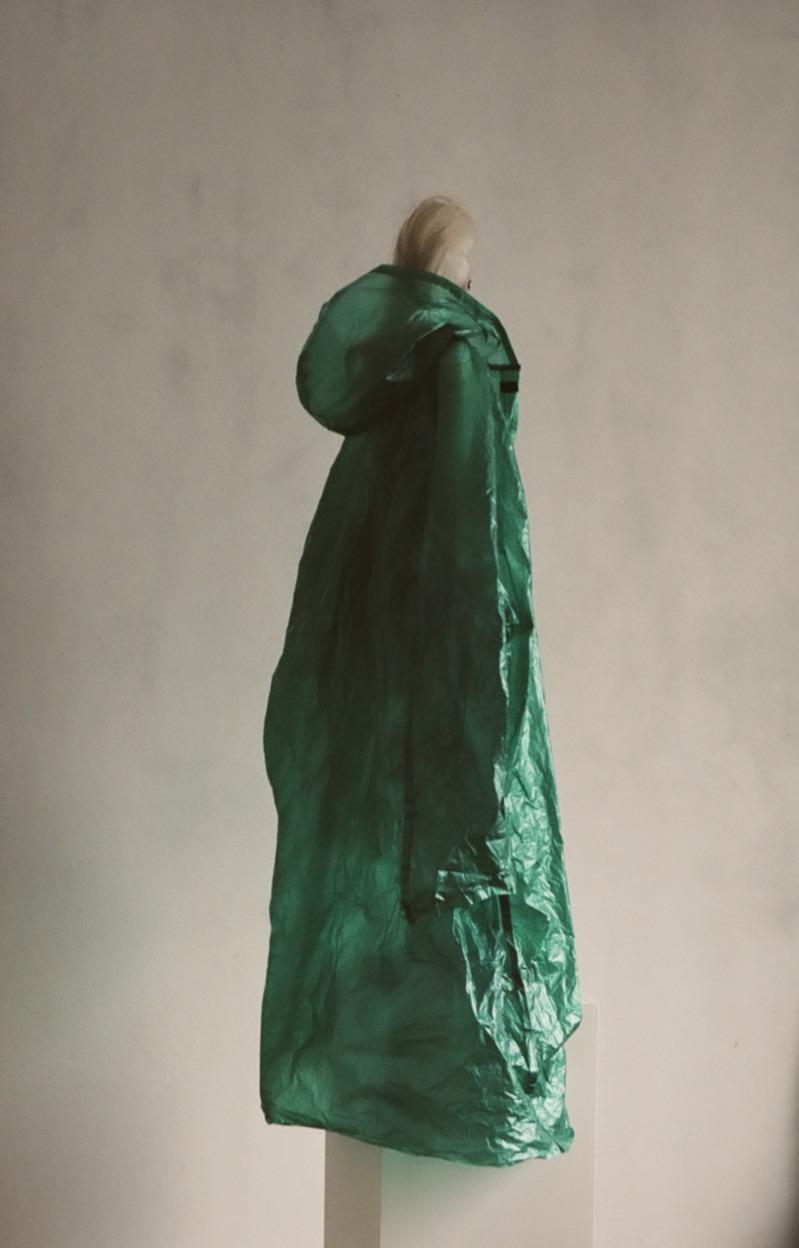
Resin, mixed media, 105 cm, 2018
 Hunter (Kiss and drown me)
Hunter (Kiss and drown me)
you consider the tension between reality and inner identity playing within your artistic research? In particular, how do your memories and your everyday life's experience fuel your creative process?
I think that occasionally questioning popular values is a good practice. Many people watch the pages of celebrity in social medias and thereby devalue their own lives. Often the outside world hurts us, we want to hide from it where no one hurts us. But the paradox is that this is a safe place we are again looking for in the outside world. What does James Bond have to do with my life? Nothing.
All these layers of the surrounding reality are like a labyrinth. If you move away from one aspect of the manifestation of the outside world, then immediately you find yourself near another. And so on without end.
My smartphone sometimes offers a look at the pictures I took a year ago. And I found there many pictures of the sky. All last summer I photographed the clouds. Perhaps nothing interesting, but you can just make the sky part of your life instead of James Bond.
You often use the image of human body to convey specific messages, as in your Hunter (Kiss and drown me), imparting allegorical qualities: how would you consider the role of symbols and
My symbols are intuitive. This is my personal mythology, rooted far to my ancestors, and maybe even further. At the same time, this is what I see around right now. The combination of deep intuitive consciousness with a routine that sometimes shocks, encourages to these images. If I start to turn my images into theatrical effects then all this will immediately lose its meaning. Here honesty is important.
I even coined the term contemporary voodoo. It is like a transcendent daily routine available to us 24 hours a day.
And the image of a person is just a language in which I can speak. My tool and manner of thinking.
Maybe later I want to speak the language of abstract forms and it will be interesting for me.
Marked out with such unique - and we dare say oniric uncanny and atmosphere visual identity, your works deeply struck us for the way they incite the viewer to make new personal associations. Austrian Art historian Ernst Gombrich once remarked the importance of providing a space for the viewers to project onto, so that they can actively participate in the creation of the
Clothes and things of Odysseus, chair, tablet, smartphone, video made by the author, projector, video of the starry sky , 200 x 200 x 200 cm, 2018
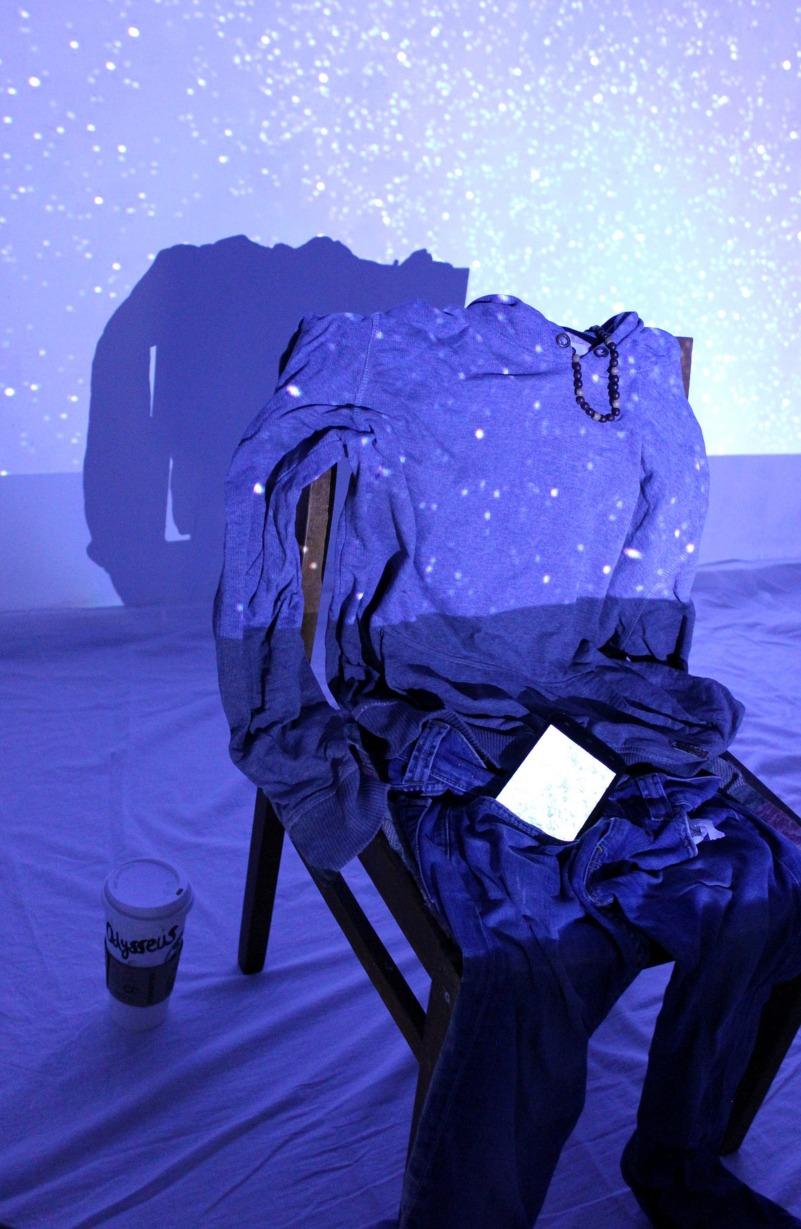

Clothes and things of Odysseus, chair, tablet, smartphone, video made by the author, projector, video of the starry sky , 200 x 200 x 200 cm, 2018
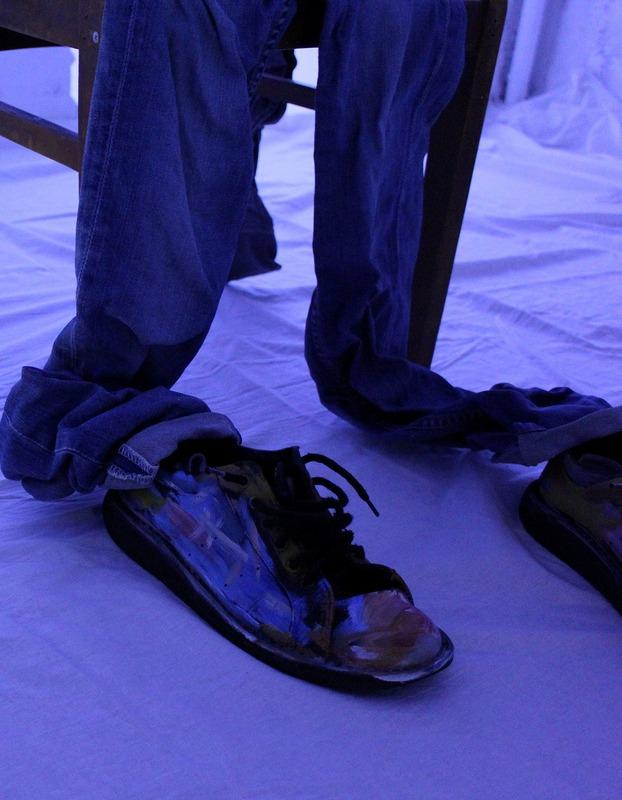
Don't make me oil
Mixed media, LED, 45x30x19 cm, 2018

illusion: how important is for you to trigger the viewers' imagination in order to address them to elaborate personal interpretations? In particular, how open would you like your works to be understood?
Once at one of the exhibitions was a funny case. The visitor wanted to buy my artwork, but he did not like the fact that there were cigarette butts (there was a flower which smoked). That is, he liked the look of the artwork, but he failed to grasp its meaning.
Sometimes viewers like external effects first. But this is only a beautiful door that leads to the most interesting. I like when viewers offer their versions of my artwork. It is always interesting to take a fresh look at your idea. And at this moment the idea is no longer mine, but just a part of space, and I watch it with others. For example, my installation "Odysseus is not here" always eludes me — every time I look at it, I rediscover its meaning.
Every time I think about it - every time I go through the sensation of discovery from beginning to end. At an exhibitions and on the Internet I wait the same from the viewers and I am ready to go on these consciousness trips with them again.
Marked out with such a powerful
narrative drive, you sapiently combine childhood memories with dreamlike atmosphere to explore the theme of the fragility of human, as in the interesting Odysseus is not here. We dare say that you seem to turn your memories into new components and experiences: how do you consider the role of memory playing within your artistic research? And how does everyday life's experience fuel your creative process?
I would say that recalling something from childhood I perceive myself in a new way in the present. You are right, memories become new components. Memory is the context for the present. Also in art - rethought memories become the ground for a new interpretation.
Everyday life becomes interesting if you begin to see around everything that you have previously seen in the art gallery in the hall of 20-21 century art. You have to be a little alien in order not to get bogged down in your daily routine, like the hero of the film The Man Who Fell to Earth (who by the end is mired in it too). And this is life - constant balancing between routine and space.
As you have remarked in your artist's statement, your process the opportunity to realize yourself anew and to find internal path to identity: how do you
Papier mache, mixed media, 2016
consider the role of art making as the opportunity of living a cathartic experience?
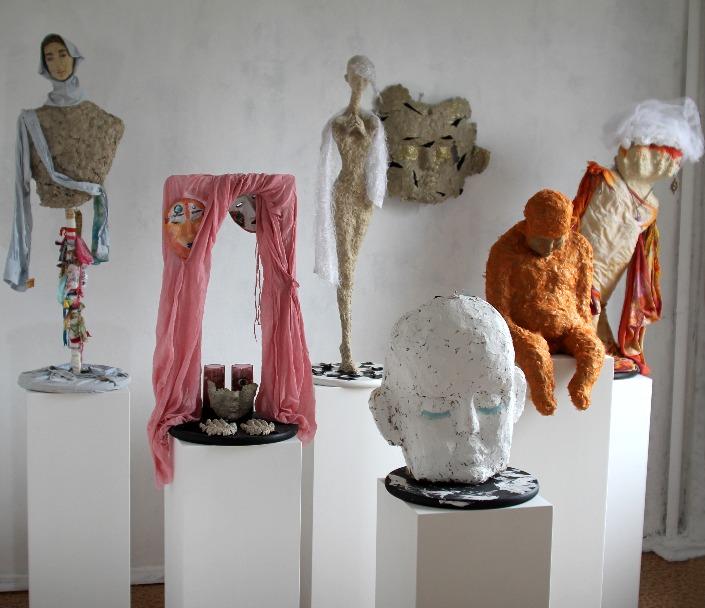
For me, this I almost always a dramatic process. The path to the new passes
through pain. Sometimes through the need to re-experience some memories and rethink them. Sometimes this is a completely new experience, which can only be accepted through non-resistance. When need to surrender. This process
A dream about a fat boy / Dreams project
Papier mache, mixed media, 60 cm, 2016

reminds me love, because true love between the two is impossible if one person cannot surrender to another. And so you need to surrender every time to grow and develop. This is the initiation path. And how to go through it if you
look back all the time? To surrender to the creative process then to become a new person, that is, to become yourself.
You are an established artist, and over the years your works have been
herbs (fragment) / Darkness Spell project Resin, mixed media, 105 cm, 2018

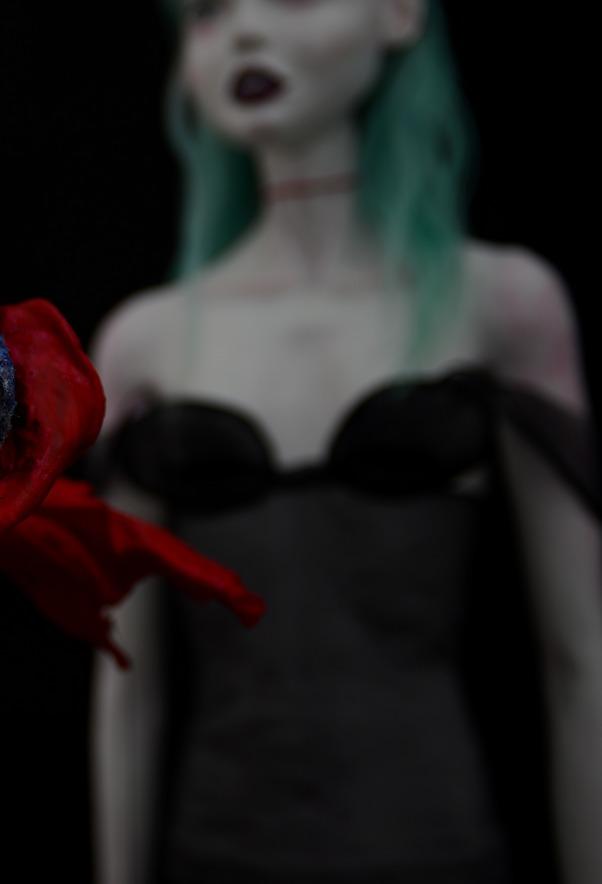
What a dark night, mommy… / Darkness Spell project
Resin, mixed media, 105 cm, 2018

exhibited extensively in many occasions, in Russia, Europe and the United States, including two a dozen group exhibitions and more a dozen personal projects: how do you consider the nature of your relationship with your audience? In particular, how do you consider the role of emerging online technosphere — and platforms as Instagram — in creating new links between artists and worldwide audience?
Now artists have amazing opportunities for self-presentation. But of course the Internet will never replace the experience when the viewer looks the artwork live.
As for the sculptures and installations, any photograph, even very professionally took, express only 50% of the effect of the artwork. So sometimes
I take photos of my projects with film camera.
I have an old camera and from time to time I experiment with film. By the way, photos of Tao of Love and Hunter are took with film camera. And I didn't specifically make digital photos for them. Absolutely cannot imagine the Tao of love on digital photography.
Returning to Instagram, I can say that besides the obvious plus for artists there is another side. At some point it just stops working. Information satiety prevents the viewer to understand the value of a work of art, which he finds on
the Internet. And there is no more time for it.
So many things that a person no longer has time to ponder over something, otherwise he will miss something else. Sometimes it greatly destabilizes both the viewer and the artist. Therefore I think that for the artist is still the best thing is the personal contact of the art with the audience.
We have really appreciated the multifaceted nature of your artistic research and before leaving this stimulating conversation we would like to thank you for chatting with us and for sharing your thoughts, Natasha. What projects are you currently working on, and what are some of the ideas that you hope to explore in the future?
Now on the wave of universal attention to ecology, I am interesting by the idea of human’s internal ecology. I think the ecological situation on the planet is rooted in our consciousness, in our internal ecological condition. A person can sort garbage and not wear leather shoes, but at the same time be rude to parents or be indifferent.
I have already come into contact with this topic, creating “Don't make me oil”, but I still have some ideas in this way.
An interview by Dario Rutigliano, curator and Melissa C. Hilborn, curator peripheral.arteries@europe.com
Lives and works in Las Vegas, Nevada, USA
Kay Leigh Farley is an Assistant Professor in the Department of Art at the University of Nevada, Las Vegas. She received her MFA in studio art from the University of Tennessee, Knoxville and her BS in Visualization from Texas A&M University. Her work utilizes video, new media, and narrative to reveal hidden realms and communicate abstract truths. Farley has exhibited and screened work at venues including The Wrong Biennale, The Knoxville Museum of Art, and CoProsperity Sphere. She is in collections in the United States and Brazil.
An interview by Dario Rutigliano, curator and Melissa C. Hilborn, curator peripheral.arteries@europe.com
Hello Kay Leigh and welcome to Peripheral ARTeries. Before starting to elaborate about your artistic production we would invite to our readers to visit http://www.kayleighfarley.com in order to get a synoptic idea about your artistic production and we would start this interview with a couple of introductory questions. You have a solid formal training and after having earned your Bachelor of Science from Texas A&M University, you nurtured your education with an MFA, that you received from the University of Tennessee, Knoxville: how did those formative years influence your evolution as an artist and help you to develop your attitude to experiment? Moreover, how does your cultural substratum direct the trajectory of your current artistic research?
Kay Leigh Farley: Texas A&M focused on the formal practice of 3D animation. Classes were centered around being technically proficient and industry focused. I think it was in reaction to this that the student body focused more on being as artistically and philosophically minded as possible. We organized a student group that would meet for coffee every Friday to discuss art and philosophy we found interesting. For class assignments we would test the limits and see how far we could push an animation into the art realm and get away with it. We were still focused on making all of our work technically sound but we were equally interested in making something new - something with a different aesthetic or narrative structure than your usual Hollywood affair. Animation is interesting like that. It’s a field that is still very commercially focused but has so much potential artistically. Of course it’s been ages since undergrad and 3D animation art has
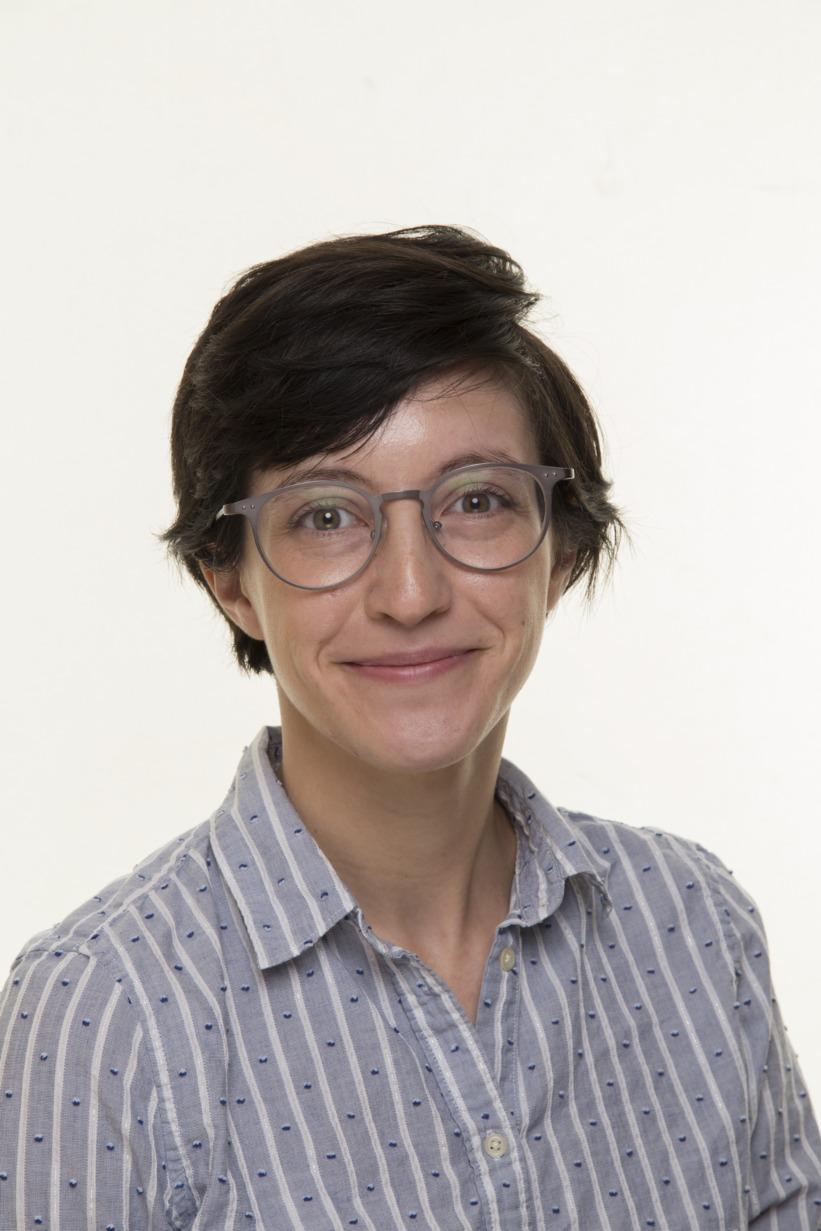
exploded on the web. It’s very exciting to watch the community grow.

Graduate school was like being dumped into the artistic deep end. Almost everything I knew about artistic practice had been self taught and everyone around me had received a formal fine art education. I’d had art history survey classes but I wasn’t prepared for the in-depth painting discussions about surface, depth, and Picasso. My department had one
faculty member working with digital art and the students doing animation were creating commercial work. I quickly became more acquainted with printmakers, sculptures, painters, and others. I had never met a peer who practiced art professionally and I found it endlessly interesting. It was these interdepartmental relationships that made me explore fields outside of animated short films
and incorporate more physical media in my work.
Texas and Tennessee aren’t the friendliest places for artists. It’s because of this that tight-knit communities of artists and art lovers pop up. They’re larger than you might suspect. People are supportive of each other. They go to every show, help create new spaces, and are radically inclusive. They’re not scared to push boundaries.
During a panel at the 2015 CAA in New York the speakers chided the south on not creating any sexually explicit work, which I found hilarious. I had just been in a group show titled Butter My Biscuit that was one of several art components to an educational event called Sex Week. The repercussions involved the Tennessee Senate attempting to pull state funding from the University of Tennessee Knoxville. The lasting effect of all

this for my practice is that I value community, I value supporting other artists, and I’m not discouraged by a lack of recognition or negative criticism from authority.
For this special edition of Peripheral ARTeries we have selected Eulogy for a Living Father, a stimulating two year digital performance where you have a one sided conversation with your estranged father on Instagram. When walking our readers through the
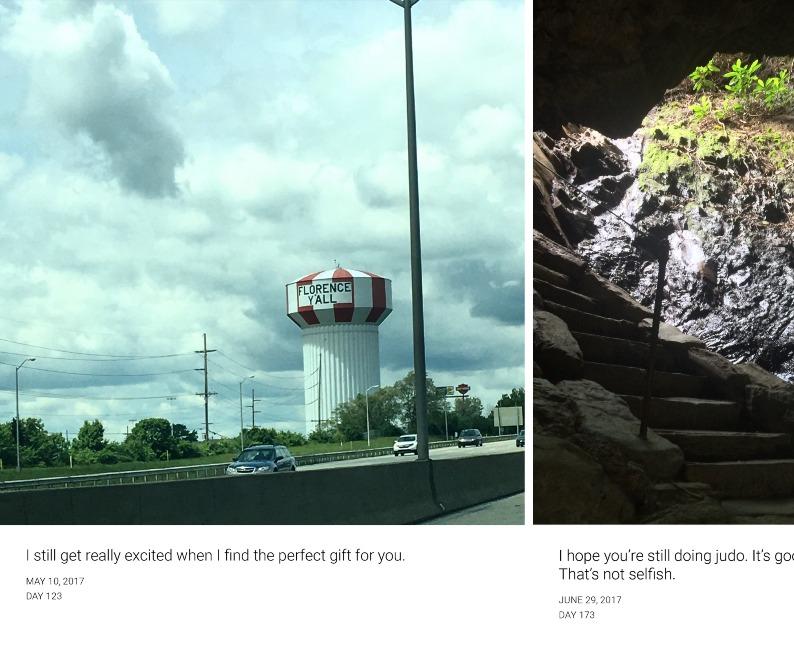
genesis of this interesting project, would you tell us how important was for you to draw from your personal experience, in order to make a work about a theme that you know a lot about?
Kay Leigh Farley: “The personal is universal.” I know it’s an extremely tired adage but I do find it holds true. The more honest and specific I am, the more it connects with the audience. Each post tells a personal story but
the emotion at the center of it connects with memories that contain similar emotional undercurrents in the reader. My audience commonly approaches me with their own story to tell. There’s an air of validation - of finding someone who might understand and who might believe them.
Emotional abuse is hard to communicate. It’s not as understood in our current culture and victims frequently get push-back. There’s an
internalized toxicity, especially for boys, to just get over it. The goal of my work is to show that they’re not alone. There are other people out there who are hurting in the same way that you are and that it’s ok to still be recovering in the wake of it.
Even if a parent wasn’t abusive, no one is perfect. Nearly everyone has a story of being hurt by a word or action from a guardian. There’s a longing to talk about it and receive
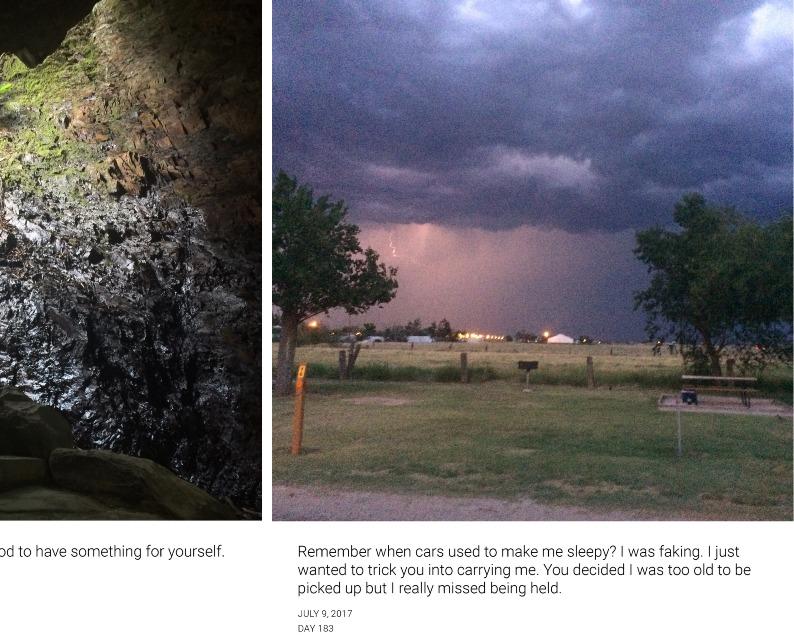
closure, but there’s always a reason why it’s not possible. You don’t want to hurt them. They’re no longer around. They’re no longer the same person they were when you were five. I hope this performance helped clear up any misconception that it’s wrong to feel this way or that you’re alone in these feelings.
I don’t provide any answers on how to fix a relationship between parent and child. I just
know that it hurt more when I was alone, when I thought something was wrong with me, or when I thought I was a bad person for not being able to forgive. It was my therapist and then later online message boards that made me realize how common this was. I hope my work reaches out to people and helps them the way those spaces helped me.
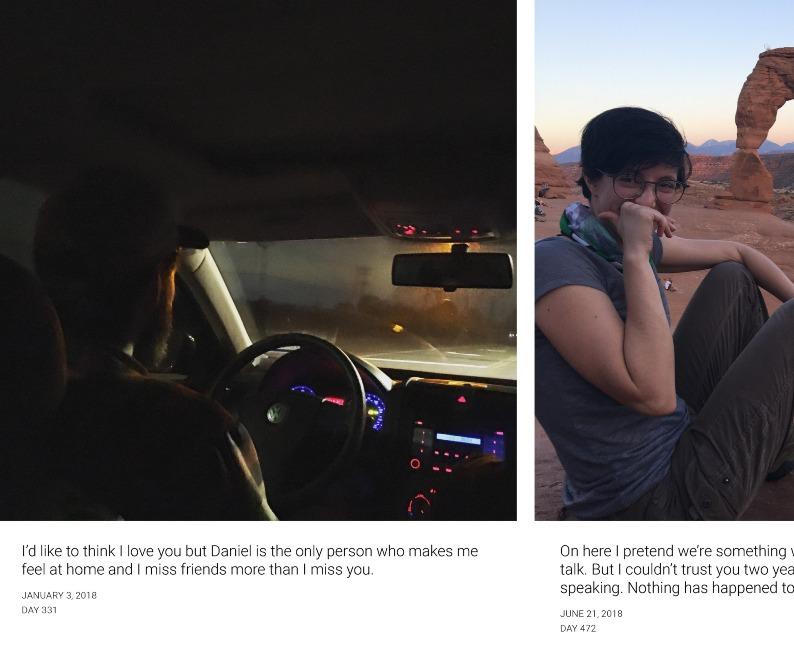
Inquiring into how rapid and dramatic transformation affect the online technosphere, the way Eulogy for a Living Father also touches the theme of identity in the online technosphere, raising questions about the relationship between the private and the public sphere. Paradoxically, it seems that in our ever changing contemporary age everyone appears to be more isolated despite being more connected. How do you
consider the issue of the perception of the self in relation to the augmented experience provided by new media?
Kay Leigh Farley: People are more bold on the internet. Back in the early days, this was blamed on the anonymous nature of the internet. People acted differently than they did IRL because of usernames and avatars. Then JohnTron started parroting far right

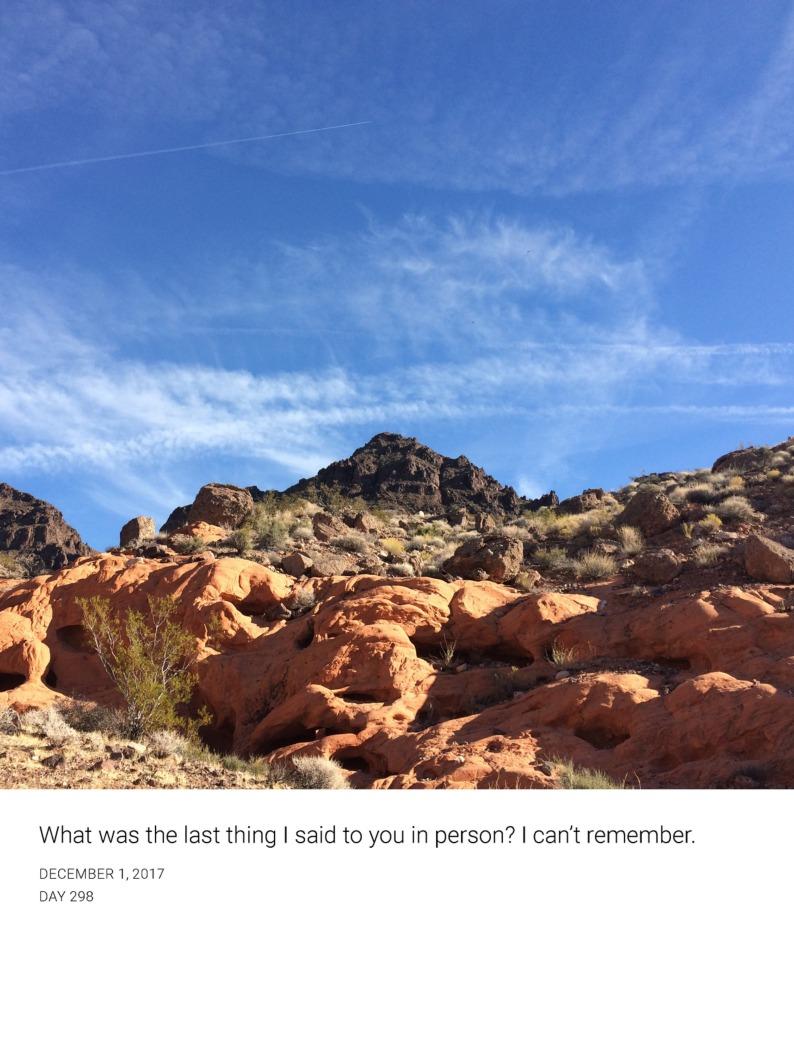
talking points while live streaming, so there’s that. On the other end of the spectrum, people also use this boldness to talk about subjects that would otherwise be too niche, embarrassing or unsafe to discuss. I don’t think the ASMR community would have ever flourished without the internet. The phenomenon is certainly a double edged sword.
I’m more bold on the internet but not in the way that ends up on CNN with Anderson Cooper. It’s easier for me to talk about abuse. There’s few consequences for not saying it the right way the first time. I can just delete it and replace it. It doesn’t have to be a conversation if I don’t want it to be. It allows me to feel validated and validate others. Without the internet I’m not sure I would have disclosed much of my childhood to anyone other than my therapist. Without the internet, I’m not sure I would have felt bold enough to seek a therapist.
Ironically, I do think I’m more disconnected from others due to the internet. I’m observing this from personal experience, so I’m hesitant to say it’s a universal truth. I had a friend reach out via facebook status with what looked like a suicide letter. It had no comments or reactions to it. I checked in with them. They were ok but it made me realize how rare it is for something online to result in real-world action or meaningful interaction. I think this disconnect between online and offline action is part of what facilitates people to act more boldly when on the internet.
Another old internet theory was this romantic notion that you’re a different person on different internet platforms. I think that still holds true, if not as dramatically as people
imagined. The contemporary phenomenon is more similar to the Normcore concept that K-Hole piched way back in 2013. People change to fit in with different groups. The way I act at work is different than how I act at home. The way I act on Instagram is different than the way I act offline.
Who I am offline is quiet, private, and cautious. On Instagram I’m an optimistic archivist, loving scrapbooking each day. When my father and I cut off contact I was most disappointed that he would no longer be involved in my day to day life. His knowledge of me would extend to that terrible conversation and go no further. I unfriended him on Facebook, changed my number, and moved addresses. Our only point of connection left was Instagram. I had set up an account for him years prior and I knew he barely used it. Instagram was only populated by my friends and him. It was a place I already felt comfortable talking. I had been reading a self-help book for abuse survivors that recommended writing a eulogy for a parent or a relationship that was wished for but never manifested. This is how I started using Instagram for a purpose far outside its programmed intention. I was still archiving my life but only for one person, an idealized person, and I was using it to say goodbye.
You are a versatile artist and your practice includes video, new media, and narrative, to invite the viewers to question their perceptual categories, to look inside of what appear to be seen, rather than its surface: what does address you to such multidisciplinary practice and what does appeal you of new media?

Kay Leigh Farley: There is a constant stream of new and obsolete technology. Each have hardware, software, and aesthetics that are uniquely, conceptually interesting. Each technology attempts to hide its code, hardware, and assembly in order to display an interface appealing and useful for the user. In Gene McHugh’s Post-Internet, he writes
“I use the Internet but hardly ever think about the fact that it is all code. I know the code is there - if you ask me if it exists, I’ll gladly tell you it does - but, it makes me anxious to see it there in front of me, despoiling my fun-land of uploading pictures for family and friends.”
I don’t think he’s alone for not wanting to be confronted about what happens behind the scenes. I think that’s an interesting parallel for abuse and the head-in-the-sand treatment people can receive when asking for help. The parallels don’t end with code. For example, I also love the conceptual implications of 3D print supports, the extra plastic that printers auto-generate while creating a sculpture. It supports and aids in creation while also anchoring it to the ground and deforming its intended shape.
Marked out with such unique visual identity, what has particularly deeply struck us of the narrative aspect of your artworks is way they incite the viewer to make new personal associations. Austrian Art historian Ernst Gombrich once remarked the importance of providing a space for the viewers to project onto, so that they can actively participate in the creation of the


illusion: how important is for you to trigger the viewers' imagination in order to address them to elaborate personal interpretations? In particular, how open would you like your works to be understood?

Kay Leigh Farley: The performance itself was only for me and my dad. When I was going about the posts I only wanted them interpreted one way. There was no way I could reach out to him in a vague or abstract manner and not be brushed off. I hoped that being honest, specific, and straightforward would make him change his mind about me.
The artifact I created, the eBook, is meant for everyone else. From my experience talking with my viewers, it’s the specific narrative in the work that allows them to discuss their own trauma; to confront it specifically, and not the guilt, anxiety, and insecurity that has built up around it. Even though I’m discussing specific events from my life, nearly everyone can connect with the underlying emotion: being hurt by a loved one and being disconnected from them.
We really appreciate the way A Sinking Sensation combines references to human body and such a surreal ambience, to invite the viewers to explore the point of convergence between the figurative and the abstract, to challenge the viewers to explore realms of the imagination, how do you consider the relationship between the real and the imagined playing within your artistic research?
Kay Leigh Farley: Sinking Sensation expresses my abstract feelings related to home, family, and the body. I used to feel very trapped in my body. My facial expressions, my arm positions, my tone of voice were always getting me into
trouble. I felt trapped at home. Every shared meal felt like a minefield that needed to be expertly navigated. Yet I was warm and fed. I had a roof over my head. Home had some truly wonderful moments. Sinking Sensation tries to communicate these amorphous, complex relationships twisted by trauma.
Mexican artist Gabriel Orozco once stated, "artists's role differs depending on which part of the world they’re in": does your artistic research respond to a particular cultural moment? In particular, do you think that artists can raise awareness to an evergrowing audience on topical issues in our globalised age?
Kay Leigh Farley: From the conversations I’ve had on forums, people seeking advice about abuse gather from all over the world. They’re often looking for validation. They ask if what is happening to is this wrong. They ask is an even was normal or if they’re overreacting. While legal advice varies by region, the answers to these questions remain the same. Verbal and physical abuse are wrong no matter where you are or how old you are. While my work has an audience limited by language and internet access, its themes are global. I try to keep this in mind as I work and brainstorm new projects.
You are an established artist and over the years you have exhibited and screened work at venues including The Wrong Biennale, The Knoxville Museum of Art, and Co-Prosperity Sphere, and is in collections in the United States and Brazil: how do you consider the nature of your relationship with your audience?
Kay Leigh Farley: There are three functions I would like my art to serve. The weight of each category changes depending on the project. I enjoy making, and when I’m lucky, the process helps me work through trauma.
I also want my art to reach people who have who have encountered abuse and help them work through their own persistent or abstract thoughts. This sort of outreach helped me when I was first coming to terms with my experience and mental health issues and I hope to be that person in return for others. I would also like to reach people who have no experience with abuse or mental illness. An outsider has difficulty understanding the full gravity of these experiences. I hope my depiction can help those who would like to sympathise, understand, or aid come a step closer to doing so.
Direct relationship with the audience in a physical is definetely the most important one, in order to snatch the spirit of a work of Art. However, as the move of Art from traditional gallery spaces, to street and especially to the online realm increases: how do you consider the role of emerging online technosphere technosphere — and platforms as Instagram — creating new links between artists and worldwide audience?
Kay Leigh Farley: I would argue that a physical relationship with art is only most important when the work itself is meant to be encountered in a physical space. Many new media and internet artists harness the medium of the private computer and utilize its elements to create an experience unique to the hardware and software. I would say


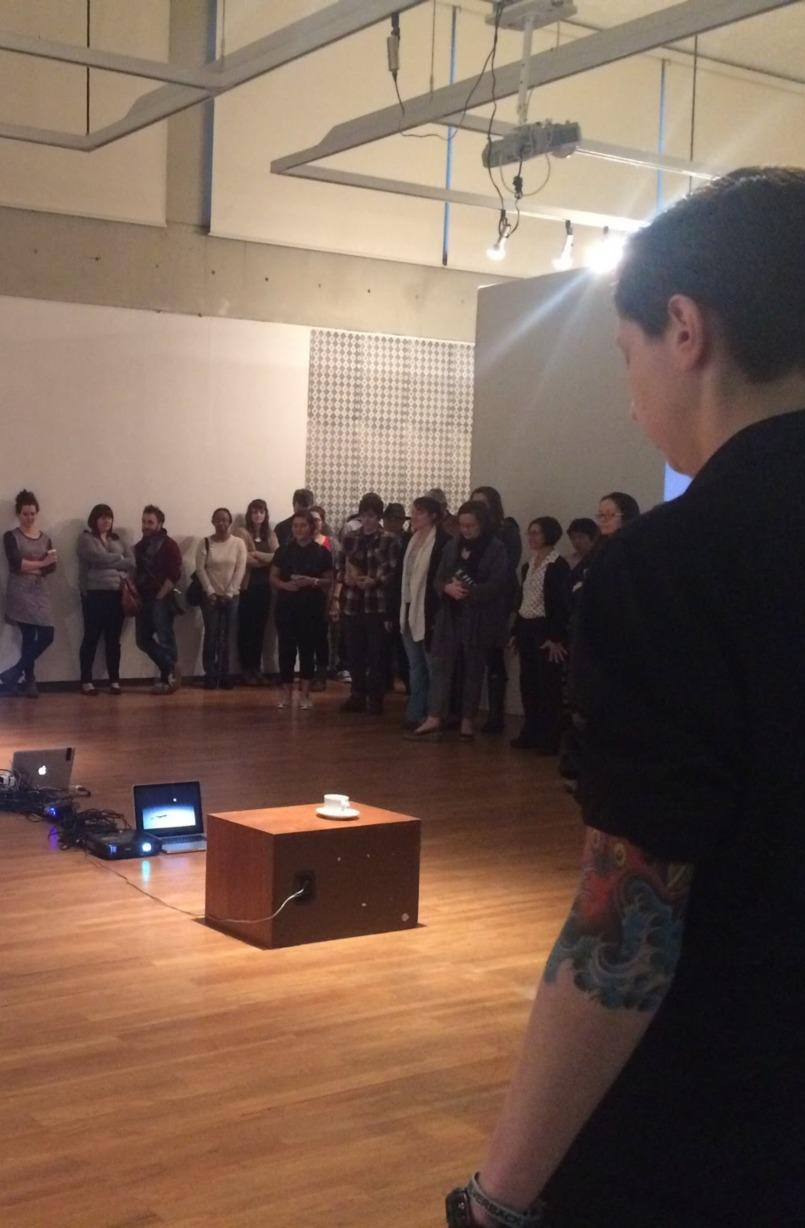
 Kay Leigh Farley
Kay Leigh Farley
Gone Home is more effective as a game than it would be as a guided house tour.
Art on social media plays a similar role to performance art. It forces the audience to confront the nature of a world that is usually consumed passively. In Jon Rafman’s Kool-Aid Man in Second Life he used his avatar to reveal niche aspects of an MMO that most players never experienced, showing the limitless possibilities of the game and human imagination. It also confronted the fantasy, breaking the illusion that players had created and immusers themselves in, forcing them to acknowledge the non-reality of the world they had painstakingly created.
Instagram has some unique facets for artistic exploitation. Photos are primarily viewed in a feed of unrelated photographs. Secondarily, users can scroll through individual profiles or a specific hashtag. Regular users are already subverting the app by posting photos that only make sense in the grid system displayed in profile view.
My utilization confronted Instagram’s framework which encourages communication and engagement with as many people as possible. In the text below every photo I was only talking to one person. I didn’t add any tags because I didn’t want to reach anyone else. I didn’t overly explain. I used language meant for a one on one conversation. It revealed the app’s vagueness about who we are speaking to specifically when we post. It confronted how we conduct ourselves in this public sphere; what we say and don’t say.
We have really appreciated the multifaceted nature of your artistic research and before leaving this stimulating conversation we
would like to thank you for chatting with us and for sharing your thoughts, Kay. What projects are you currently working on, and what are some of the ideas that you hope to explore in the future?
Kay Leigh Farley: Thank you so much for having me! I very much enjoyed this simulated conversation. I am currently grateful to The Pajama Factory in Williamsport, PA for hosting me as an artist in residence this summer. I am using the time and space to experiment with interactive projection. I have done some work with it in the past but I really needed time to reteach myself coding and to really play with trial and error. I hope that using projection will help make my work more accessible to demographics with limited internet access. As for subject matter, I’m still working through my self-help book, as cheesy as that sounds. I’d like to make something about breaking out of obsessive thoughts and how asking for help isn’t a burden to others.
I hope y’all have a great summer. Remember, there’s no sun on the internet.
Talks, writings, and art referenced:
1. Casualties of Culture War: Sexuality in the North American Museum
East Ballroom, 3rd Floor
Chair: Jonathan D. Katz, University at Buffalo, State University of New York
Arnold Lehman, Brooklyn Museum
Stephanie Stebich, Tacoma Museum of Art
Richard Brettell, University of Texas at Dallas
Barbara Fischer, University of Toronto Art Centre and Justina M. Barnicke Gallery
Thom Collins, Pérez Art Museum Miami Wednesday, Feb. 11th 2015
2. http://khole.net/issues/youth-mode/ http://www.digiart21.org/art/kool-aid-man-in-second-life
First signs of the night. Not fixed timing to feel at least first signs of life. Limited frame to share. Find a focus to forget about timeframe. I'm comfortable of being an image as well as a living form. I am sharing this form from the body I’m in.
Parts of the body members are remembering, excavating. Dance quote as a desire to live and be watched. Be professionals of copying. What is energy? Nothing last as decision. Drain, take, gain, regain, rest, energy. sleeping energy, distant energy, OK energy, fluid, non-thinking energy. Impermanence. The signs among us. Immediacy.
Forget Forget Forget. Long exploration, keep talking, ways to continue to dance, talk and dance, talk in dance.
Considering the world production, a massive pile of trash, materials from the gesture of abandon. I have an interest growing for the closeness death and dark humour as a response to absurdity and incoherence present of everyday life. The theatre of an outrageous adaptation. And what could bring spirituality hereby? Myths slipping over trivial elements foreseeing funerals of artefacts. Or some afterlife affect of life.
peripheral.arteries@europe.com
Hello Shankar and welcome to Peripheral ARTeries. Before starting to elaborate
about your artistic production we would like to invite our readers to visit https://vimeo.com/user10695142 in order to get a wide idea about your artistic production and we would start this interview with a couple of introductory
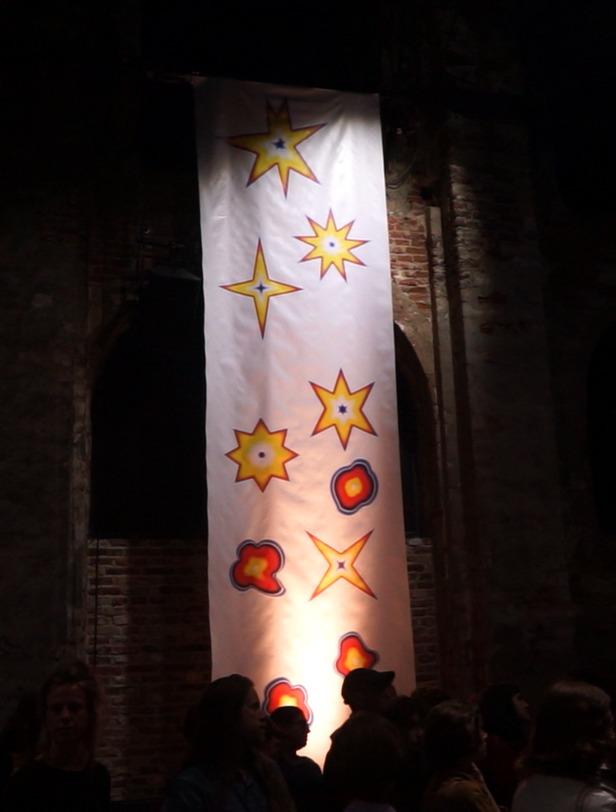
Approaching Portland 2018
Centrale for contemporary art, Brussels
questions. Are there any experiences that did particularly influence your evolution as an artist and help you to develop your attitude to experiment? Moreover, how does your cultural substratum direct the trajectory of your current artistic research?
Sure, but it took me more than I did, I could not resist in mixing up cultures, ideas, images. I feel I kind of arrived late in the popular culture in France when everybody was having the same reference, I felt completely out! At an early age, I was travelling between India
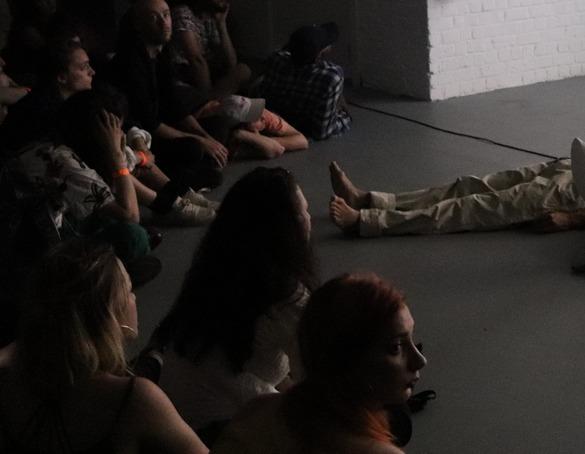
and France, seeing what could be the limits of luxury and poverty. I received a lot of solicitation to do and see art practices, from the traditional form in small villages to new contemporary performances. Works in devoted forms of art, and thing going on the edge of
historical reproduction of modes of representation inscribed in today's every day. Then going back and forth, seeing the evolution of the surrounding both in rich and poor milieux till now. How could be conceived a big brother's organisation with so many distances between what

contrasts in our society? From where I'm now, I can't wish more than a language talking to and for myself.
Of course, I wish I could always accept to be contextual and add more references, borrowing everywhere, but I also try to respect the space of decision of everyone.
The body of works that we have selected for this special edition of Peripheral ARTeries and that our readers have already started to get to know in the introductory pages of this article has at once captured our attention for the way you draw the viewers to such immersive experience. When walking our readers through your
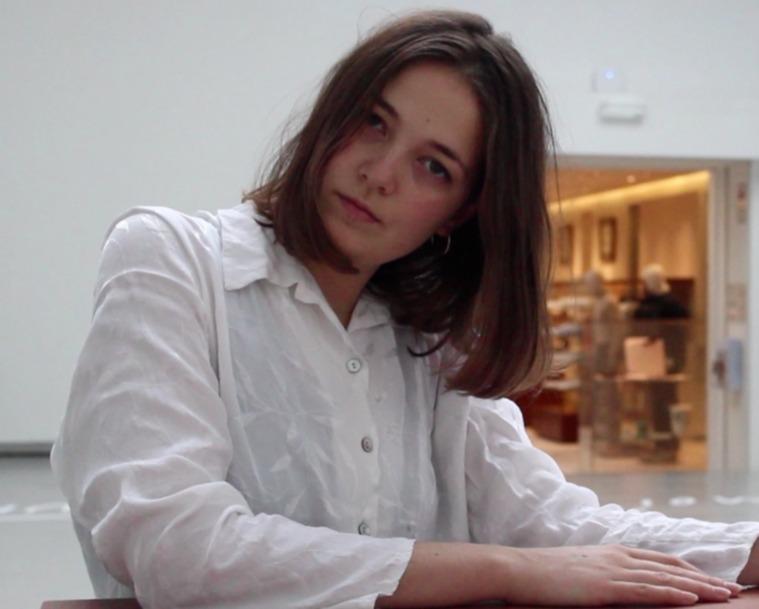
clear grab to hold the spectator, the time it needs to be in contact with art. Like communication. I often question spirituality and devotion with peculiar humour from what stands there as a statement and why? I often want a serious matter of concern to show up in the presentation even making fun of it, like a bad joke. From raw situations, either with found objects, raw materials or crude images, I want to involve melted, complex, infected gift to the spectators. I'm not sadistic, but I like to work with feelings. The first impression is crucial.
As you say, immersive might be something I like, weather, it's because the whole space around is built up, or because it is 'in situ', or when a performative state starts to spread out from the art piece.
I want that, for the spectator to see art as one solution of the surrounding, not only distant artefact.
usual workflow and process, we would like to ask you if there are any central idea that may define your artistic production.
"Ho, it's all so quiet!"
I can't manage to waste the time of the viewer. I want an instant impact, or a very
has drawn heavily from the specifics of its locations, both: we have highly appreciated the way you have created such powerful resonance between space and choreographical gestures: how do you consider the relationship between movement and space? And how did the locations affect your shoting process?
At that time I had an urgency for creating an aesthetic without meaning, without purpose as I was working with an NGO on very serious and tragic footages of
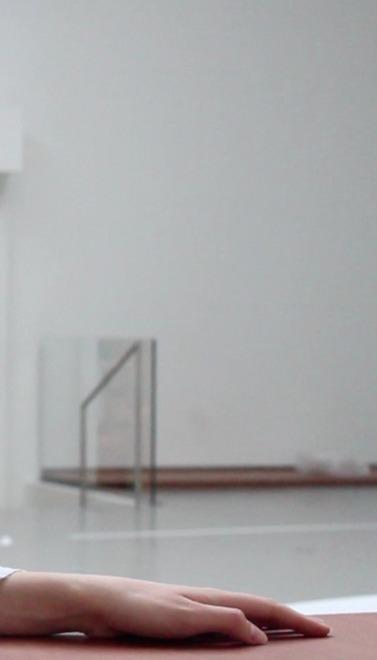
chemical weapons and their direct consequences in the war in Syria. Oppositely, I was seeking an intimate relationship from the image to the viewer, soft and simple.
Approaching Portland is an open experience interested in defining a form as a point of view in which to observe the performance. Imagery is impermanent: it alternates black with concrete or abstract visions at a state of remembrance. Celestial forms of abstraction and intention are signalizing forms of life floating out which soon will leave our field of vision.
My interest in the simplicity of the gestures leads me to build my work through economies of means and translations. I was also inspired a lot from the series of Twin Peaks from David Lynch. The aesthetic of the night, the surreal, the digital.
With its unique aesthetic identity, conveys sense of freedom and reflects rigorous approach to the grammar of body language and the tension with the exhibition space, reminding us of Pina Bausch's approach to Tanztheater: To emphasise the need of a bond between creative process and direct experience, British artist Chris Ofili once remarked that the importance of chance, stating that "creativity's to do with improvisation ― what's happening around you". How would you consider the relationship between the necessity of scheduling the details of a performance
and the need of spontaneity? How importance does improvisation play in your creative process?
During the process of Obliterate Project, I spend a lot of time encountering the performers, listening to how we would like to develop something together, individually and later collectively. I also worked a lot on defining a structure for the dancers to allow anything to happen in between. Such as the organisation of the space, which came out to be a form of an exhibition with what it socially implies, some specific physical key moments and music signals. What we're doing mistaking from the situation, raising specific energy adapted to the context, we're listening to the present pieces of information. I had to be selective in the hazardous process as I didn't know where the project would end. Misunderstandings always helping. With dance-choreography, next to how I imagine it could be, I accept improcreation and its limitless power of representation! The rest gets boring and soon not dance-performance anymore. So, how to take the stage still as a free space to improvise a space of allowance between us? Otherwise, errant art. Which I'm okay with but personally I will always need the public to confront directly what is live works. For the projects, I think of for now. On the other hand, with visual art, it's more easy for me to make the whole process a creation. I became obsessed with contexts, how everything can be organised for the ultimate trip! I want the attention to be sharpened like there is no exit. From these elements, you know an
 Obliterate Project 2019
Les Brigittines, Brussels
Obliterate Project 2019
Les Brigittines, Brussels



interaction should happen, yet, not knowing how to approach it.
Some of your works involves objects, as the interesting : would you tell us about the importance of using of found objects and materials? How do you select them and what are the qualities you are searching for?
Of course, this performance is about a meeting, as one could happen normally, but that time, orchestrated around a phrase and Rémi around to talk to and maybe become his new best friend. You are someone, taking forgiven that you are able to talk to a piece of a performance part of an art piece. I wrote with coffee because it was there. I never worry cause everywhere is so stuffed of things, even the thinnest. Let's keep things accessible to us, seeing what's there, just trusting the encounter with the solution.
Creating quirky situations seems to me to be an effective means of bringing my concerns, so a large part of my productions play with assemblages of objects that come to hand with which I interact directly. Let's borrow, rent or steal gently. I could not predict what became more efficient than ever.
Many artists express the ideas that they explore through representations of the body and by using their own bodies in their creative processes. German visual artist Gerhard Richter once underlined that "it is always only a matter of seeing: the
physical act is unavoidable": how do you consider the relation between the abstract nature of the ideas you explore and the physical act of creating your artworks?
Things are temporary. Things that give you emotion are important.
I see the world of objects as cold and defined shapes in front of my body in movement. I consider them trivial, they appear physically, have no more function, nor a concept. I'm interested in the elementary. The way in which I treat most of the elements: water, light, sound, food ... I sometimes use these elements as bases of my work and they serve me "Safe value". Their fundamentalism allows me to consider them as the foundation of my practice. It's a landmark for me at some point in my production.
From the selection of work that I consider is important to do, there's an important focus on re-embody some deformed mythologies, believes or stories. Those need to publicly announce something to not kept shut down. A necessity from the deads, from the trash of the world, to express a last sign of agony.
We daresay that your works can be considered a combination between understanding reality and hinting at the potential of unknown: we daresay that your artistic practice — and in particular Introduction to the Dharma Words of Master Lu — seems to aim to look inside of what appear to be seen, rather than its


surface, providing the spectatorship with freedom to realize their own perception. How important is for you to invite the viewers to elaborate personal meanings? And in particular, how open would you like your artworks to be understood?
I dare to say that the unknown is everywhere, we have all our own way to modulate it. If our vision is a happy version, cool! I think I'm at a point where I don't laugh so much, only maybe when things come to be stable or there as a statement, I find them intriguing and that's where I'm stepping over, not being able to be serious in my way, with videos, texts, and performances.
It helps me to understand a distance between how I feel: bad, sad, irritated, exhausted.. with what I see and finally what I come up to, with fun over something weirdly serious. It's a funeral celebration, a vivid ceremony, the theatre of an outrageous adaptation.
Some of my works are open critics. There are as a judge, so obviously, it might not always be easy to receive them as such but to see that the present statement is simply a reaction to the world appearance, it's not me or my work to blame but the rest around.
Also, I hope that the work could talk for itself, that you can get it well, easily. With visual work, I wish to touch individuals at the same point. I can change this slightly with the way to instal or to introduce the work. On the other hand, with more

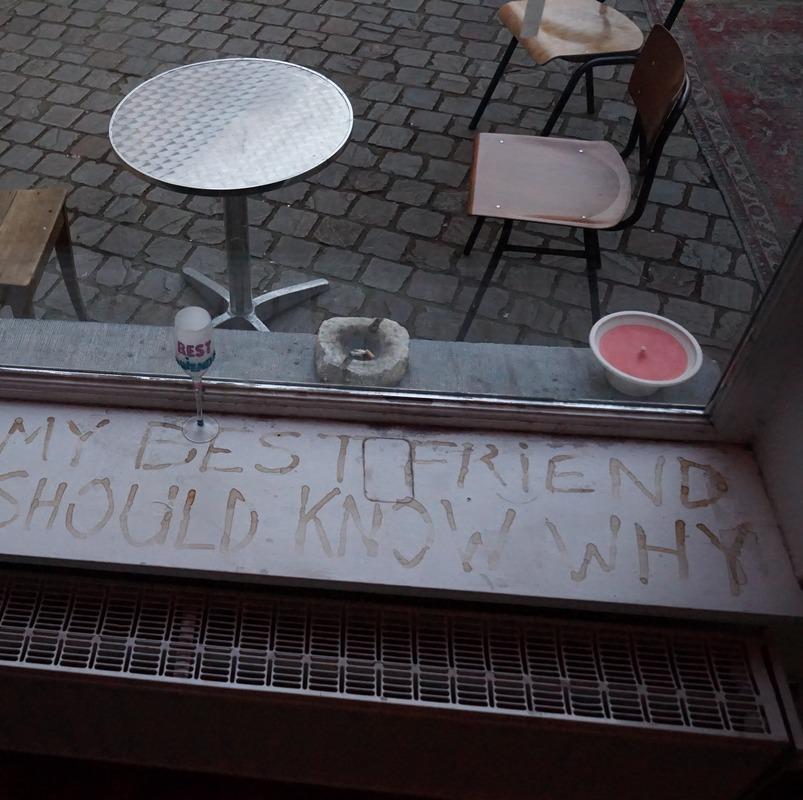
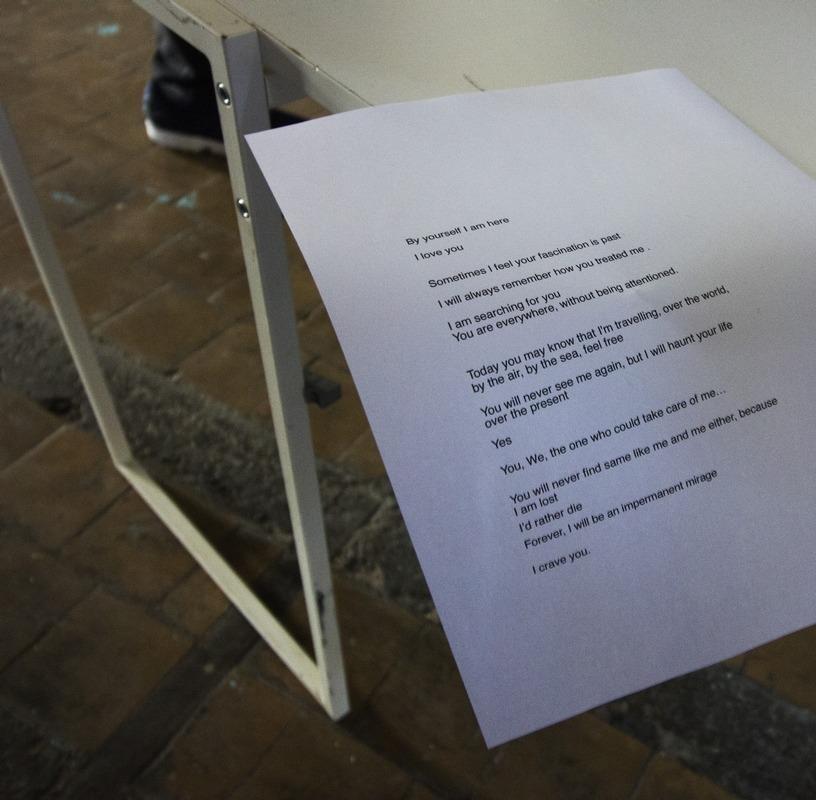
complex projects like exhibitions or performances, it's harder to say where I wanna get the spectator to, cause they are made with numerous ideas. Meanwhile, I'm always motivated in talking about art through art, engaging significant distance and discourse about the process, the product or the purpose and not leave this a matter for granted.
Mexican artist Gabriel Orozco once stated, "artists's role differs depending on which part of the world they’re in": does your artistic research respond to a particular cultural moment? In particular, do you think that artists can raise awareness to an evergrowing audience on topical issues in our globalised age?
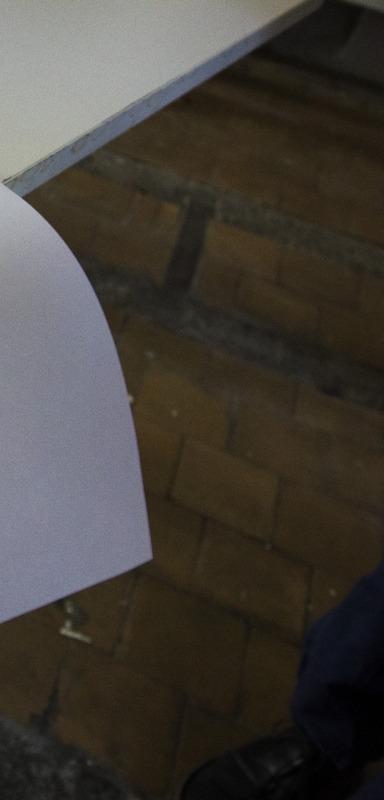
With today's Instagram influencers, I hope some 'nice' people could lead movements in 'better' directions, honest and fair. But it isn't in any way the responsibility of the artist to bring something to clear up this world.
Trash world. Art can serve as a mean for any purpose from anyone, but not every artist are willing to inform the other of bad news. Sure, art can bring a possible distance, a step back or aside, a time for reflexion, a time for peculiar experience, deconstructing contexts, aesthetics, reconstructing ways to embody the world.
You are an established artist and over the years your works have been showcased in several occasions: how
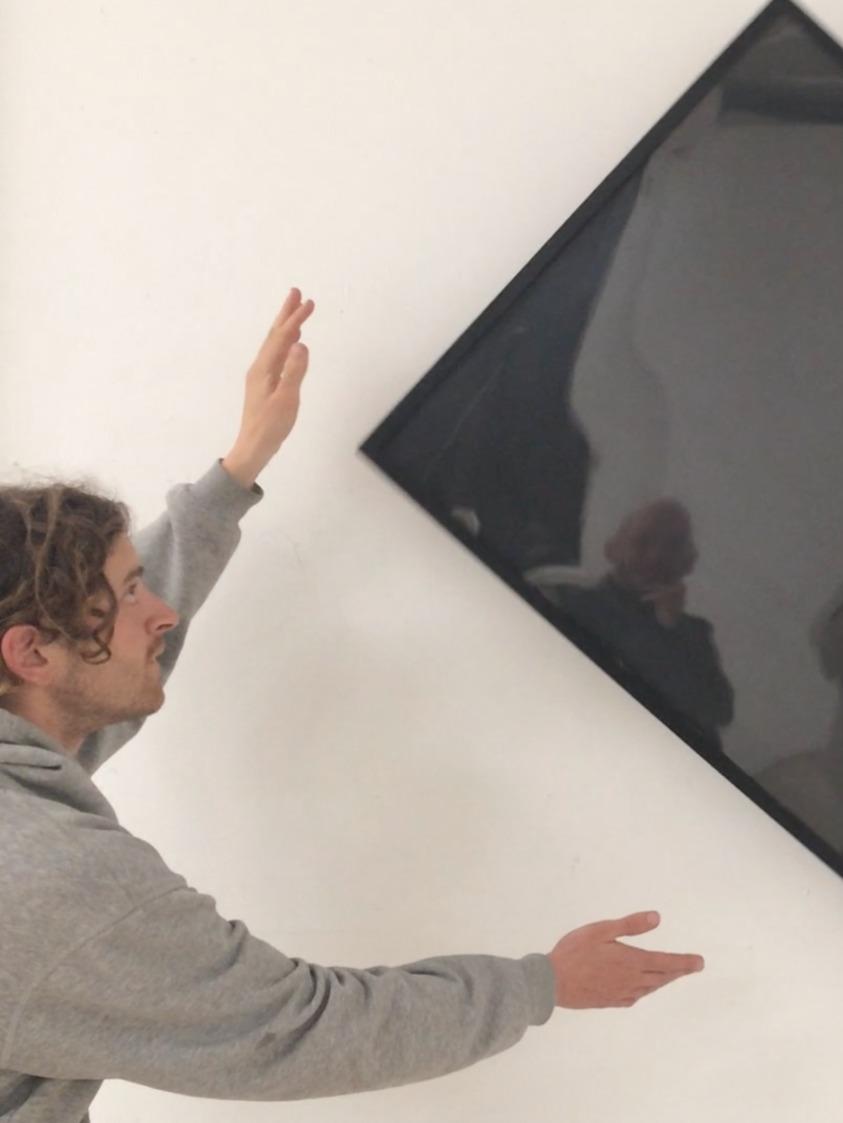

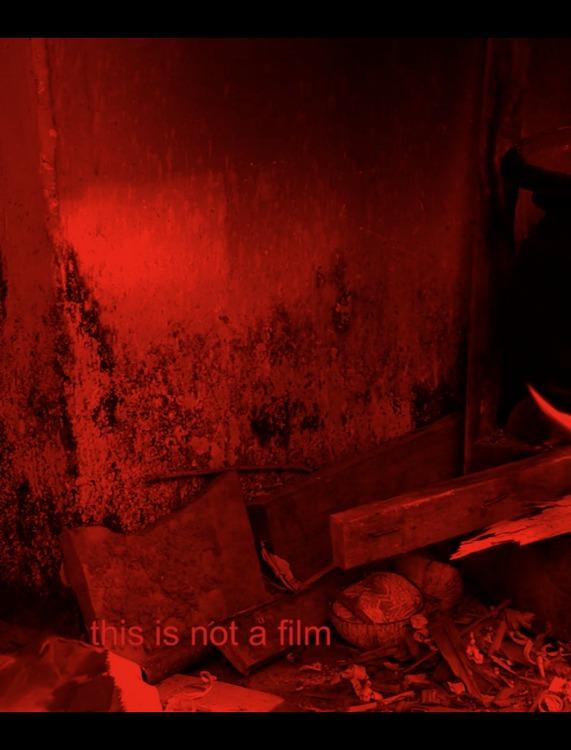
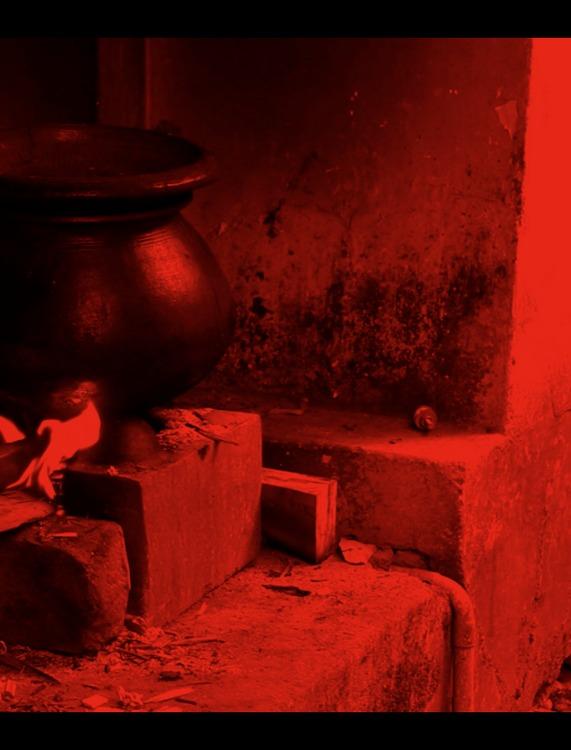

do you consider the participatory nature of your relationship with your audience?
Direct relationship with the audience in a physical is definitely the most important one, in order to snatch the spirit of a work of Art. However, as the move of Art from traditional gallery spaces, to street and especially to the online realm increases: how would in your opinion change the relationship with a globalised audience?
I think today's distance of people with their environment, by the culture of untouchable systems and instant live posts, is crucial in how I organised my practice and in the way that I consider the relation of an art piece to its viewer. An instant discussion considering instant made story, things talking by themselves.
I might help materials to express sometimes. Or on the contrary, an aesthetic cleanup, bringing an experience out of any thought for a moment! Before starting to seek what's behind the curtain.
Eye contact is enough, or if further than this, doesn't have to be interested in any physical involvement from the spectator. Maybe to allow them to move, taking the circulation as part of the general composition. I like that the artwork wants to challenge the perceptions of status, scale, attention, so to consider the spectator super active and aware of its condition.
We have really appreciated the multifaceted nature of your artistic
research and before leaving this stimulating conversation we would like to thank you for chatting with us and for sharing your thoughts, Shankar. What projects are you currently working on, and what are some of the ideas that you hope to explore in the future?
I'm currently working on an exhibition about archives and paper materials I'm gathering for a few years. It's closely linked to a forty pages text about the 'loss of the sensible experience' where questions are asked about effects of subversion, fake, pomp, double-sided, sometimes derisory processes or mechanisms of society that give rise to a vision or even fictional explanation of the backside of the set. That eventually, will follow some editorial rules for a general organisation while exploring a paper installation, some videos and audio interviews and a scenography, drawn on alive bodies.
I'm also working on opening a program of residency in Kerala (south of India) for international artists and more. Thinkers, writers, philosophers. In a traditional house, meeting the culture and local artists during a three month period. I wish it could be an opportunity to connect those artists with galleries in India and some contemporary events like the Kochi Muziris Biennale.
An interview by Josh Ryder, curator and Melissa C. Hilborn, curator peripheral.arteries@europe.com
When I went to study abroad in England I did not take my painting canvas with me. In Winchester School of Art I could borrow the best photo and video gear available, so I started to focus on performance and self-documentation. Changing the medium from painting and drawing to performance, video and photography happened by chance – like a fun experiment with my friends – and it shifted my interest when choosing the medium for my artistic expression.
There is a special relationship between my artistic practice, the work I do and the objects I personalize. Stories that evolve from it are connected with the amount of time I spend in a certain place, building or with the relationship I establish with a certain object, that I usually name and give it a personality.
In my performances I emphasize movement, rhythm, dance. As a museum attendant I know the exhibition spaces better than other visitors and I spend more time there too. With this I carry the full responsibility to take care of the exhibition halls and the artworks exhibited there. I also have access to the surveillance camera system, that I can use as a “mirror with a delayed effect” and the delay allows me to save the videos and manipulate them later.
I play in my works. I create comic situations and movement in Moderna galerija, that are not limited only to the institution where I work. I plan to perform in museums and galleries home and abroad, like I have done in Albertina museum in Vienna, Austria in 2017. When I introduce a music background the usually humorous footage transforms and carries a different emotial charge, that depends on the music and the spectator. The whole presents a rather personal narrative, underscored by the looped video, the layered images, and the deformation of the video format.
I am interested in new technologies, that is why I always strive to learn new techniques in order to manipulate the images in the best way possible (like 3D animation) and to animate them into short dance loops.
I suppose we are all trying to leave a mark in this world we live in and to document and save our physical presence. Most of the time this is only interesting to us and our parents, but I wish to use my narcissism in a way that might be interesting to somebody else as well.
Hello Nika and welcome to Peripheral ARTeries. Before starting to elaborate about your artistic production we would invite to our readers to visit http://www.instagram.com/klausvonhahm in order to get a synoptic idea about your artistic production and we would
start this interview with a couple of introductory questions. You have a solid formal training and after your studies at the Winchester School of Art in the United Kingdom, you nurtured your education with an MFA, that you are currently pursuing at the Academy of Fine Arts and Design in Ljubljana: how did those formative years influence your evolution as an artist and help you to develop your attitude to experiment? Moreover, how does your cultural substratum as well as your experiences

of collaborations with Laibach art group and your works for Moderna Galerija in Ljubljana direct the trajectory of your current artistic research?
Nika Von Ham: To be honest - while I was studying at the Academy of Fine arts in Ljubljana, I was a die-hard traditional painter. I practiced realism and I did many portraits, because I considered it to be one of the most difficult things to achieve in painting. Not only to catch the resemblance, but also character of the person. I didn't even have a smart phone for quite some time.
The real shift happened when I went to Winchester. There I was able to borrow anything from cameras, TVs, I could do screen printing etc. We never had that in Ljubljana. I also met a lot of interesting artists, so I was drawn into performance by my friends and artists there...I actually did my first collaborative performance there. I started to focus on my own body and selfdocumentation. I experimented with everything I could and learned a lot, so when I got back to Ljubljana I was more open minded about new artistic approaches.
That's how I started with video and animation. I learned everything with Youtube tutorials and started to make 3D characters and animated them into short dance sequences and later posted the GIFs on Tumblr. I was amazed with all the possibilities of this medium...I could make anything I want and make it move the way I want. "Do you want raining fish from the sky? - HERE IT IS!" It's that simple! (well it gets this simple once you learn all the programs for video, animation etc. editing)
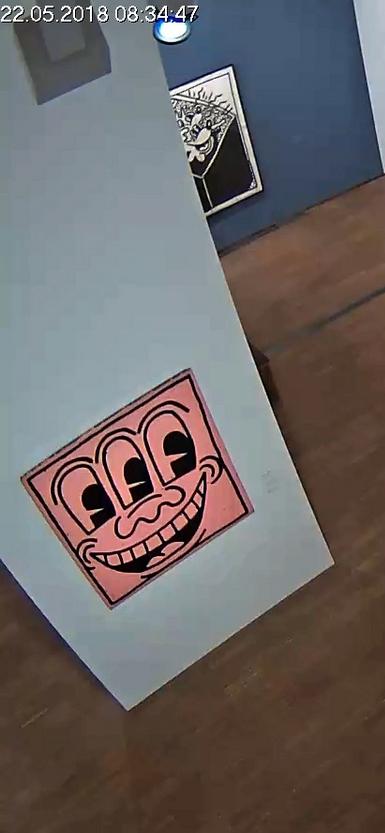
Moderna galerija is a place where I as an artist really started to understand how the system works. I was directly involved with the art scene in my town and met (mostly) everybody who is anybody - from artists, curators, directors, ministers,...and also Laibach. I always admired their aesthetic and concepts. We became really good friends and I guess you can say they thought me a lot about life in general. I gained confidence and started to take more risks.
I guess Moderna galerija was a place where everything started to get together...for my personal and professional practice.
For this special edition of Peripheral ARTeries we have selected SQUAT, a stimulating project that our viewers can view at https://vimeo.com/327058288. What has at once impressed us of your insightful inquiry into the tension between the artist’s body to build a relationship

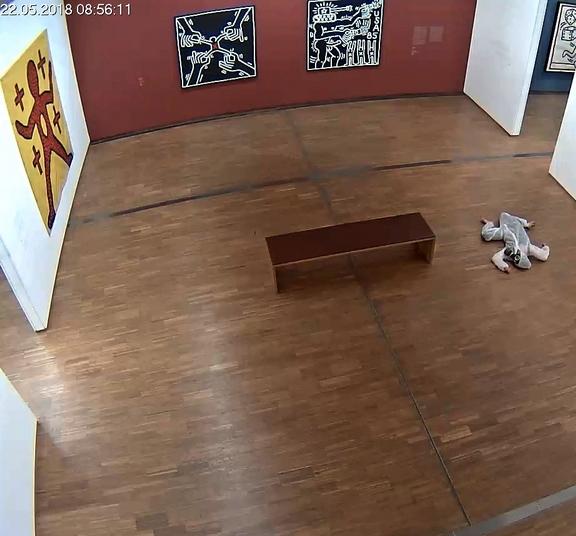
with the space is the way you provide the viewers with such a multilayered and enhances visual experience: when walking our readers through the genesis of SQUAT, would you tell us how did you develop the initial idea?
Nika Von Ham: When I started working at Moderna galerija I was a museum attendant. So I was just sitting there all days and looking at the space and the art. I was there so much it felt like home (I was actually at work more than home). When I am at a certain place for a while I connect with it in a way…I could say I personalize it…sometimes even talk to it as if it was another human being. The space is a friend.
I was soon appointed to the position of a receptionist...and there I had access to the surveillance system of the museum. We had really old cameras installed at Moderna galerija and the footage was glitch, in bad resolution…kind of retro. I loved it. I sometimes stayed at the museum until late hours of the night, and I started to joke around, did silly postures and moved myself around the space in an unconventional way. At first, I was just goofing off and entertained myself to pass my boredom. I was just sending these funny GIFs to my friends. When I had A LOT of material I started to look at it as a possible artwork. I decided to propose the project to Aksioma - the institute for contemporary art, Ljubljana. It got accepted and I got the support I needed to make Skvot happen.
Skvot (in Moderna galerija) is a guerilla performance...so I did not ask for permission. I just started posting the videos on social media (Facebook, Instagram, Tumblr, Giphy).
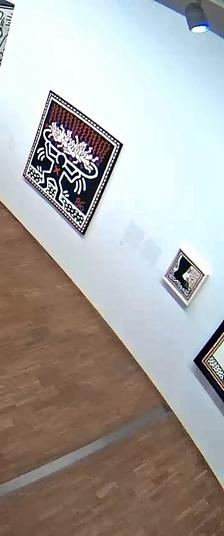
Honestly, I was quite nervous about what will happen when the director finds out. So, after a few days the deputy director called me. We had a meeting where I explained what this is and after the second meeting with the director I got a green light to continue (and keep my job). The project with Aksioma (with additional support from the City of Women Festival) lasted for about 3 months in which time we also produced flip-books that show a few selected GIF sequences on each side. We even started selling them at Moderna galerija, Museum of Contemporary art Metelkova, Mesta galerija, MGLCInternational graphic center, ...
This "guerilla performance" was quite quickly institutionalized I must say. It was almost too easy.
We have particularly appreciated the way SQUAT deconstructs the quality of the ambience of the Moderna galerija, in the Ljubljana’s Museum of Modern Art, to create a personal narrative that subverts the categories of the space: how do you consider the relationship between the act of performing
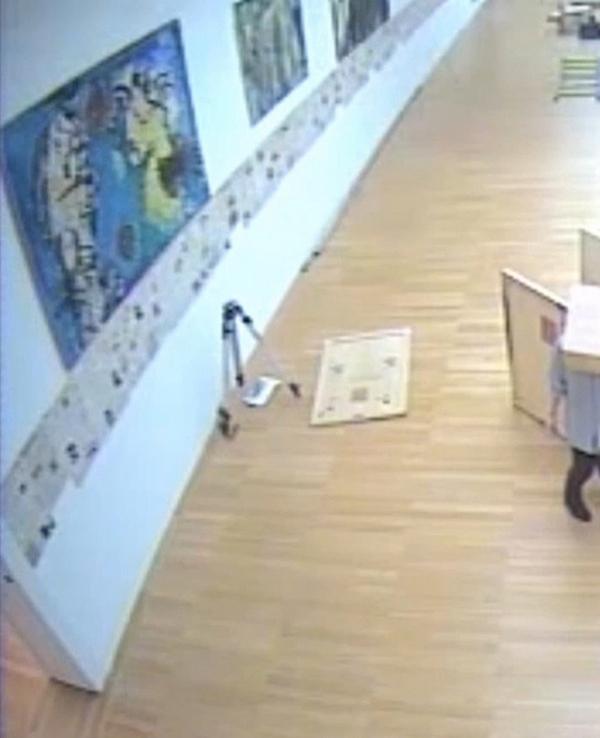
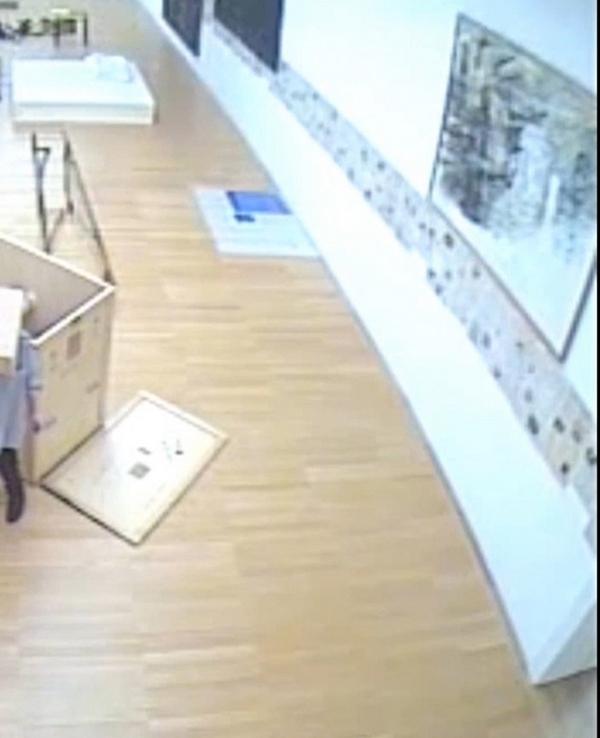
and the exhibition space?
Nika Von Ham: I would say that the relationship co-exists in my work. The act of performing revolves around the space I occupy. Meaning I take into account the physical barriers (walls and objects / artwork in the space) when I move across the space. The space also influences my actions when it comes to what I do in the space (in
reference to a current exhibition).

But there is absolutely a difference between my Squat performances in Moderna galerija where I work and other institutions I visit (like the Albertina museum in Vienna).
Moderna galerija is my "home". I am there so much that the exhibition space is like my living room and I stay
there many times completely alone. The space is different when the visitors are gone and I act differently in this space because I know it so well. I can almost walk through the space with my eyes closed. I actually tried that once and made it across the hall.

In other institutions I have to obey their rules in order to get access for my performances. For Albertina I got a
fixed schedule when I can do my performances and I did not have access to the surveillance room (like I have in Moderna galerija). There was also an attendant constantly watching me. So, when I was done, I gave them my external drive and got back 2TB of material. I spent quite some time getting over the blank tapes and to find the ones that I could actually use. It took almost a week to get a few minutes of footage out of
it. It was worth it. But before I went to perform in Albertina I spent quite some time there in order to get to know the space and to see how the surveillance cameras were installed. I scanned the exhibition, the artwork and the space so it became more familiar, but like I said...it can't be the same as my home base. There I was just a visiting guest that got cozy and homey for a while...like a vacation home I guess. But then I went
back home.
Marked out with such unique visual identity, your artistic research deeply struck us for the way it reflects the the need to explore the unexpected, to incite the viewer to make new personal associations. Austrian Art historian Ernst Gombrich once remarked the importance of providing a space for the viewers to project onto, so that they can actively participate in the
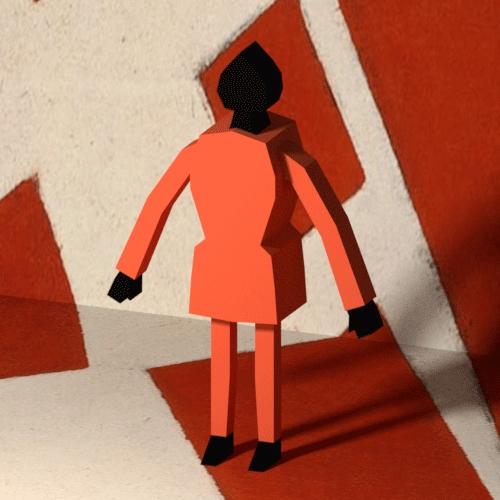
creation of the illusion: how important is for you to trigger the viewers' imagination in order to address them to elaborate personal interpretations? In particular, how open would you like your works to be understood?

Nika Von Ham: I would like the viewers to laugh. I think humor is extremely important in my life and in my art.
When the viewers see the videos from the museum I want them to understand the space as something inviting. Usually it is a space with strict rules and the visitors behave in a certain way, because they always know they are being watched. When I break these rules, it is very playful and it takes the "seriousness" out of the normally conformal space. Secondly, I want the museum space to be understood in relationship with my
own body. It is a symbiosis in a way. I kind of feel the space I occupy when I lay on the floor, ride around in chairs on wheels, smash myself into the wall etc. I befriend it and allow myself to even get bruised and scratched a bit. It's all love. I of course do not invite other people to do EXACTLY the same, because that is not really safe for any museum. But I do invite them to view the space differently, more playfully and to feel
less dominated and overwhelmed by it. For my other works it is about the relationship between traditional art and new media art. So old combined with the new. The place of exhibiting is an online platform and a gallery space. The audience is different and the meaning also changes when a video is posted online or placed in a gallery or museum. Video in a museum is institutionalized, sort of restricted and appropriated for
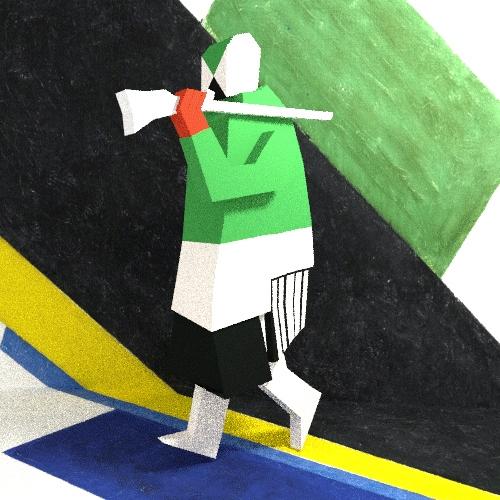
the space it occupies. Video that is posted online is more free and open to many more different interpretations that it gets from online participation (likes, shares, comments, tags,…)
But I think art should always offer individual interpretation. If a person just wants to see a silly girl throwing herself around the museum floor or does funny
videos...that's fantastic! Some might share my video and reference it to their current mood or as a visual reference for their own commentary on absolutely anything they want. This kind of participation makes my videos visible and they become a communication tool. Digital-visual society is more used to this kind of communication anyway, so when (my) art enters into the public sphere / use and is being appropriated to ones
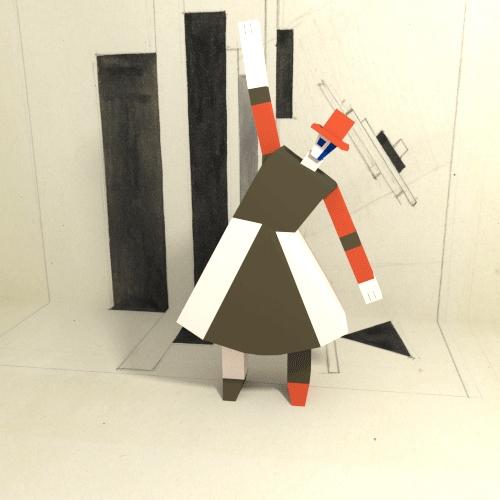

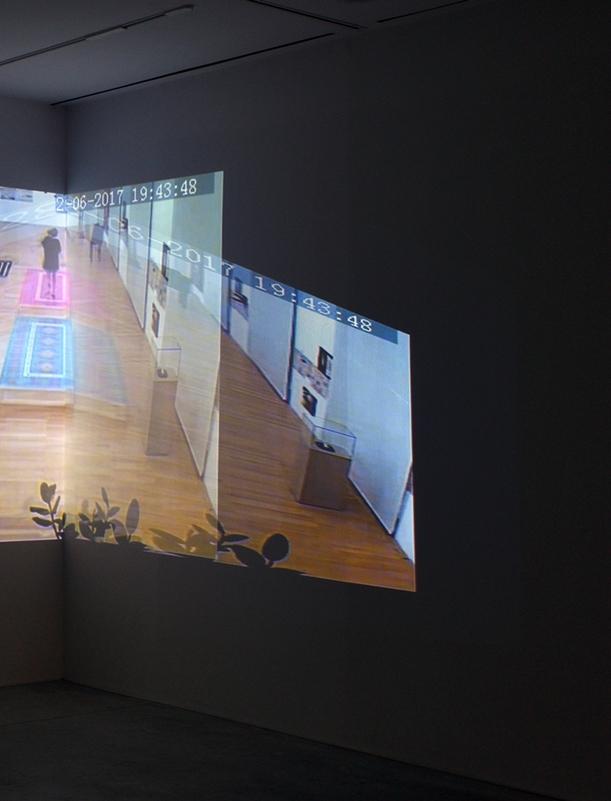


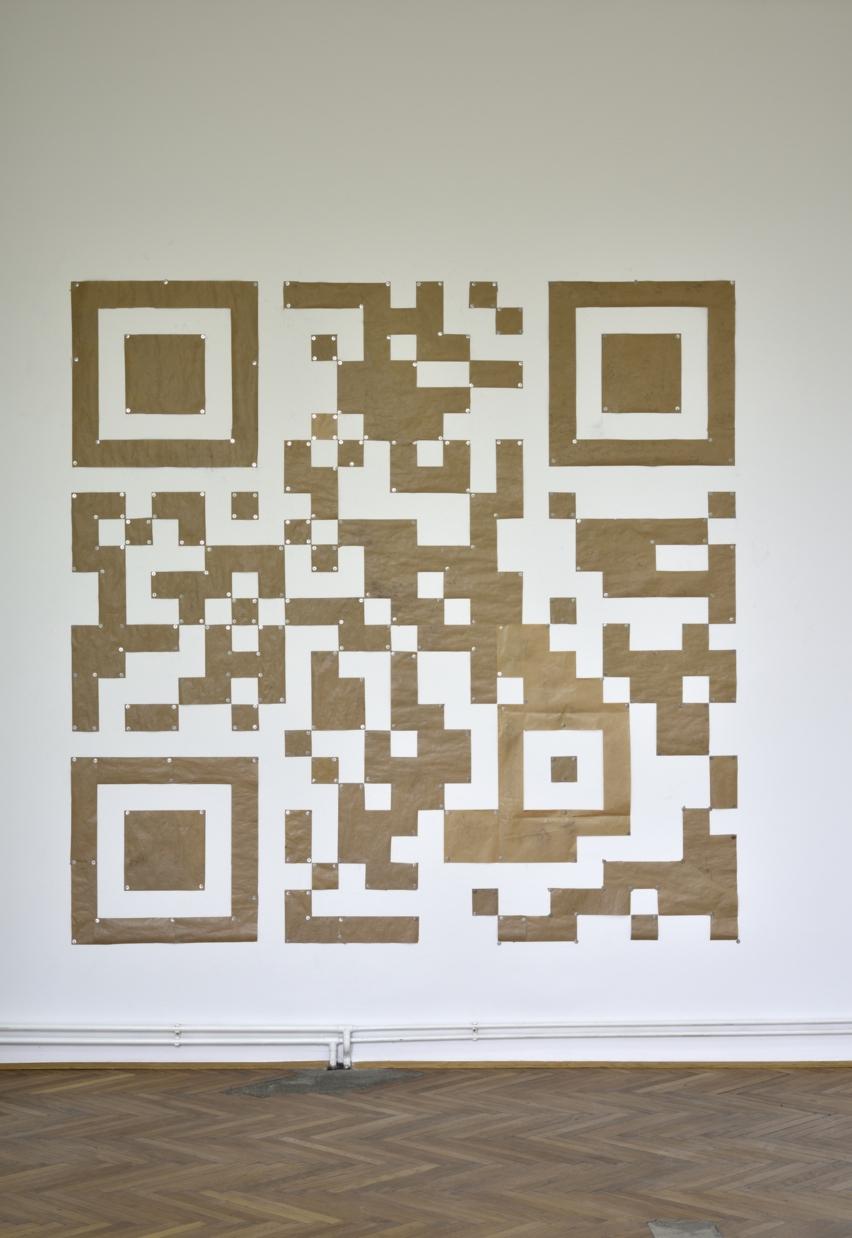
individual desires - I consider it a success. You are a versatile artist and your multidisciplinary practice includes performance, drawing as well as video and animation, as the interesting Victory (Over The Sun) Dance: what does address you to such multidisciplinary approach? And how do you select a particular discipline in order to explore each aspects of your artistic journey?
Nika Von Ham: I love to learn. When I get a particular idea about what I want to do I just find a way to do it. This meant I had to learn video editing, graphic design, 3D design and animation programs in order to make my ideas into reality. For the work Victory (Over The Sun) Dance I just wanted the characters dance - so I animated them to do so. I loved Maleviches rough drawings and the bulky / boxy bodies of the characters. Quite funny and aesthetic. When they move (being an actual play with costumes or my 3D digital characters) they get quite awkward and clumsy which is even funnier.
I think the 3D digital design of the characters is something Malevich would have had in mind if the technology was available at that time. At some point I want to reconstruct the entire opera Victory Over The Sun and add different music to it. But that will take quite some time…
My background in fine arts helps me with these new shifts into digital art. You think about perspective, proportions, colors, light,...the video or animation as a moving painting. And I have a digital canvas which has a fantastic cmd+c, cmd+v, cmd+z option / shortcut. I can make a drawing come to life, which brings me joy. And in some way, it is much more approachable to the digital society that is more drawn to animated pictures.
Mexican artist Gabriel Orozco once remarked that "artists's role differs depending on which part of the world they’re in. It depends on the political system they aree living under": as an artist particularly interested in exploring political topics and current social situations, how do you consider the role of artists in our globalised and media driven contemporary age? Moreover, do you think that your artistic research responds to a particular historical moment?
Nika Von Ham: I think the role of an artist is to address the current social and political situations and to present and make these heavy topics approachable to the public. In modern times the world is more connected, so
we hear about everything online or in the news. The places that are really far away do not seem to be so far, because we hear about it, see pictures, videos and communicate with the people living there. So, it's not as foreign and is more approachable as it was 20 years ago. The means of communicating and showing your work and ideas is much easier, but because of the globalized and media driven contemporary age, your ideas can get buried under the mass amount of information. So, an artist that wants to be visible must find new and interesting ways of presenting him or herself in order to stand out from the crowd. If his / her work is interesting enough the online public will make sure that it is visible (sharing the content, commenting, promoting,…). Even the most remote artist can have a chance for their work to be seen.
But because of this openness the role of an artist changed drastically. Not only the option to share their work as they see fit, but the artist also has a new role of a self-promotor. So, you have to build up your (online) persona and "sell" yourself. It is not so much about the art, as it is about your image as an artist. You have to engage into conversations, participate in events, write texts, be responsive all the time and on constant alert. That part is quite demanding, so you might not focus on the actual artistic production as much.
Museums and galleries want to showcase different cultures and mediums, so their platform became more open and inviting to new practices and a younger generation of artists. The times we live in are quickly changing the way we perceive an artwork and it became less traditional, more participatory and inviting different generations of people, social classes, sex etc. to be fully involved in this era. The entire infrastructure of the museum adapted to its new function as an "entertainer". With all the workshops, lectures, events, openings, coffee shops, openings, parties…the museum is a fun place to be even if you are not particularly interested in art. The role of an artist changed, because the public changed and is more open to new ideas and new artistic approaches.
The role of an artist can be really influential...especially with the reach they have via social media that basically brought up a generation of its users. They can share ideas, influences, visuals etc. that can shape ones opinion. Artists can have a mass online following and sell and exhibit their work like that. No middleman, which is quite liberating. But online is not the same as
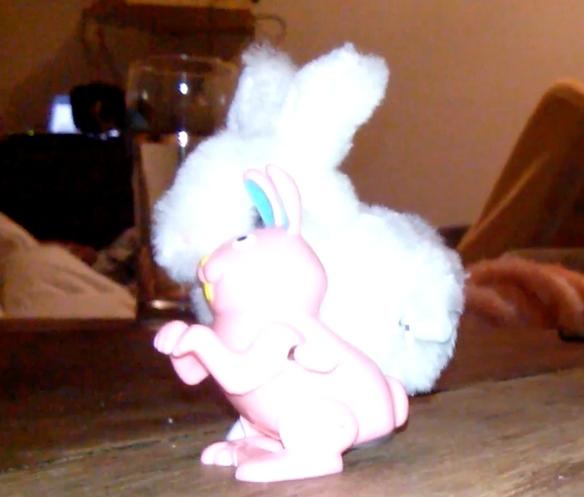
the physical experience before an artwork that is exhibited in a specific way and takes into account the space it inhabits and the viewers that will enter the space. But because it's not possible to see everything in person, the online thing works pretty good.
I think my artistic research reflects the time we are in now. We live in an era of mass surveillance, narcissism (meaning the culture of selfies and social "influencers"). I do the same basically, but using "unusual" means of documenting myself. I sometimes look like an idiot and I love it. When I am intrigued by something I document it and later think about why it was interesting to me in the
first place. If the idea and the execution of it is good it will get picked up by the audience and / or an institution. Video Spot highlights the relation between your artistic work and your “day job: how does your everyday life's experience fuel your artistic research?
Nika Von Ham: Life and art are connected. My everyday life influences my artistic practice and vice versa. I am in the position of an Artist at work, which usually means that the artistic production is sometimes left behind. Everybody needs to pay the bills and sometimes you are too tired to do the actual art. But in my case, I tried to achieve the impossible and combine both. I actually
succeeded with no bad consequences.
In Video Spot viewers see clips that are staged / performed for the camera, as well as moments that just happened while on the job. I like to push the boundaries of what I can do (that is normally prohibited) and still get away with it. In the end you can just call it art and it should be ok - in contemporary art absolutely everything is allowed as long as you can put it into the context of your art. I can bring a dog, smoke or run through the exhibition even though I keep telling people they are not allowed to do that while I am "on the job".
In Video Spot I collaborated with an amazing American musician Alicia Enstrom. I was really interested in combining my videos with music and her soundtrack really made the piece what it is. The violin adds and eerie mood to it and can seem less funny than the short subversive actions from Squat. At least that's how people experienced it… I still think it's funny. But this work is meant as an installation piece. The actual "music video" is one aspect of it (since it is also made for Alicia to use for her own promotion of her music), but the work takes a new form when presented in a gallery space. The music becomes secondary to the video (usually it is the other
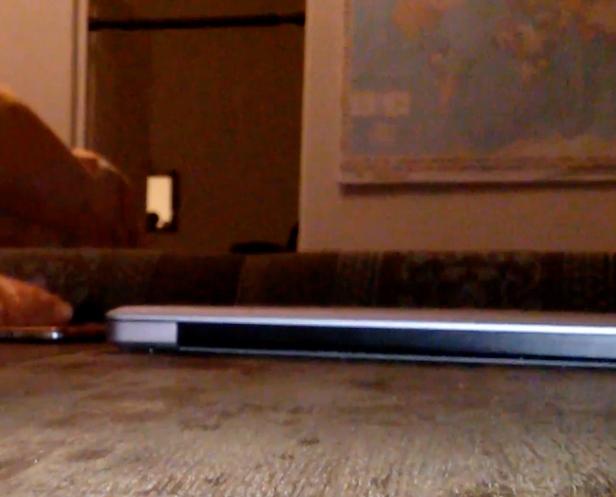
way around), and with the use of two projections overlapping creates a different view of the work that is adapted to the space it occupies. Like I adapt my body to the exhibition space when making these videos in the gallery, I also adapt the video to the gallery space to create an "ambient".
Me being an artist and the place where I work being an art institution is of course relevant. I am surrounded by art and the people involved with art...so I am actually in the best environment for a young artist to be in. It has influenced my artistic practice and gave me more confidence to live in the art system, since I am in the belly of the beast...
But being a worker in an institution and also being an artist that wants to get into the institution can also create a conflict. But a conflict can be a great thing to include into my future art, so everything is good.
Another interesting work of yours that has particularly impressed us and that we would like to introduce to our readers is entitled Bunny and friends. Shot during your stay in Vienna in 2017, this stimulating video questions the unbalanced relationship between the materic quality of objects — as the drawings that you have reshaped — and the ethereal digital world of internet. How do you consider the influence of the digital realm — along with new symbols as QR codes — in your artistic research?
Nika Von Ham: The drawings I used for Bunny and Friends were my old life-drawing sketches from my time at the Academy in Ljubljana. They didn't really have a purpose anymore, because they were a side product from my studies. Not really art, not really trash. The paper I used as a background for the drawings was basically cheap wrapping paper the Academy bought in bulk for the students. It was the only thing we got for free. I saved my drawings in a basement and they were just...there...for many years.
I thought it was a great way to re-use them and actually give them a purpose, to exhibit them. It was a throwback to my years at the Academy and my parting with it in a way. The use of this "old" medium changed and was adapted to the technological era we are in. This physical drawing actually takes you to the parallel universe of the internet. It becomes data, a receiver – an instrument to take you to the digital world.
So, the work Bunny and Friends is an installation piece (the QR code) that takes you to a video. The video from Vienna
shows the wind-up Chinese One-Dollar shop toys that I played with at a friends party. I loved the toys and I just kept winding them and let them race across the table. It really reminded me of my performances in the museum, where I also had a limited surface I could move across and I had barriers (statues, benches, walls,...) I had to avoid. The same as Bunny and his friends. Again, this physical object (toy) becomes just bits of information in the computer and internet. What we see is not an object, just some pixels on the screen.
So to sum up, I like the combination of everything – the physical, the digital, the new, the old. I think that combination reflects the times we live in perfectly.
You are an established artist and over the years you exhibited widely in several occasions, including your recent solo exhibition DRAUGHT / ATTENDANTS IN THE DRAUGHT SERIES at the Museum of Contemporary Art Metelkova, in Ljubljana: how do you consider the nature of your relationship with your audience?
Nika Von Ham: My work allows the audience to create their own interpretation of it. Sometimes it is of course suggestive, but overall, I just want my work to intrigue the audience and give them space to think. At first glance it may seem straight-forward (which it is in a way as well), but you can dig deeper and find some things even I didn't know were there.
At the DRAUGHT exhibition I showed just one workVideo Spot. I wanted to keep it simple and just play with the projectors in the space in order to create overlapping videos and to distort the footage that can be seen in full online. It didn't make sense to just project the work straight onto a wall…that's a cinema. I had to think about how to present the work in a new way…intended for a gallery space. I had to think about the audience / visitors of course. How to make the exhibition more interesting so they will stop and see the work separated from other art in the museum. The space I occupied was isolated, so you had to step in and take a few minutes to watch the full (music) video. The video installation was successful and it really transformed the space.
So when I think about the relationship with my audience I think about it in two ways actually – one is when I present the work to an online audience (here I have to use the horrible # and share the video to reach people...it's a different way of communicating) and the other is when the work is exhibited (here the audience is very selective –

 Nika Von Ham
Nika Von Ham
only the ones that come to the museum / gallery will see the work).
But I guess I just want a gallery or online visitor to be intrigued by my work enough to stop and to look at it. The attention span of an average person is very short, so if my work can stop a person to actually SEE. I have done my part. If later that person also THINKS about it...well I have won.
Direct relationship with the audience in a physical is definetely the most important one, in order to snatch the spirit of a work of Art. However, as the move of Art from traditional gallery spaces, to street and especially to the online realm increases: how do you consider the role of emerging online technosphere — and platforms as Instagram — in creating new links between artists and worldwide audience?
Nika Von Ham: In the age of social media, the artists have a chance to showcase the work to a bigger audience and worldwide. In this case I would say it is extremely important. Everything is more approachable and you can find and follow a variety of artists from every part of the globe. Artist can make their own statements that are freed from the curatorial process…they are their own curators of their online galleries. Art can also be freed of too much context that is usually needed if you are part of an exhibition.
But because of the pressure of "likes" and "followings" on social media, the artists (sometimes unknowingly) succumb under this pressure and what they showcase on their online platform reflects the desires of the public. So, the art is made in order to get more public approval which destroys the artist in a way. He / She becomes the product for commercial use in a way...of course that is not always the case. It is also a breeding ground for every amateur to become an "artist". I don't mind amateur art production, but I think today EVERYBODY is an artist. It's overwhelming. People mostly do not differentiate from the "professionals" that work and make money from it (it is a job) and "amateurs" that just draw when they are bored or make some pictures with their iphones and call it #art. Professionals from the industry know the difference of course, but the rest of the people do not always know…they don't care really…I guess I shouldn't care either, but I do find it misleading in a way.
The art can also be easily stolen, copied or appropriated by anybody. Recently we have seen headlines about famous musicians copying artist for their music videos
and not asking / giving them credit. That happens a lot and I think it's good. The images / video / music or whatever we create is a copy. Either from nature or other work we were influenced by. Consciously and subconsciously. Art is a public domain, so when you create something good and interesting that and it is "stolen" – I guess it means it's good and it made an impact.
There are good sides and bad sides of this virtual connection. But I would say mostly good if you know why you are using the internet and social media in the first place. Of course, there is no comparison to seeing the actual work in person.
We have really appreciated the multifaceted nature of your artistic research and before leaving this stimulating conversation we would like to thank you for chatting with us and for sharing your thoughts, Nika. What projects are you currently working on, and what are some of the ideas that you hope to explore in the future?
Nika Von Ham: I am always doing and thinking about art projects. I am doing some long-term projects with selfdocumentation and body transformation and about my obsessive impulses.
One project also involves a cactus that I took on a museum trip in Vienna, another one a stolen ficus plant, another a bunch of four leaf clovers... And I am doing some video dance projects in between (I am not a dancer, I just love to dance).
I also have a collaborative performance piece in mind in the near future together with my friends / artists involving dance, video, stand-up comedy, interactivity, drag,…perhaps a kids play even...we are all children anyway.
I want of course to continue with Squat, but also to explore other ways of surveillance and control. I would like to learn more about hacking and intercepting wireless signals and to incorporate my performances into it... I guess I could say that I want to "squat" the digital world. I also started to flirt with VR, drones, motion capture...
Considering how fast the world is changing, my interests might shift accordingly. There will always be new technologies I can work with and new ways I can present my ideas.
But my interests in body, space, movement, old vs new will stay the same.
I work between art and science, both by emulating how scientists work and borrowing the visual language with which scientific research is communicated to a non-expert public. I use methods from zoologists to create somewhat convincing descriptions and illustrations for my creations.
At times I have done this to question the authority these depictions are often unquestioningly given, other times in an attempt to borrow from said authority to validate my own work. I do this by playing with scientific display conventions, imitating the style of high-tech visualizations like spectrographs and 3D printing through low-tech craft media like modeling clay, cyanotypes, batik and embroidery.
Heather Beardsley is an American visual artist. In 2016-2017 she was awarded an International Artist Scholarship by the Ministry of Science and Culture of Lower Saxony, Germany. She received her MFA from the School of the Art Institute of Chicago in Fibers and Material Studies in 2015. She has exhibited work throughout the United States and Europe, as well as the UK, Austria, Germany, and Slovakia.
An interview by Josh Ryder, curator and Melissa C. Hilborn, curator peripheral.arteries@europe.com
You have a solid training: after having earned your Bachelor of Arts from the University of Virginia, you nurtured your education with a Post-Baccalaureate Certificate in Fine Arts from the Maryland Institute College of Art, and you eventually received your Masters of Fine Arts, from the prestigious School of the Art Institute of Chicago: how did those formative years
influence your evolution as a creative? Moreover, how does your cultural substratum direct the trajectory of your current artistic research?
Heather Beardsley: Growing up I was told art was a hobby, not a real career path, so I did not go to art school for my undergraduate studies. Instead I went to UVA, where I double-majored in History as well as Art, and as a result, art never felt like a separate discipline to me; everything was just another facet of the same education. I think that the


experience of beginning my education at a research university has always informed the researched-based nature of my work. Like writing a paper or putting together a presentation, art was another way that I would process the information I was learning. Concepts being discussed in my history classes would often make their way into the paintings and drawings I was working on because that felt like a natural way for me to map out my ideas. The interdisciplinary nature of my undergraduate studies continues to shape my art practice today, as I see the role of contemporary art to be more than an instrument of selfcritique but as a field uniquely positioned to discuss and critique other disciplines. By the time I graduated from UVA, I knew I wanted to pursue a career in art, but I didn’t feel prepared for an MFA program so I did a PostBaccalaureate Program at Maryland Institute College of Art. My time there taught me how to think about and articulate where my work fit within contemporary art. Continuing my education in an art school setting pushed me to consider my aesthetic choices more, especially how materials and processes can strengthen the concept of a work.
For this special edition of Peripheral ARTeries we have selected Distorted Depths, an interesting series of cyanotype of recycled plastic on paper that our readers have already started to get to know in the introductory pages of this article. What has at once captured our attention of your exploration of our fascination with with deep sea creatures is the way the unconventional aesthetics of your works highlights our elusive connection with natural environments, in our media driven contemporary age. When walking our
Beardsleyreaders through your usual workflow and process, we would like to ask you how did you develop the initial idea for Distorted Depths.
Heather Beardsley: I began using cyanotypes in my work about 2 years ago. I had played with sun paper kits as a kid and forgotten about it, then rediscovered the technique when I was teaching an art class for primary school students. Over that time I have been making cyanotypes to create secondary images of other pieces I have made, either by using photographic images of works or making contact prints of sculptures and fibers pieces. I came up with the idea for Distorted Depths when I saw Science Gallery Detroit’s Open Call for their exhibition Depth, looking for projects related to the ocean. I knew I wanted to make a work addressing the problem of microplastic pollution, and creating cyanotypes of sea creatures using sculptures made from recycled plastic seemed like a powerful way to forge a connection between the source of the pollution and the animals most affected by it.
It's important to remark that Distorted Depths aims to raise awareness about the growing quantity of microplastics in our oceans, as well as on the threat of microplastic pollution in general. In this sense, your work also invite the viewers to question the relationship between unprocessed environments and human presence. Gabriel Orozco once stated, "artists's role differs depending on which part of the world they’re in": does your artistic research respond to a particular cultural moment? In particular, do you think that artists can raise awareness to an evergrowing audience on topical issues, as
Distorted Depths (series)
cyanotype of recycled plastic on paper 8” x 10”
sustainability and environmentalism, in our globalized age?
Heather Beardsley: I think all artists’ work is a product, either directly or indirectly, of their culture and time. Making art that directly addresses contemporary issues is relatively new for me, and it wasn’t necessarily an intentional shift. I’ve always tried to let my work develop organically, and flow from my present interests. Political developments over the past few years in the USA and around the world have felt to me, as with many other people, like a call to action. I don’t know if it is just the proliferation of social media creating this impression, but it feels like society overall is becoming more politically engaged than at any other point in my
Distorted Depths (series)
cyanotype of recycled plastic on paper 8” x 10”


lifetime, and politics has often felt inescapable. Therefore, even though I didn’t start out trying to make political work, and I don’t consider myself a particularly political artist, I think this feeling of accountability has influenced the way I am thinking about my work.
I do think artists can raise awareness on topical issues, but to be effective we have to think carefully about the context and way that we present this kind of work. Sometimes I see political work that, due to the venue or the aesthetic choices, is inaccessible to people that don’t have a strong interest in contemporary art. There can be an element of “preaching to the choir”, that feels more like the artist is

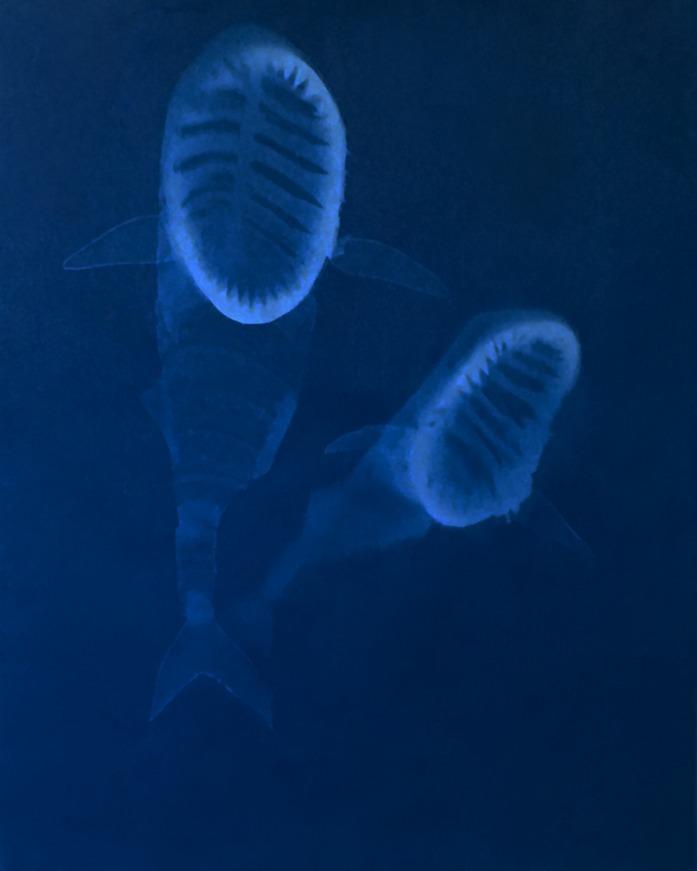
performing their ‘wokeness’ for their progressive community, rather than genuinely trying to raise awareness and shape discourse. One reason I was excited to participate in the Science Gallery Detroit’s Depth exhibition is that the show took place in Michigan Science Center, meaning Distorted Depths could be encountered by many people that wouldn’t necessarily seek out a contemporary art exhibition.
We have particularly appreciated the way Distorted Depths addresses your audience to a multilayered experience and we daresay that your artistic practice seems to aim to look inside of what appear to be seen, rather than its surface. Austrian historian Ernst Gombrich once remarked the importance of providing a space for the audience to project onto, so that they can actively participate in the creation of the illusion: how important is for you to trigger the viewer's imagination in order to address them to elaborate personal associations? In particular, how open would you like your works to be understood?
Heather Beardsley: I often try to have multiple layers of meaning in my work. I feel like my work’s relationship with viewers should be symbiotic, and as a visual artist this means that if I am asking for someone’s attention I should provide them with something that is interesting to look at without requiring any supplemental context. I think it is ungenerous to put artwork into the world that can’t be accessed without having studied art or reading an essay. I want to make work that can be encountered and appreciated solely by looking at it, and hopefully this visual experience entices viewers to want to then learn more about the project and read the statement. The conceptual nature of my work means that this added context will further
Beardsleyilluminate the themes and reward the additional effort made, but I don’t want it to be strictly necessary to have a positive experience of my art.
Technology plays an important role in your artistic reasearch, and as you have remarked in your artist's statement, you use methods from zoologists to create somewhat convincing descriptions and illustrations for my creations: Canadian multidisciplinary artist Angela Bulloch onced remarked "that works of arts often continue to evolve after they have been realised, simply by the fact that they are conceived with an element of change, or an inherent potential for some kind of shift to occur". Technology can be used to create innovative artworks, but innovation means not only that artists can create works that haven't been before, but especially to recontextualize what already exists: do you think that one of the roles of contemporary artists has changed these days with the new global communications and the new sensibility created by new media?
Heather Beardsley: I don’t know that I would go as far as to say the role of artists has changed, but I think it’s undeniable that the effects of new technology and increasing globalization has led to the public consuming media at a higher rate than any other point in history. This means as cultural creators today, we are now dealing with a much savvier audience, which means that our work is being read, consciously and subconsciously, within the context of this ever-expanding media landscape and the references and contextual readings it carries with it. Some artists are addressing these changes more directly than others by adopting the language of new media, but I think to be an effective cultural contributor requires having self-awareness of

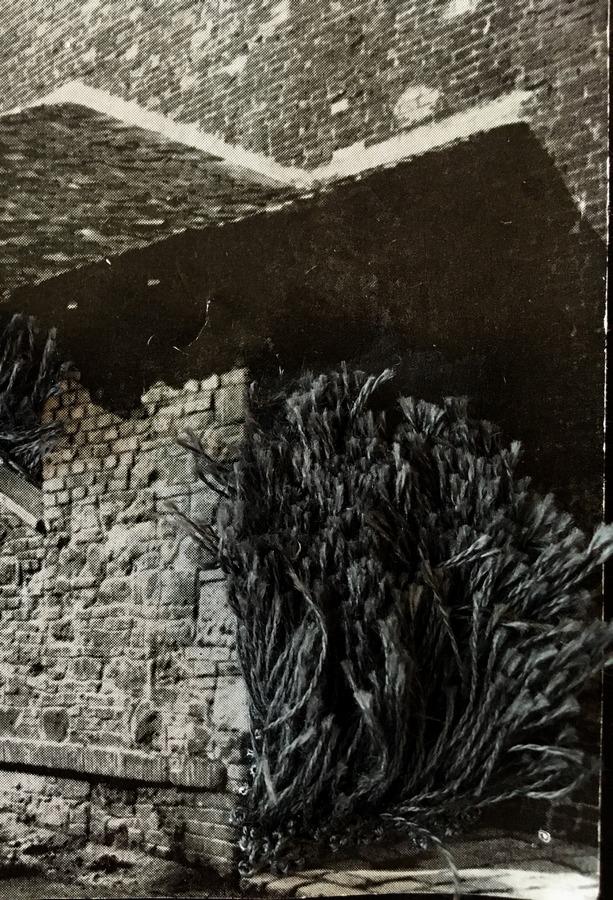
Strange Plants (series), embroidery on found photograph, 10” x 8” framed
how your work relates to larger contemporary cultural and media trends. Another interesting work of yours that we
would like to introduce to our readers is entitled Strange Plants, a stimulating embroidery series on found photograph. We have particularly appreciated the way your

series highlights the physical nature of art making, in relationship to such the apparently neutral approach of photography. New York City based artist Lydia Dona once remarked
Beardsleythat in order to make art today one has to reevaluate the conceptual language behind the mechanism of art making: are your works created gesturally, instinctively? Or do you


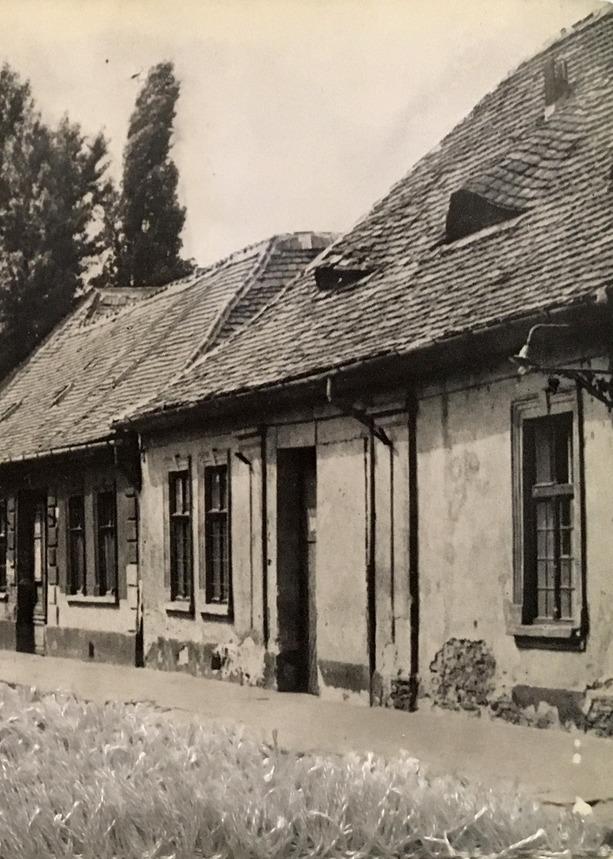
methodically transpose geometric schemes? In particular, how do you consider the relation between the abstract nature of the ideas you aim to communicate and the physical act of creating your artworks?

Heather Beardsley: Because I am working with found photographs in this series, there is a preexisting composition to work within so when I start sewing I have a general idea of what shape my embroidered interventions will take. Beyond that basic shape I allow myself work intuitively, often it feels more like the embroidery is growing organically on the photograph than the execution of a predetermined plan. Embroidery is such a labor-intensive and repetitive way of working that I think I would go crazy if I had to adhere to a stitch-by-stitch blueprint. Allowing myself the freedom to work intuitively turns this tedious process into something meditative, I am often thinking through and clarifying the conceptual aspects of the project while working. As a very tactile person myself, I engage in these kind of processes because of the satisfaction they give me, but based on feedback I’ve received I think a lot of other people also respond to this marriage of the conceptual with the tactile. I am also a big sci-fi fan, and sometimes I like to watch things while I’m doing embroidery, so I’m sure that’s one reason my work relates to so many science fiction themes.
Ectopic Anatomy combines references to human body and such a surreal ambience, to invite the viewers to explore the point of convergence between the figurative and the abstract, to challenge the viewers to explore realms of the imagination, how do you consider the relationship between the real and the imagined playing within your artistic research?
Strange Plants (series), embroidery on found photogra
Heather Beardsley: I think that relationship has been a critical aspect of my recent work and research. As I said before, I think a lot of my ideas
ph, 11” x 14” framed
are influenced by sci-fi, and the potential that genre has to use allegory and alternative realities to generate discussion about

philosophical questions and contemporary issues.
Even though I am not directly quoting the
Strange Plants (series), embroidery on found photograph, 11” x 14” framed
language of science fiction in my work, I am pushing past the boundaries of reality to call attention to important discussions happening
today. I also have a lot of fun taking things to absurd extremes, and I appreciate when people are able to detect the latent humor in my work.

We have really appreciated the elegance of your artworks: how do you structure your process in order to achieve such brilliant
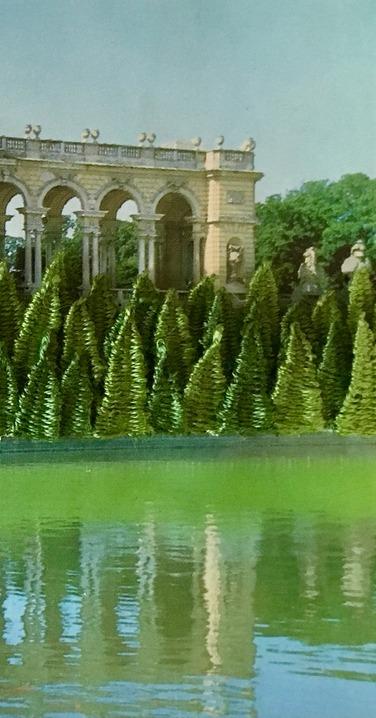
results? In particular, how do you develop your textures?
Heather Beardsley: Material exploration is one of my favorite parts of being an artist, and is one of the things that inspires and propels me to keep making new work. I am a bit of a process junkie, even when I start with a fairly straight-forward idea for a project, along the way I tend to add new steps that complicate things. I get frustrated with myself sometimes for doing this, because of the amount of time it then takes me to complete each piece, but overall I do love making them and a lot of people I talk to really respond to the level of detail and tactility my work often has.
You are an established artist and over the years your artworks have been showcased in a number of occasions, including your recent participation to the 8th World Textile Art Biennial of Contemporary Textile Art, in Madrid, as well as your two person show Red Thread with Guido Nosari, at the Shangyuan Art Museum, in Beijing: how do you consider the nature of your relationship with your audience? Direct relationship with the audience in a physical space is definitely the most important one, in order to snatch the spirit of a work of art. However, as the move of Art from traditional gallery spaces, to street and especially to the online realm increases: how would in your opinion change the relationship with a globalized audience?
Heather Beardsley: My work is very physical, both in regard to how much physical labor it takes me to create each piece and in the layers of texture of the works themselves, so it is a big priority to try to create as many opportunities as I can for people so experience them in person. However, there are a lot of factors that limit the number of physical exhibitions I can do, especially money and time.


Ectopic Anatomy (series), pen on shrink film with thread, on wooden panel, 20 cm x 20 cm

I have been participating in as many international residencies and exhibitions as I could the last few years, and figuring out the logistics of how to get artwork from one state
or country to another is a very complicated process, especially when many programs and venues don’t have the resources to cover all of the costs associated with shipping artworks. In

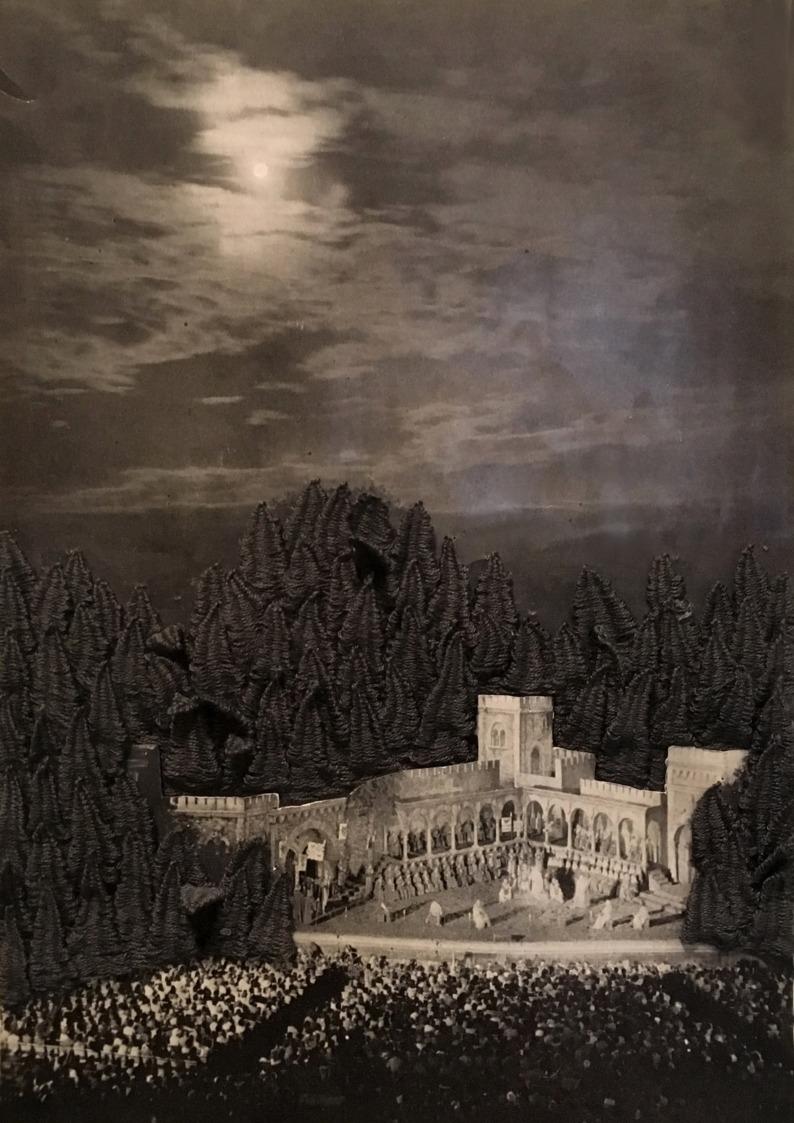
that regard being able to have maintain an online presence where people can be introduced to an artist’s work at a much lower cost both financially and in terms of labor.

At first I was very skeptical if Instagram’s potential as a platform for sharing work because of negative associations I had with
Beardsleythe idea of social media overall. I’ve never felt comfortable with self-promotion, and that’s what I thought Instagram’s only value was, but once I started using it I realized it could be a great source of encouragement and community. I’ve discovered a lot of artists, from all over the world, whose work I admire
there, and I also follow a lot of accounts that are science related, so looking at my newsfeed is a big source of inspiration. When updating on my website I feel like projects need to reach a particular point of completion before I share them, and the documentation of the works needs to meet certain specifications to maintain a standard of professionalism. There is something very liberating about being able to share more casual images of new work moments after completing them. Sometimes there can be long gaps between when I make things and have an opportunity to show them in a physical gallery space, if I even get to at all, which is a huge advantage of making art today. I also feel more liberated to show work in progress images on social media than on my website, and those images can yield valuable feedback as well. My education emphasized presentation and consideration of how one’s work would exist in the world once it was finished, so I was nervous about pulling back the curtain and sharing pieces and projects that were incomplete. It turns out people are really interested to see the process by which artworks come to fruition, and since the process is my favorite part as well, it’s been rewarding to participate in more dialogues around it.
We have really appreciated the multifaceted nature of your artistic research and before leaving this stimulating conversation we would like to thank you for chatting with us and for sharing your thoughts, Heather. What projects are you currently working on, and what are some of the ideas that you hope to explore in the future?
Heather Beardsley: I am currently expanding on the Strange Plants series, I will be
working with similar imagery and ideas while attending two different artist residencies this fall. I am still doing some embroidery on found photographs, but the material limitations of embroidering on paper has restricted the size of these pieces. To push this concept further I am excited to experiment with new techniques that would allow me to work on a much larger scale.
As part of my project at the IZOLYATSIA Residency Program in Kyiv, Ukraine in August and September I will collage gel transfers of Soviet architecture on linen, that I can then embroider similar plant imagery into, but on a much larger scale. In November and December, while I am an Artist in Residence at Rogers Art Loft in Las Vegas, NV, I will be experimenting with creating large photo collages on fabric using transparent paper and light-sensitive dyes. As with my earlier work, these pieces will explore the relationship between built and natural environments both today and as we look to the future. I’m thinking of more overtly referencing science fiction and dystopian tropes in these pieces, but I’m not sure yet. Like always, intuition and improvisation will play a huge part in how these new works are ultimately realized, but I am super excited to collaborate with these residency programs and use this time to experiment with taking my work in new directions.
An interview by Josh Ryder, curator and Melissa C. Hilborn, curator peripheral.arteries@europe.com
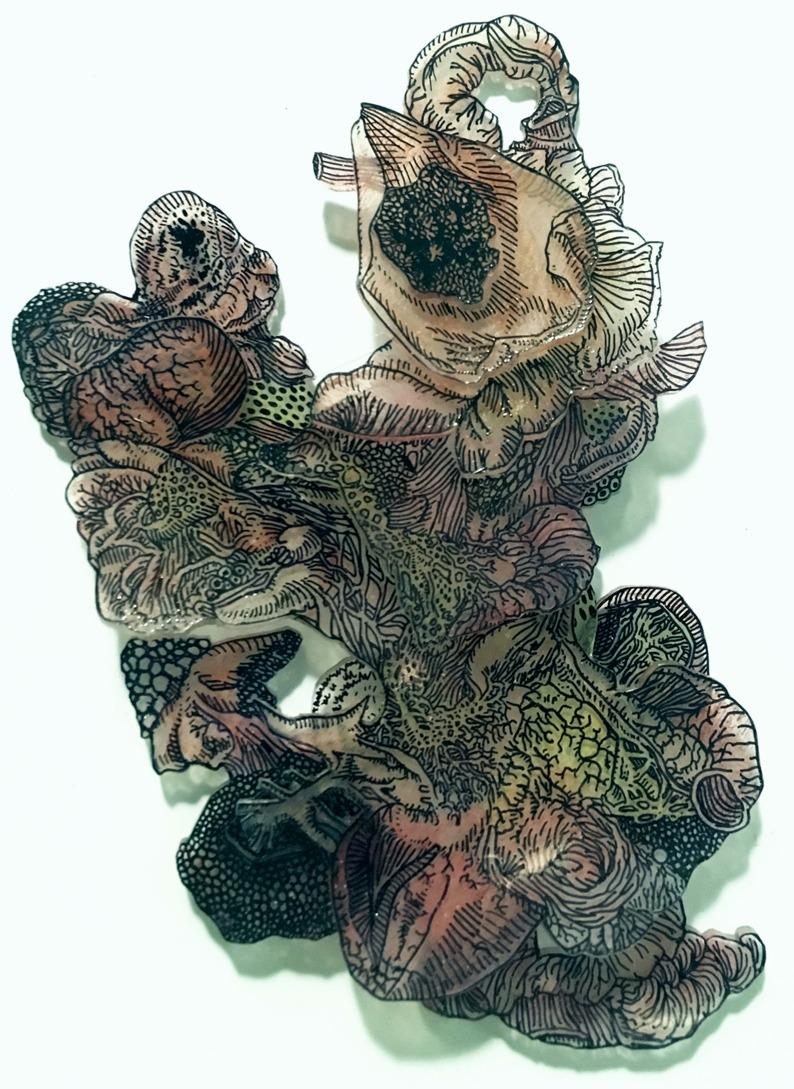 Ectopic Anatomy (series), pen and colored pencil on panel, 20 cm x 20 cm
Ectopic Anatomy (series), pen and colored pencil on panel, 20 cm x 20 cm
"Drawing for printmaking" and "Oil-based-Woodcut" process of the work created by kajitani which is overcoming the monochrome dimension and introducing the colors to the prints for the first time, cannot be imagined without close ties with "being within the city" bridging the creator's and its masterpiece in urban space. The color of the work is not given by artist itself, but rather acts as a "generative phenomenon" born in the urban life.
My work itself participates in society life through exhibitions as "amulets, talismans, gifts". In order to make its historical role (the work is preserved and exhibited even after its creator passed away) sustainable, the work itself must be a symbolic thing, a “face” representing its creator and a comprehensive/impersonal symbol of urban space. This “face” is entrusted with functions of "watching over and giving". and,as long as work is stored and displayed appropriately, keep working even after an artist, pass away, work will continue with future possible possibilities to watch over the era.
After the death of an artist, these work starts to "watch over" the exhibition,Portrait (facial expression)on behalf of him, It will slept in artwork eternally. It reaches the social sleep rising above artist's personal sleep, "work of art" puts such time and space into eternity. In that sense, the space of the my work is equal to the space of a prayer.
As one person with sexual identity disorder, I suppressed the facial expression of feelings in my life so far and entrusted most of the roles to “belly”. belly is my face, and a device that accepts any aches and pains Instead of compensate for expressionless, I suffer holding down belly on a daily basis.It is that usually hidden under clothes.like this, invisible movement is a means of Defense from every discrimination. imagine the fact that the this belly(or body) is constantly and continually suffering pain throughout life through repeated daily violence.If you stand in front of the this work, try holding your belly with both hands trying. that pain, no longer a disagreeable event for the parties concerned, it is a hometown and a buddy.and,Pain accumulated in the belly is social power and energy. From the above,I’m view the belly as a malleable site of meaning and power, which the artist or viewer may project own fears, desires and dreams. My belly accepts these desires and diversity.
Hello Ryo and welcome to Peripheral ARTeries. Before starting to elaborate
about your artistic production we would like to invite our readers to visit https://www.ryokajitani.com in order to get a wide idea about your artistic production and we would start this
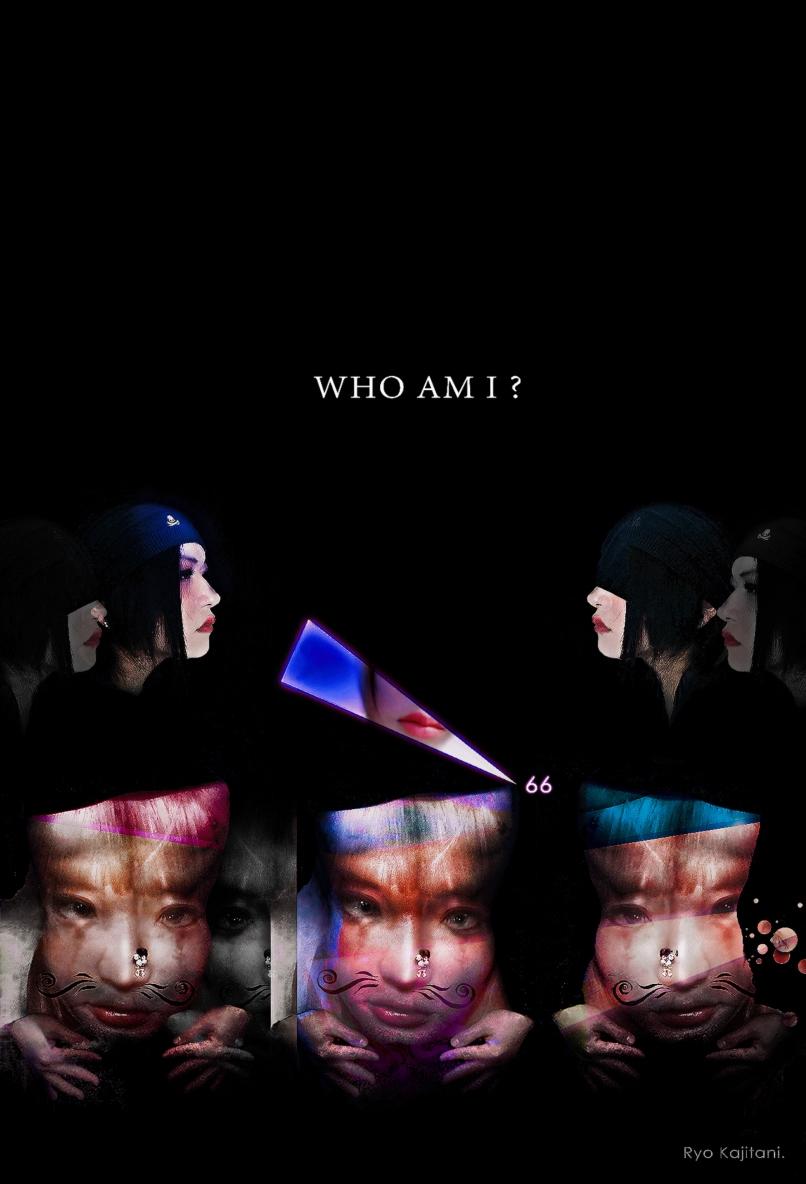
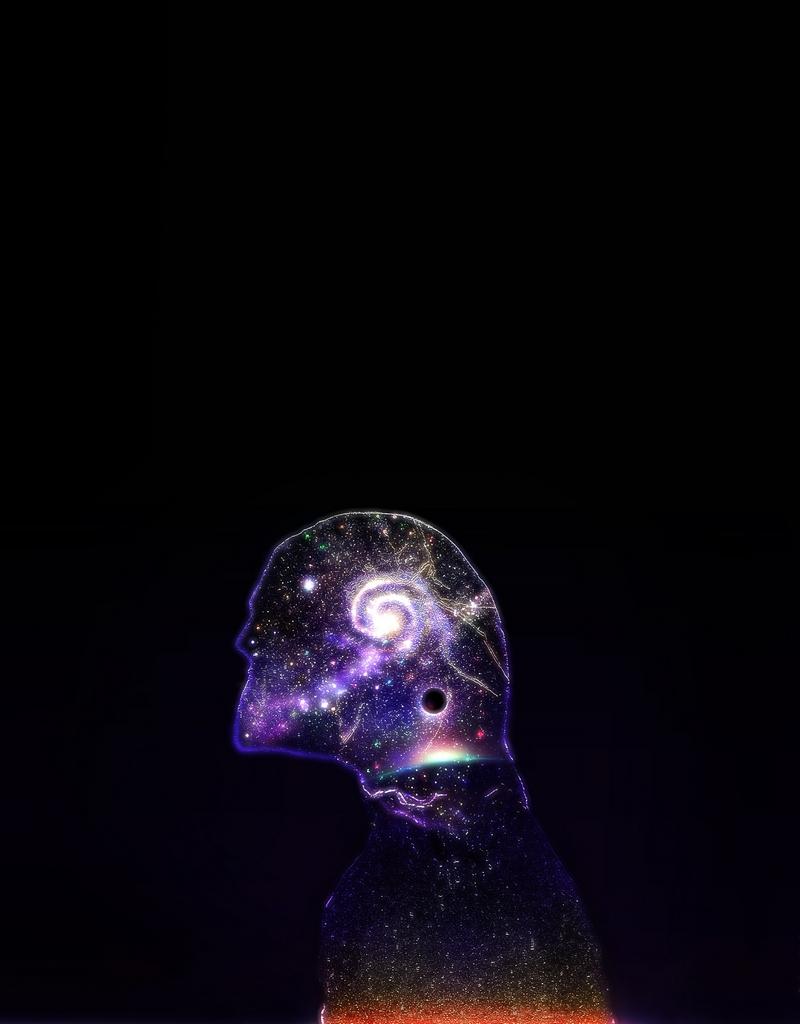 Ryo Kajitani
Ryo Kajitani
interview with a couple of introductory questions. Are there any experiences that did particularly influence your evolution as an artist and help you to develop your attitude to experiment? Moreover, how does your cultural substratum due to your experiences as a researcher and exmodel direct the trajectory of your current artistic research?
Ryo Kajitani: The cultural foundation that I have built until now is contiguous to my career in art. The degree from Tama Art University that I obtained in spring this year was based on my thesis entitled”Towards Further Advancement of Artistic Activity in Exhibition Spaces : Exploring through the Ontological Aesthetics based on Heidegger s Der Ursprung des Kunstwerkes (The Origin of the Work of Art)“, with the content of a creator’s artistic research that ontologically unravels the relationship between the exhibitions space with the so-called traditional trinity, consisting of the artwork, creator, and viewer based on the point of view of a creator.
Heidegger, the German philosopher, was used as the reference axis to approach art ontologically. Knowing about Heidegger was inevitable for me, who have been familiar with the phenomenological point of view from
a young age. His assertion that an artist’s impression of great artwork is not important was extreme but deeply familiar. Even a model is nothing more than a material for making clothes (although not limited to), or in other words, is a thoroughly given material, and for me, this job is also a part of a production.
The body of works that we have selected for this special edition of Peripheral ARTeries and that our readers have already started to get to know in the introductory pages of this article has at once impressed us for the way you sapiently combined element from reality with captivating abstract sensitiveness, to provide the viewers with such a multilayered visual experience: when walking our readers through your usual workflow and process, we would like to ask you if you think that there is a central idea that connects all your works.
Ryo Kajitani: Yes, the source is inside my head. I believe that, if the elements are in place, my works would not be formed out of the premise “to be placed in a city”. The city space nurtures artworks. The face in the picture is a complete portrayal of the entire “people in the city”, and represents a genderless “non-human face”. The line of sight is a “phenomenon” that is generated from
the face. The work watches over the exhibition space and the attendees (viewers) through its eyes. The look is not based on a person’s self-portrait, but represents “our faces”. Maybe, the future is the “face of an era”. The line of sight is an unending message (gift), which can only be conveyed through the artwork that overcomes languages.
You are a versatile artist and your cross disciplinary practice includes woodcut, drawing and painting in your practice. What does direct your artistic research to such captivating multidisciplinary approach? How do you select an artistic discipline in order to explore a particular aspect of your artistic journey?
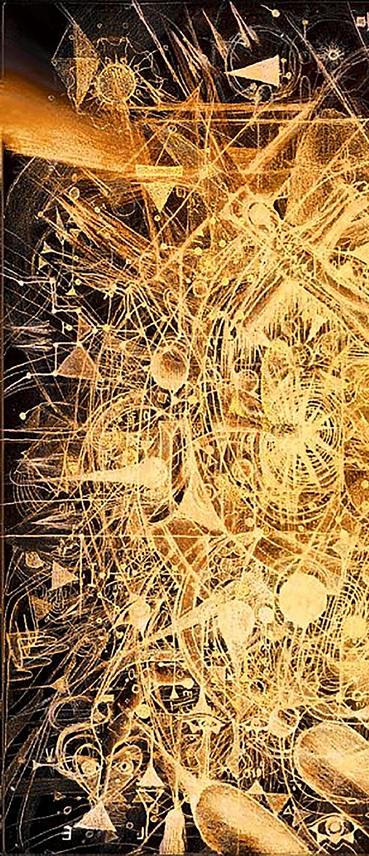
Ryo Kajitani: I believe that the method of expression has no boundaries. The categorization of expressive media is less important than how can someone be engaged in pure production.
The optimal solution is through drawing and woodcutting. In particular, since woodcutting can show the individuality of the craftsman that is involved in each of the segmentalized processes, it has an interesting point in the sense that it can produce a truly unique artwork through the accumulation of techniques. Although each method is different, for me, each one contributes equally to the


production.
The choice of the medium of expression is not personal and voluntary but is “provided” by the other side (the world).
Your artworks - and in particular the interesting I'm Here - are marked with such a rigorous sense of geometry, to create such a coherent combination between sense of freedom and unique aesthetics: do you conceive you works instinctively or do you methodically elaborate your pieces? In particular, how importance does spontaneity play in your work?
Ryo Kajitani: As you know, spontaneity is everything for me, and I do not make preliminary concepts. Thus, I never know what kind of work it will be and what colors will there be before I complete the production. The autonomy of the work cannot be controlled, even by myself. The actuality of the work is unknown to me.
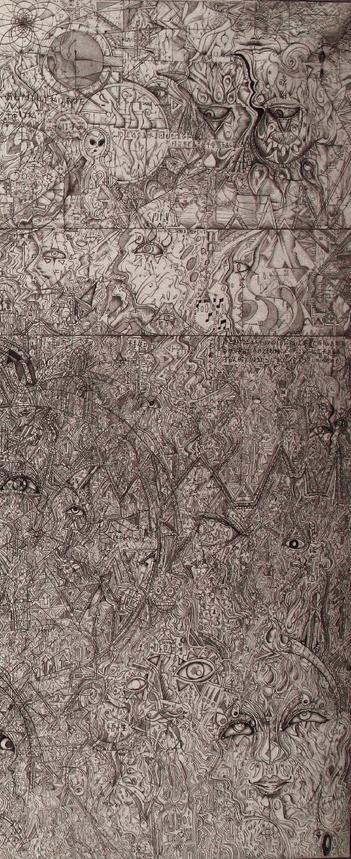
For example, the process of drawing is like wandering in complicated lines of the sketch, which may sometimes cause the artist to be lost in the process. It is crucial to meet that one dramatic line at the center. Art production brings along a new encounter each time.
We have really appreciated the vibrancy of the delicate nuances of that mark out your artistic production, and in particular Garden of Prayer: in particular,


we like the way your artworks show that vivacious tones are not indespensable in order to create tension and dynamics: how does your own psychological makeup determine the nuances of tones that you decide to include in a specific artwork in order to achieve such brilliant results?

Ryo Kajitani: «Garden of Prayer» was an experimental work, more or less like a sketch. The finished form was completed immediately after sending the manuscript to Peripheral ARTeries . The colors were not chosen by me, but “developed” from the work as it was “given” from an unknown place. In other words, the colors are the “phenomena” and “events” that surround the work. I gave the print work a concept of time.
Each natural production step (except for drawing) has its own color. For example, the primary color of this work originated from a time zone common to every person, known as “Morning”, and is imprinted on the work. I usually produce warm-colored works based on the symbolic time zone “Evening”. The Japanese-specific expression for it is “Shayou” (sunset). The Japanese word has a deeper meaning than sunset and suggests that “all things that prosper will decline and fall.” When such a concept is applied to a city, we arrive at the idea of ruins and wreckage. In that sense, the massive portrait I drew as a symbol of the modern city dwellers can be interpreted
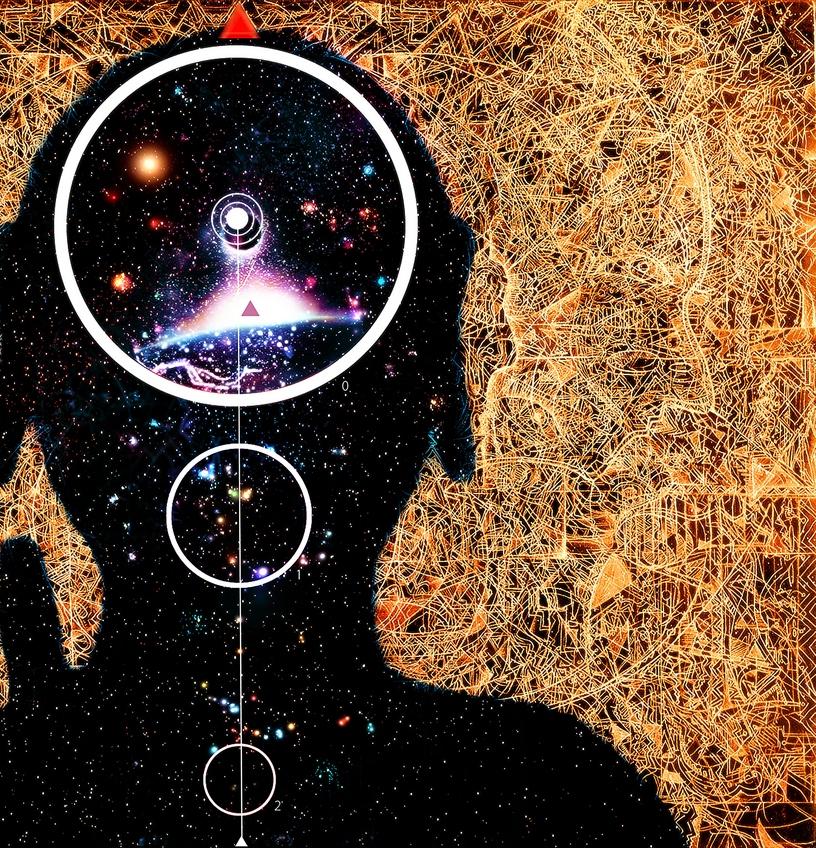
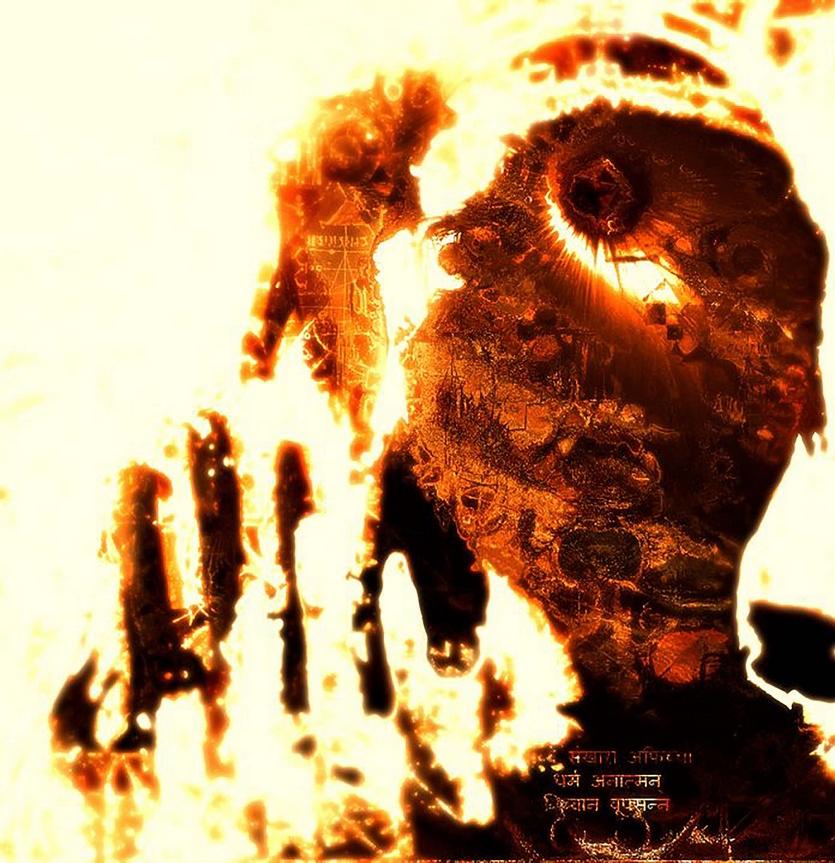
as “ruins” and “wreckage”.

The ruins are the relic of the past, where the people’s memories sleep. It is often frequented by people, to remember the past and pray. The symbolic time of prayer is “the evening”. The evening dyes our humanity golden uniformly. Although we are there, we can never touch the color. Sunset and sunrise. They are both the time, hue, and sceneries that have been experienced by humanity, yet no one has ever had direct contact with the color. Poetically, it can be said that the work’s tonality was given from the heavens. The face in the work sleeps away in a space that spans the time to watch over us eternally.
The colors on «Garden-of-Prayer» are the results of an experiment in drawing “morning” as a symbolic time that represents the “evening”.
We like the way you artworks convey such a stimulating combination between figurative elements - as wetlands, mudflats and grasses, ponds, fields- and captivating abstract feeling, whose creates such an oniric atmosphere: how would you consider the relationship between abstraction and figurative in your practice? In particular, how does representation and a tendency towards abstraction find their balance in your work?

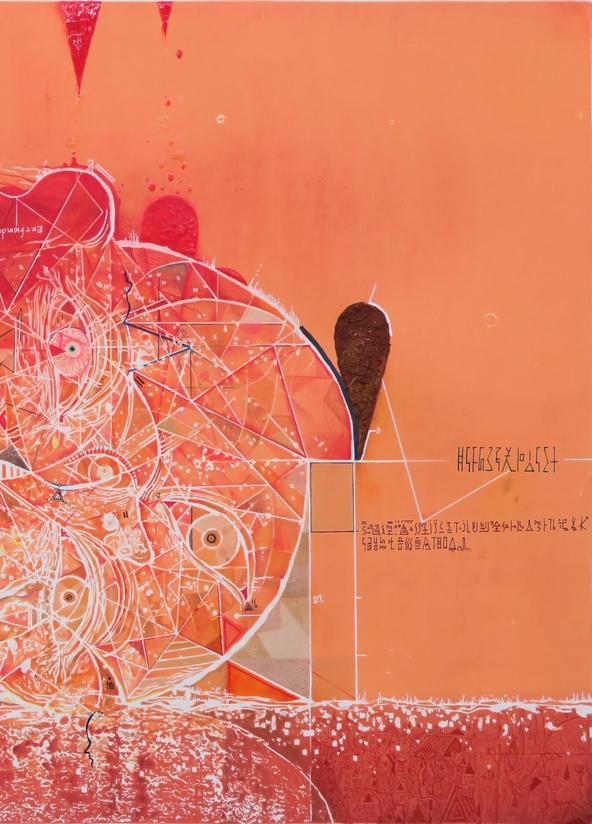
Ryo Kajitani: I believe that it is related to my mental structure. I departed from symbolic representation early on. Basically, I see the world in an abstract way, with a tendency to move back from the three-dimensional perception to a twodimensional plane. Such a trend probably played a role like a camera lens. In the artwork, natural objective orientations, such as distance and parallax, are removed and replaced by the face and the line of sight arising from it. I often switch between concrete and abstract in my research, but I feel that, in production, the optimal solution (landing point) shows up as the screen.
I may be dealing with a region that can not be expressed objectively. I believe that, in our daily life, abstract existence is much more unique and extraordinary than the actual one.
Marked out with a powerful narrative drive on the visual aspect, your recent body of works seems to push the envelope of abstraction even more you have before: in this sense, we daresay that your artistic practice seems to aim to look inside of what appear to be seen, rather than its surface, providing the spectatorship with freedom to realize their own perception. How important is for you to invite the viewers to elaborate personal meanings? And in particular, how open would you like


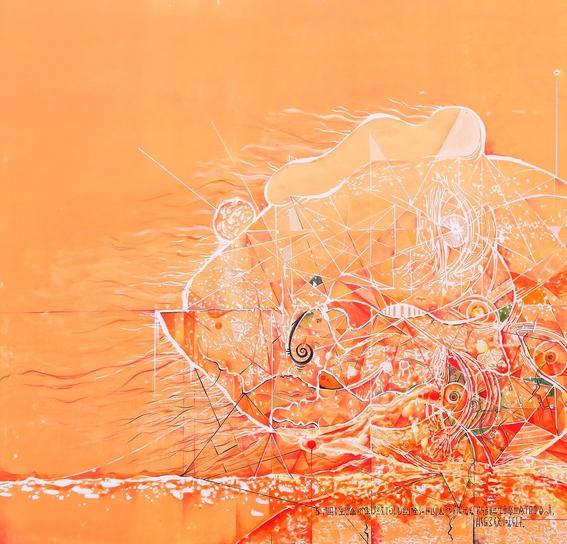
your artworks to be understood?
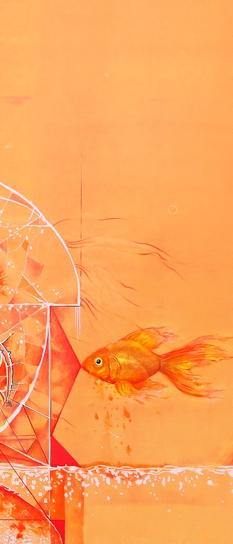

Ryo Kajitani: You are exactly right in saying that my work is more abstract than before. In that way, I hope that the viewers will be free to see the work and perceive them with their own feelings. I also hope that many people can understand my works as they are and be connected to them through their creative power. I am not preparing a definite and clear answer. The reason is that such a solution only represents an artificial and random landing point. I’ll know what I can do when my work is finished.
I do not act as the tender of the works, although they are arranged in an exhibition space as they are. It is the viewers who create the actual meaning of the works throughout the ages.
As you have remarked in your artist's statement, your work participates in society life through exhibitions as "amulets, talismans, gifts". Mexican artist Gabriel Orozco once stated, "artists's role differs depending on which part of the world they’re in": does your artistic research respond to a particular cultural moment? In particular, how do you consider the role of artists in our everchanging and globalised age?
Ryo Kajitani: My role as a creator is to make sure that the “watching over and giving” effects that can be realized by the work to remain with it even after my death.
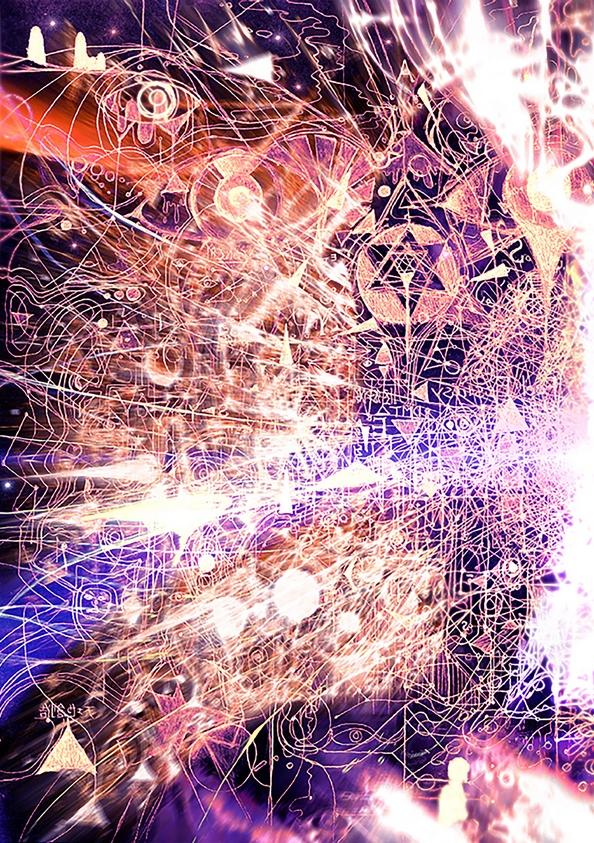
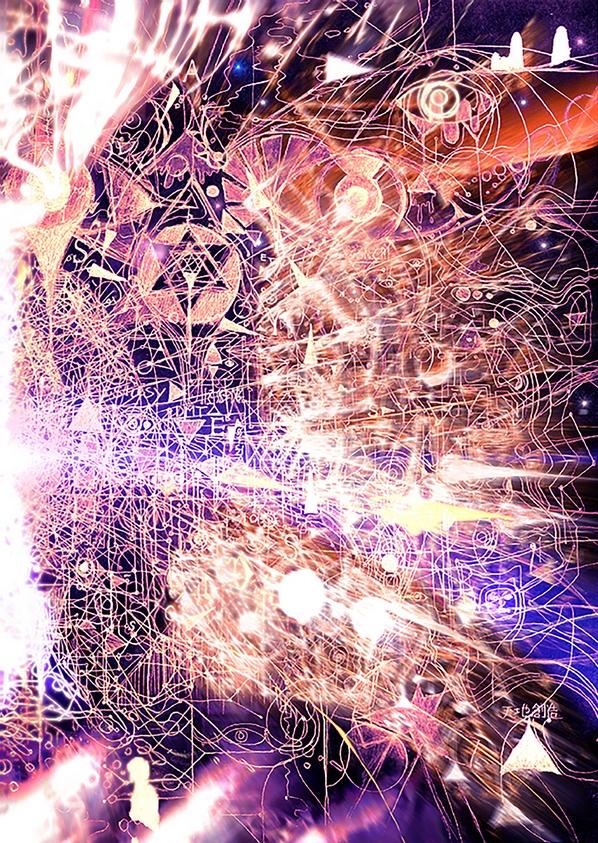
If the work is not stored and exhibited appropriately, it has no chance to show its effects anywhere. That makes it even more critical for the work to be an important occasion. I do not think of myself as an artist, a designer, or a writer. I prefer thinking of myself as a creator. I have watched over so many crowds along the ages here in Tokyo, the center of Japan. People in the city are isolated and tired due to the extreme crowding. I was one of them, feeling annoyed by the loneliness despite being surrounded by so many people. Loneliness is home to me now.
My first role in facing such a situation is to display artworks to the world at exhibition space in cities everywhere and show the meaning of “watching over” to the people through them. If this can be achieved gradually, the facial expression will diversify by itself. I hope to convey the meaning of watching over and giving attention to the general and specific ways to every person throughout the ages, not only in Japan. It is my mission to bring talisman-like works into existence for each person without being limited to space. I consider my life as a period to prepare for that mission, with my doctoral dissertation is the foundation.
We sometimes tend to ignore the fact that a work of art is a physical artefact

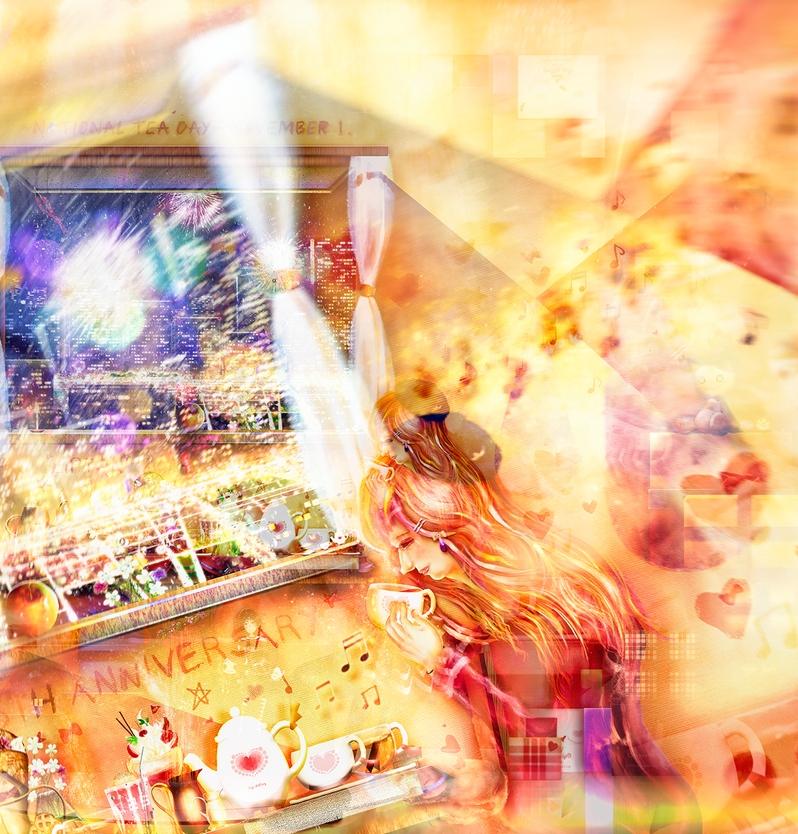

with tactile qualities: how do you how do you consider the relation between the abstract nature of your creative process and the physical aspect of your daily practice as an artist?

Ryo Kajitani: The abstract nature of the process of creation is strongly linked to the physical dimension and becomes more profound each day through life and discipline. As a transgender, physicality is an essential aspect for me; mainly, the perspective on a human body and the view of life that deviate from gender separation, which is not unrelated to the abstract nature.
As I said, training my own body as a model can also be considered as a creative process, and such a disciplined life has changed the ways the lines are drawn, and the words are written. Even though the abstract nature of the path that lies ahead does not change that quickly, there are various ways to enter and routes leading to it, and such diverse options tend to fix the colors of the path of creation.
Over the years your artworks have been showcased in a number of solo and group exhibitions, and you are constantly searching for close relationship with exhibition spaces: how do you consider the nature of your relationship with your audience? And what do you hope your audience

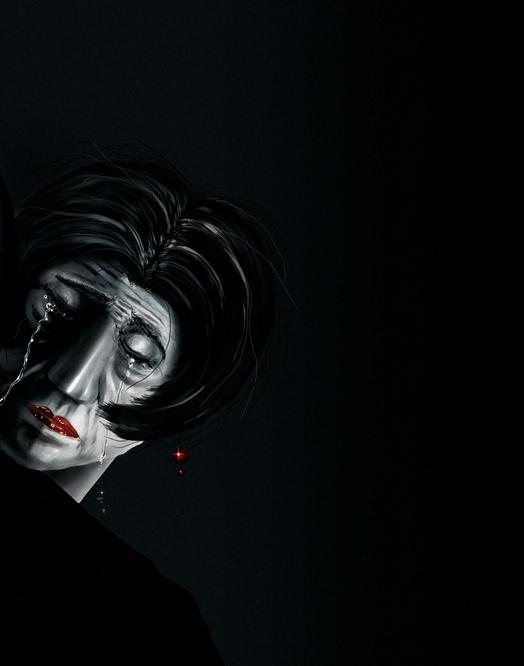
 Ryo Kajitani
Ryo Kajitani
take away from your artworks?
Ryo Kajitani: It is difficult for each piece of the work displayed today to escape from the premise of being “placed in an exhibition space”.
Exhibition spaces, such as art galleries and museums, are the crucial stages for artworks. If you think that your works are only meaningful when they are viewed by the viewers, it is also vital to meet them in this structural unit. Generally speaking, viewers are present throughout the ages. The work can “start becoming what it is supposed to be” only when the viewers build the relationship between “watching over and being watched over” after looking at it. It is a historical “event” for the work when a viewer stops by and looks at it. In short, I would like the viewers to accept existence as it is from the displayed work.
When the viewers feel being watched over and feel being gifted of their existence, I hope that they will feel the strength of the reality as if floating in the air. The reason is that the work itself is like the bouncing of something real. We have really appreciated the multifaceted nature of your artistic
research and before leaving this stimulating conversation we would like to thank you for chatting with us and for sharing your thoughts, Ryo. What projects are you currently working on, and what are some of the ideas that you hope to explore in the future?
Ryo Kajitani: As a model, I worked with a local unisex apparel brand, and at the same time, worked on branding efforts for the brand by creating illustrations and posters for the brand’s image and exhibited them in art galleries.
It was a positive experience in my shackled life as a transgender to feel useful to other people, and I felt great about it. Based on that experience, in the future, I will maintain East Asia as the base of my activities, and while resuming my modeling career, I will keep on searching for artistic activities that are related to fashion, such as creating works for apparel brands.
Recently, I participated in two successive art exhibitions in Taiwan. The first one is an art fair, and the other is an auction. Also, I will attend a group exhibition in Hong Kong in June.
An interview by Josh Ryder, curator and Melissa C. Hilborn, curator peripheral.arteries@europe.com
Roland Barthes once said, “The best weapon against myth is perhaps to mythify it in its turn, and to produce an artificial myth.” My Back to Nature series will represent the production of human-technological civilization. For example, through the billboard light boxes and a digitally printed geometric sky, seascapes, flowers and grasses in the Artificial Nature series, I have placed them into nature or an indoor space in order to create an artificially-fictitious landscape. Furthermore, in the Artificial Life series, I have created non-existent butterflies, a human-butterfly hybrid, and a human-pupa or human-beast hybrid, Eve Clone, with 3D animation, Lenpicular Lens, LED, 3D Moving Hologram, Digital Image and Sound, Interactive Installation and media technology, criticizing man-made abnormality or mutation through a beautiful and artificial woman.
Showing high energy, virtually-real high technology which can closely interact with the audience, became the key media and language for my creations. In Specimen, with raster technique, I created moving butterflies, which will follow the audience’s eyes. The Portrait of Eve Clone was created and displayed following the dynamic effect of hologram technique. It is shown as a film being played, but it can also stop at the moment of the viewers’ gaze. In Virtual Creation, I invited viewers to draw pictures of butterflies with interactive programs and devices. By allowing the viewers to see the butterflies they have created fly into a seascape image, I have mimicked the human desire to create. In Eve Clone No.2, Eve Clone No.3 and Eve Clone No.4, I used a webcam and an interactive computer system to create the fake life of Eve Clone, which could not be independent but which could seduce the audience. Thus, the fact that media could represent technology was my original intention of criticizing modern technology.
With the use of ready-made objects, there is an important symbolical meaning in the style of my works, including the squares like geometric figures, cylinders, cones, and shell and pupa shaped light boxes for advertisements. I have attempted to represent the luxury and urbanization of artificial landscapes. The frames, glass medical tubes and medical jars show the process of the birth of artificial life, and how it is preserved and experimented upon. The numbers, symbols, sounds and images in my works describe an important “appropriation” concept. The number shown on the stuffed insets, Eve Clone, 666 (the mark of the beast), computer timecodes, tattoos, scriptures from Revelation in the Bible and holy songs define the artificial life’s character and status. They can be randomly numbered, controlled, cancelled or changed, and they can even be incarnated with tattoos or the mark of the beast. This is my work’s warning of the end of the world: humans are arrogantly changing God’s original creation and this will become an inescapable nightmare for mankind.
My earlier works (Interpretation of Woman and Chrysalis Series) explore life, and I then create my art to deconstruct patriarchy (Antithesis and Intertext, 228 Series, Classic Works Series and Beautiful Life), Followed by the Back to Nature series (Virtual Creation, Catching, Specimens, City Matrix, Cultivation, and Eve Clone Series. ) which were made after I was inspired by God. During the process, I have had the help of my family, friends, mentors, colleagues and students, in addition to the support of the prophets, co-workers, sisters and brothers. Thank you to all of the art gallery and museum staffs, artists, critics, reporters, audiences, collectors and scholars who have supported me. They have all allowed me to use art to express care in my explorations of life, society, and universal truth.
National Taiwan University honorary professor Lin Li-Chen used “Between Word and Tech” to critique
my works. She stated, “For a piece of art, ‘Word’ refers to the ability to express a belief, a thought, and an introspection and reflection of the fundamental studies of the universe and life…” I am grateful that Prof. Lin wrote a preface for me as a Chinese professor and a priest of my church. She knows that I respect God, and my creative thoughts

3D Animation, Moving Hologram, Acrylic Frame, Spotlight 46cm×57.5cmx4cm each piece
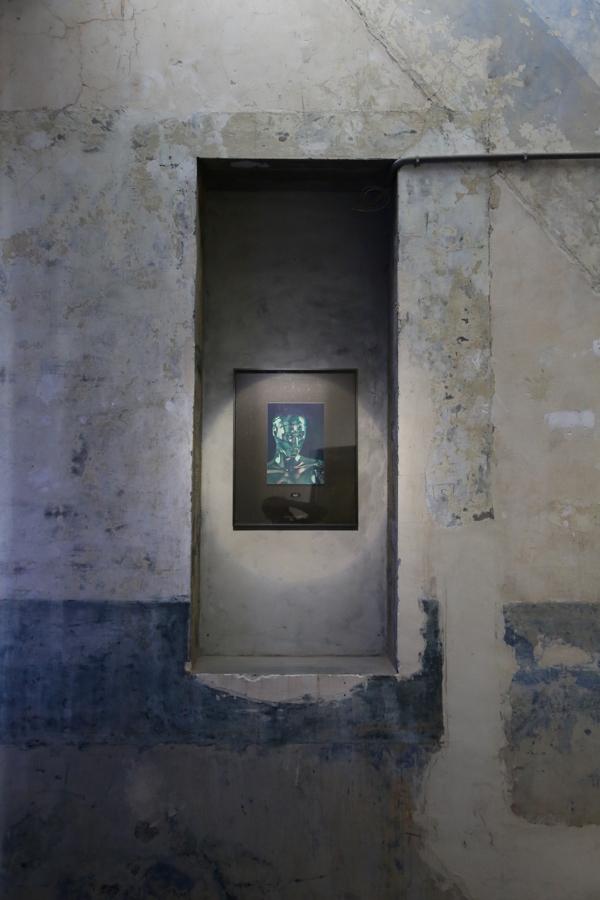
and beliefs originate from the touches of my inner life and the enlightenment of the messages delivered by the Prophet of all Nations, Elijah Hong. Specifically, the series of Back to Nature and Eve Clone are my representative artworks criticizing the destruction of nature by humans and modifications of God’s original creations. My works are based on the truth in the Bible; I even directly quote Bible chapters to define the Eve Clone character, which refers to the end of humans challenging God’s original creations. This is the unique concept and art language of my works. “The best art works are delivered through the most profound metaphysics through sensory and sensual means… Therefore, art as a cultural expression works in the same realm as religion and philosophy and expresses the same content as they do.”
In the Antithesis and Intertext series exhibited in my 1995 solo exhibition at the Taipei Fine Arts Museum, I appropriated advertising slogans and documents on foot-binding to disclose that throughout history, the female body has been trapped in the patriarchal aesthetic standard and lacked autonomy. Next, I used two pieces of work, Black Wall, Inside and Outside of Windows and Regards to the Authorities Hiding the Event, to interpret the unequal status of the victims and perpetrators in the February 28 Incident. Another two series of mine, Classic Works and Dice, satirize the phenomena of people devoting themselves to books not for knowledge but for examinations and for the subsequent fame, status, and wealth. The series Complexity and Thought Origin and Beautiful Life unveil the chaotic Taiwan society. The aforementioned works are all a series of creations in which I use feminist concepts to decompose gender, history, society, politics, and education under the patriarchal culture. They express my beliefs and thoughts I want to deliver, which are my creative ideas and concepts.
The reason why my works present a feminist art perspective is that after completing my studies in the United States in 1989, I joined the group Apartment No. 2 and participated in Taiwan
contemporary arts. At that time, I deeply felt oppressed by traditional culture, and I constantly struggled among my multiple roles as wife, mother, daughter, and artist. In 1992, at my solo exhibition at National Taiwan Museum of Fine Arts, I painted the shapes of chrysalises and curled-up female bodies that incorporated images of women’s shoes and high heels to symbolize the various states of contemporary women, such as their states of confusion about being unable to break the bondage of tradition. I felt as if I were in a chrysalis, about to break out.
To seek an independent space for art creation, in 1993, I finally overcame various obstacles to pursue a doctoral degree in creative arts in Australia (University of Wollogongon), where I was immersed in feminist art discourse and related works. Feminist art scholar Linda Nochlin’s paper “Why Have There Been No Great Women Artists?” maintained that most art history was narrated from the male perspective, and art was selected, positioned, and evaluated under male standards. I finally surpassed my past confusion, no longer expressing myself in the form of an oppressed chrysalis, and the media I adopted were no longer restricted to oil paints and canvas. When I realized the structural problem of patriarchal culture oppressing the female development space, I was finally able to objectively use the female perspective to examine products under patriarchal culture. For example, my Antithesis and Intertext series used methods including screen printing, embroidery, artificial silk, and painting to represent ancient paintings of beautiful women, foot-binding literature, and contemporary advertising slogans of plastic surgery to satirize the fact that the female body has been dominated by patriarchal assessment standards.
After this series was launched, the art scene and media critics positioned me as a “gentle” feminist artist because my works did not use my own body or sexual organs, as do western feminist artists. However, I consider my language of representation a more powerful method of accusation in that representing the fact is the most powerful proof. This kind of representation
language is like Mary Kelly’s Post-Partum Document. She represented objects throughout her son’s growth, such as diapers, videos of him learning to talk, and his doodling, to demonstrate the subjectivity of mothers and women. She also avoided women’s bodies being peered at by men.
In 1997 and 1998, I was invited by the Taipei Fine Arts Museum to exhibit two pieces that deconstructed political topics. Black Wall, Inside and Outside of Windows consist of victims’ family photos and letters, as well as official documents, screen printed on lead plates, with the victims’ faces intentionally corroded by sulfuric acid to represent the miserable lives of the victims. The opening and closing of the ready-made venetian blinds present the once closed and gradually rehabilitated (i.e., opened) miserable history.
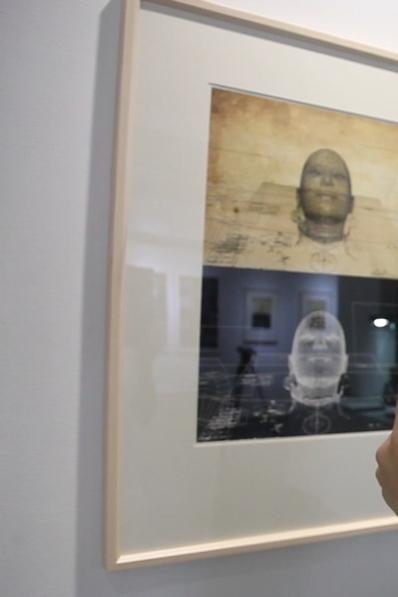
The other work, Regards to the Authorities Hiding the Event, boldly displays a line of ready-made trophies on which words satirizing authority are carved, such as “Regards to the authority who hide the Incident,” “Regards to the authority who slaughtered the innocent,” “Regards to Chen Yi, who would rather kill all just for one,” and “Regards to the authorities who caused a lifetime of shame and fear in the families of the February 28 Incident victims.” The so-called “regards” is accusation, and the so-called “great achievements” satirize the conspiracies and atrocities, such as despicable, brutal slaughters. Later, in another two series, Classic Works and Dice, I questioned contemporary education, mocking the intensified hypocrisy, fame-seeking, and speculation in people who study the Four Books and Five Classics, the traditional ethics education. In the large-scale installation work Beautiful Life, I scanned over ten thousand newspaper articles reporting the chaotic news of Taiwan onto the mosaic-censored Along the River During the Qingming Festival. Then I printed them on long rolls and hung them as a spiral space where viewers can walk. When observed from afar, it is a traditional painting installation of Along the River During the Qingming Festival, representing the truth and chaos of the society beneath Taiwan’s rich surface illusion.
Prophet of All Nations, Elijah Hong, uses God’s words to open the Word I wanted to express
The 1999 Jiji earthquake awakened my conscience. Had I not witnessed the counterattack on humans of this great natural disaster, I would not have been able to understand the truth of Out of Civilization, Return to Eden. Since then, my works have no longer expressed only my personal feminist perspective but the Word opened by God’s Word by the Prophet of All Nations, Elijah Hong. In the Bible, “the Book of John,” the Word is God’s words: “In the beginning was the Word, and the Word was with God, and the
Word was God” (John 1: 1–2). In addition, “The Book of Revelation” states, This is the revelation of Jesus Christ, which God gave Him to show His servants what must soon come to pass. He made it known by sending His angel to His servant John, who testifies to everything he saw. This is the word of God and the testimony of Jesus Christ. Blessed is the one who reads aloud the words of this prophecy, and blessed are those who
hear and obey what is written in it, because the time is near. (Revelation 1:1–3)
In this era, the Prophet of All Nations, Elijah Hong, is like the Disciple John from the past, who expressed God’s Word and Testimony of Jesus. The Word of the Prophet is God’s Word expressed to this era.
The Prophet preaches on Mt. Zion, and he tells people of this era:
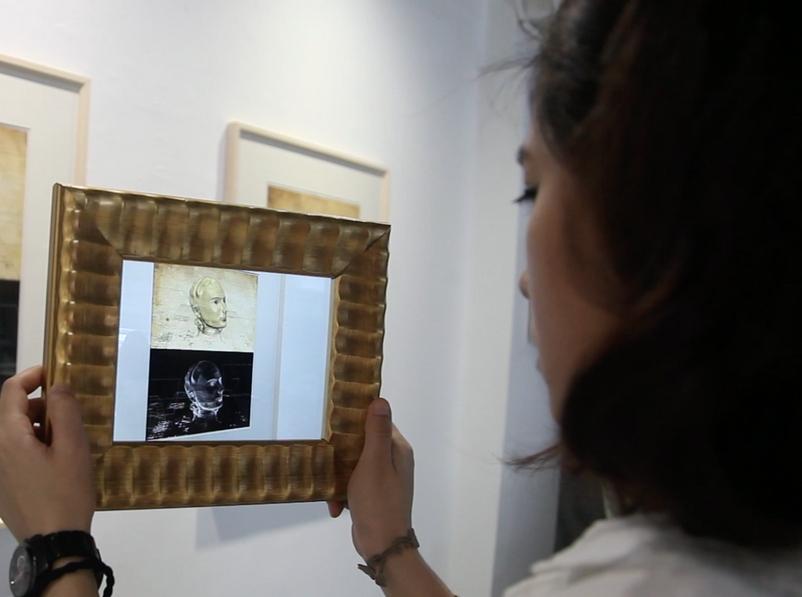
84 x 65cm x 6 pcs
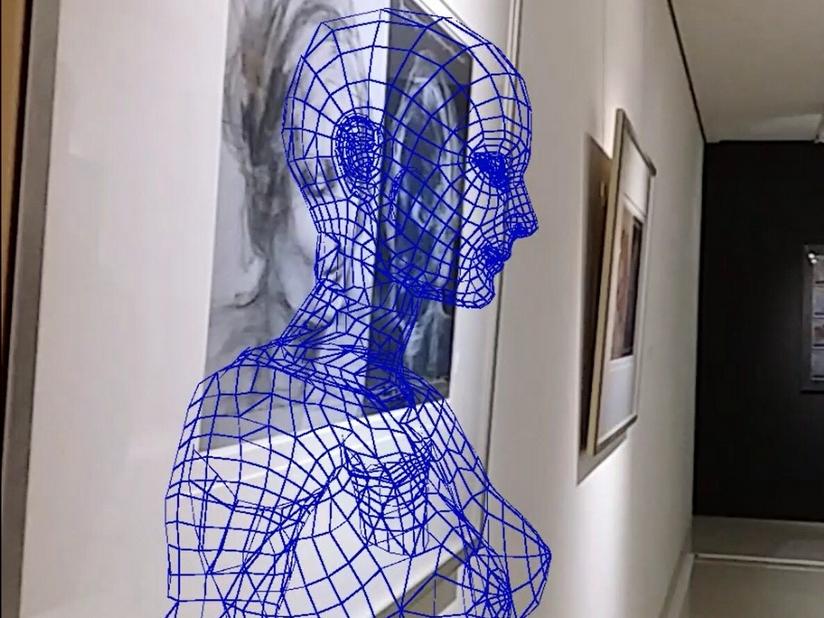
In Eden, everything is created by God without the contamination of technological civilization. However, after humans became fallen and were banished from the Garden of Eden, people deviated from God and could not receive God’s blessing. Later, Satan incited people to use their intelligence to develop various technologies and stopped relying on God. Their reliance on human intelligence resulted in endless disasters… Once we are back at Zion, we have tried to return to
Eden, return to God, and return to Nature. We must walk out of culture, the Atheist culture, to cast aside fallen humans… These are from God’s revelation. It is hard to be accepted by contemporary people because fallen humans live in a Godless culture, worshiping a fallen culture and being superstitious in artificial science. However, God’s word is forever steadfast in Heaven!
Indeed, ever since humans were banished from the Garden of Eden, they have gradually distanced themselves from God, and they have used their fallen knowledge to develop Atheist culture and technology to the extreme. They have used their intelligence to construct the Tower of Babel, developing human nations of politics, the military, economy, culture, technology, and education under patriarchal society, but the result is them being trapped in
more disasters and pain. For many years, I used a feminist perspective as my creative discourse to fight for resources for women, but the results were apparently limited. The Prophet revealed the truth of Return to Eden, Return to God’s Dominance, and Return to Nature, emphasizing that humans must walk away from civilization in order to reach the state of prospering with everything and becoming one with nature. Once I comprehended this truth, I knew that humans must worship God to love one another. Only by doing so can the problems derived from patriarchal structure be resolved. As a result, my creative subject started to concern the relationship between humans and the Creator.
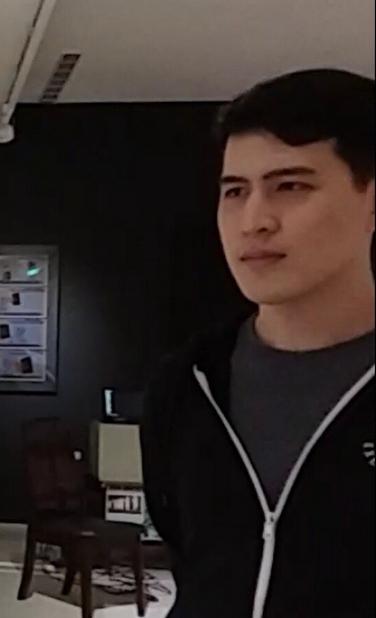
Starting in 1999, God guided me to develop the Back to Nature series, which included Substantial Life, Viewing Views, Flower Pillars, Treasure, and Chrysalis. I attempted to represent the metropolitan culture and artificial nature humans constructed far away from nature, so I adopted billboard light boxes and colorful signs to create a contrast with nature. At that time, I spent a lot of time in discussions with sign manufacturers to apply the sign production method to present my work. I use the digital prints of natural patterns such as flowers, sky, and ocean views to past on acrylic light boxes, creating various geometric patterns such as squares, cylinders, cones, scallops, and chrysalis-shaped geometric nature. I placed them within nature such as parks, trees, grass, or indoor spaces to create ridiculous synthetic scenery. Paradoxically, this series attracted strong attention from viewers. The viewers did not find anything wrong with synthetic, fake nature. Rather, they loved these illuminators. When I saw the bizarre scene of the audience lingering in front of these works, my criticism was further confirmed: That people find delight in synthetic nature explains the crisis of nature being invaded by fallen culture. This series of works has generated invitations for exhibitions from several public art festivals, such as Listening to Cloud-light #2, Integration and Co-construction, and Rain Forest,

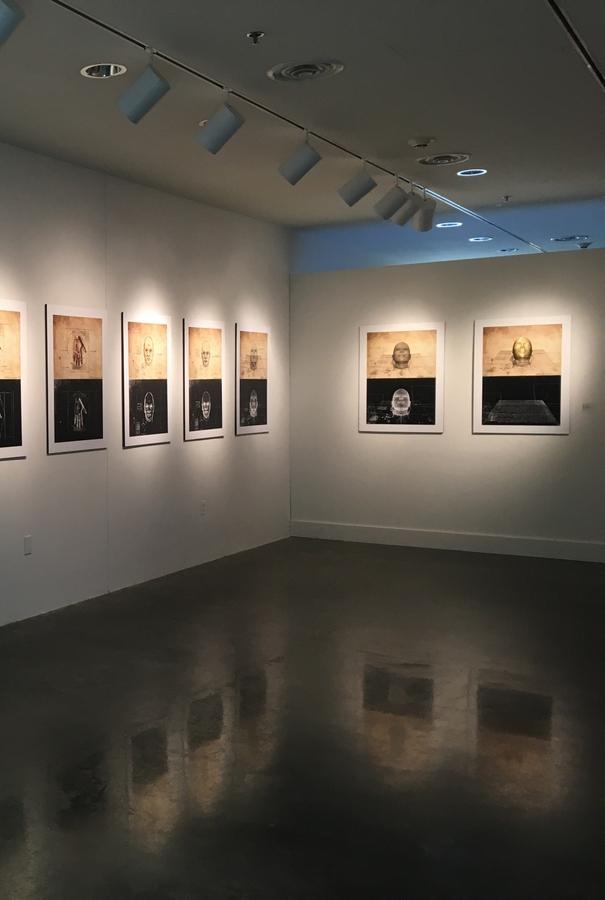
because glamorous works can better attract contemporary people.
The virtual butterfly with artificial life and the human–butterfly integrated Eve Clone
In 2001, I began teaching in the graduate school of Multimedia and Animation Arts, National Taiwan University of Arts, where I had more opportunities for contact with the media of computer technology. Therefore, I started to use 3D animation to represent the virtual illusions constructed by technology. For example, in the 2004 Un-Natural and the 2005 Fascination & Frustration solo exhibitions, the work Flower Pillars consisted of garden-like acrylic light boxes with four poles. In the middle, a lower light box was installed with a small screen, in which a 3D animation butterfly was presented, symbolizing that the flower and the butterfly can communicate their affection across a distance. In City Matrix, I displayed several digital specimens conceived of butterflies and neon lights. In my solo exhibition Catching at the Museum of Contemporary Art Taipei (MOCA Taipei) in 2006, I used 4D glasses and double projection to display 3D butterfly animations. Although the butterflies seemed alive on the screen, the viewer could not capture them. The exhibition space also displayed many animations of specimens created by optical illusions. This work illustrated that synthetic butterflies could be stored, saved, reorganized, and deleted in digital systems. Later, I was invited to the 798 Art Village in Beijing to hold a solo exhibition, “The Beautiful New World,” where I boldly created my first interactive installation piece, Virtual Creation. The interactive platform invited the viewer to paint their own butterfly patterns. After the viewer completed a creation, they would see the butterfly image they painted slowly fly into the projection of the sea floor in front of them, and the butterfly would shortly disappear. This work satirized the virtuality and transience of manmade objects, inspiring thinking on philosophical topics such as true vs. fake, real vs. virtual, and permanence and transience.
After 2007, I witnessed that humans not only used computer technology to construct smart cities but daringly challenged God’s original creations, developing extreme technologies such as genetically modified crops, gene replication organisms, and embryo hybrids. To represent this artificial act of cultivating life, I created a four-piece work, Cultivation. I constructed a round petal shape with acrylics. In the middle, a small screen displayed a female body, which turned from 3D animation grids into an image of the female body. Then, with motors running and LED lights shining, I presented the artificial cultivation process through technology. In 2008, I developed a large-scale image projection to show a butterfly–woman species, and I named it Eve Clone as God created Eve, and humans want to play God and created a cloned Eve. To illustrate her artificial life, I used an interactive computer program and sensors to invite the viewers to participate. When people interacted with her, Eve Clone turned from a chrysalis into a beautiful butterfly-woman and then to an image of a human beauty. The more viewers presented, the greater the degree of her transformation. Once all viewers left, she immediately returned to the chrysalis shape. This interactive installation mocked the fact that this species could only evolve with human intervention and could not exist alone. Therefore, she was only a fake, artificial life. By contrast, only God’s original creations are natural and true life.
The products humans develop with their fallen wisdom have become a force that fights back and controls humans: global warming caused by chemical contamination reaching a point of no return; the unprecedented high heat in summer; the ice in the poles melting in substantial amounts; glaciers broken, causing tsunamis and the global sea level to rise… In addition to the fights from nature, humans attempted to change God’s law of original creations, such as artificially breeding animals and plants, increasing gene mutations, genetic modification technology, gene
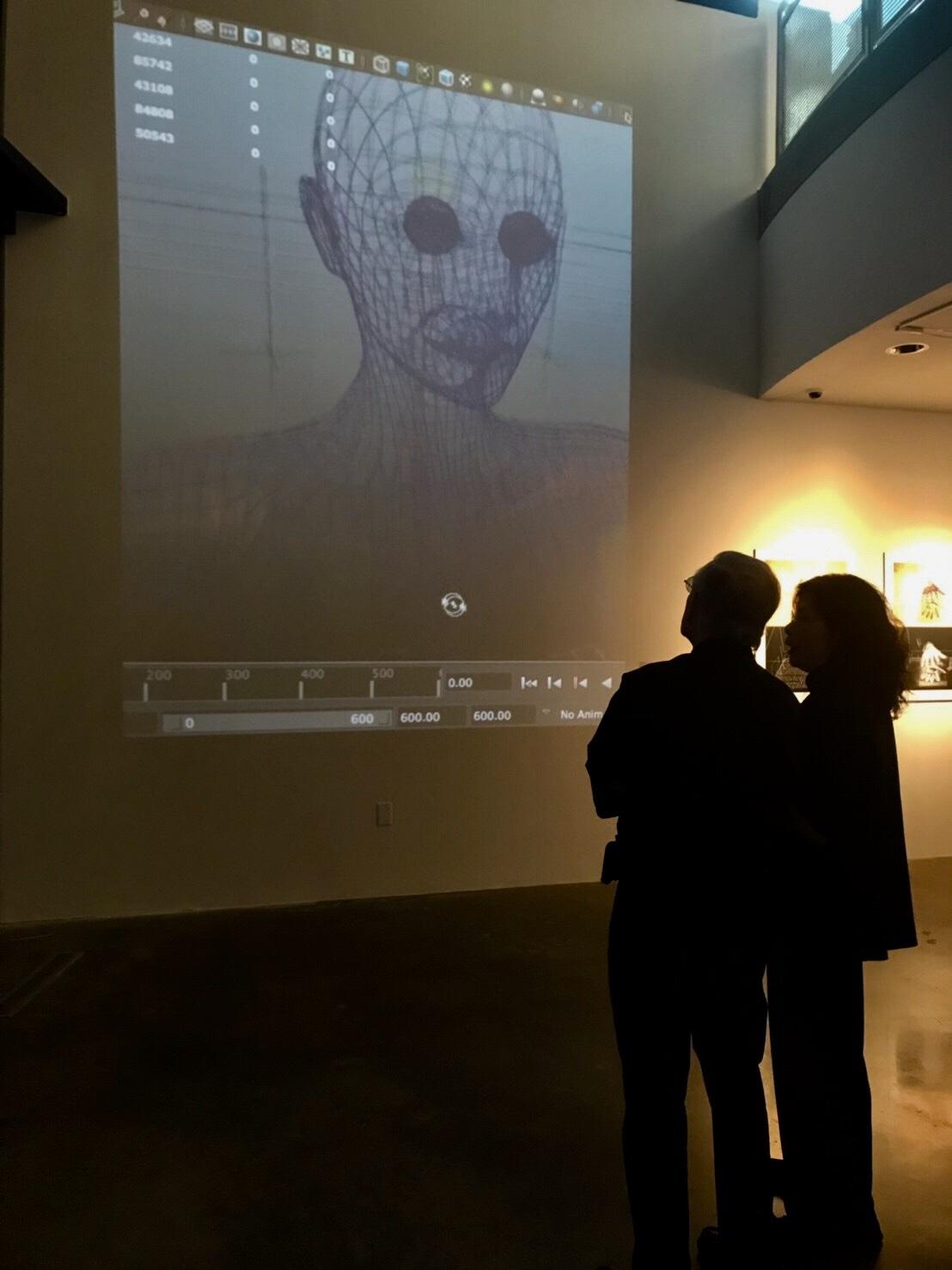 Making of Eve Clone I Digital Image and Sound, 3D Animation, Dimensions Variable 2016
Making of Eve Clone I Digital Image and Sound, 3D Animation, Dimensions Variable 2016
 Making of Eve Clone I Digital Image and Sound, 3D Animation, Dimensions Variable 2016
Making of Eve Clone I Digital Image and Sound, 3D Animation, Dimensions Variable 2016
reproduction engineering, and interbreeding trespassing the boundaries of species. The subsequent creature mutations, environmental disasters, and moral crises will lead humans on the road to extinction. Additionally, the so-called smart city, future world, internet technology virtual world, involving chips, computers, Wi-Fi, ultramicrowaves, ultraelectromagnetic waves, artificial intelligence, biochemical technology, and robots, trap humans in the net of technology they have created. Humans have been monitored, controlled, and manipulated by technology. They can hardly escape from the self-made temptations and dangers. Before Stephen William Hawking passed away, he said, “The development of full artificial intelligence could spell the end of the human race.” The founder of Tesla, Elon Musk, warned that artificial intelligence will be the “biggest existential threat” to humans. He even described artificial intelligence as a demon that humans cannot help but summon.
Following the Word enlightened by the Prophet, I realized that the Eve Clone at this stage could no longer interpret the evil of contemporary people developing technological culture, so in 2011, I decided to integrate the elements of the human chrysalis and human beast to shape the double identities of Eve Clone, who was both charming and evil. I quoted the Whore of Babylon recorded in the Bible “With whom the kings of the earth have committed fornication, and the inhabitants of the earth have been made drunk with the wine of her fornication” (Revelation 17:2) as well as placing the Number of the Beast, 666, the mark of Satan, on Eve Clone’s forehead and right hand as a symbol of evil (“And he causeth all, both small and great, rich and poor, free and bond, to receive a mark in their right hand, or in their foreheads” (Revelation 13:16)) to show that technological culture is like the Whore of Babylon and the Number of the Beast, which seduce and control humans. The Portrait of Eve Clone exhibited at MOCA Taipei in 2011 used 3D animated holograms as the medium to present her charming gaze and posture. She only lived under the spotlight (without light, Eve Clone was
invisible). What was rarer was that when the viewer saw her from different angles, her gaze followed and stared at the viewer, whereas when the viewer stood still to look at her, she stopped moving. Like Eve Clone,the technological culture is attractive,yet it seduces and controls humans, like the Whore of Babylon.
Following the concept of Portrait of Eve Clone, I subsequently created the hexagonal large-scale interactive projection installation of Eve Clone III, showing six gigantic faces following and staring at the viewer. The sound of water was in the background, and when the viewer moved, the portraits moved with sound effects, emphasizing that the gigantic portraits were like technology, overpowering and omnipresent in life. Facing this huge technological culture, humans seem minute. Additionally, I used resin to create the sculpture of six pairs of Hands of Eve Clone and Fingers of Eve Clone. I put them in tubes and experimental glass jars to criticize that these hybrid, artificially cultivated creatures have become the evil mutants that are backfiring and harming humans, just like the inventions of the computer, technology, chemical engineering, nuclear power, and artificial intelligence that in the end become the source of harm to humans. After Eve Clone III was exhibited in MOCA Taipei, the following year, it was invited to be exhibited in the Taiwan Biennial at the National Taiwan Museum of Fine Arts. I added six webcams to record the images of the viewers to further develop Eve Clone IV.
In 2011, I was invited by the Galerie Grand Siècle to hold a solo exhibition, for which I developed under the same concept a full-body Eve Clone: head slightly bowed, both hands in front of the chest like a fetus, and body showing a posture and texture like human–chrysalis integration. I used 18 small screens to present Mass Production of Eve Clone, emphasizing that Eve Clones were like massproduced factory products. In Revelation of Eve Clone III, the six digital images presented Eve Clone through x-ray transparency, revealing the tattoolike symbols beneath her beautiful appearance,
Making of Eve Clone Portrait IAR/1-6
Digital Print, Hand Drawing, 3D Animation, Augmented Reality Installation, tablet computer 2019, 84 x 65cm x 6 pcs
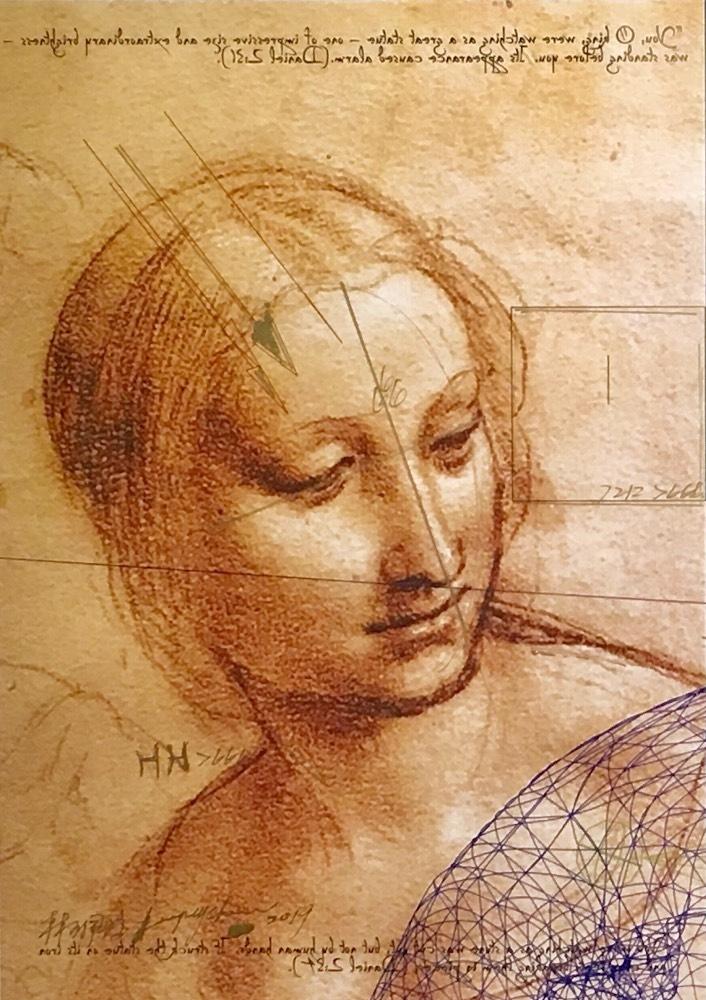

symbols of danger such as serpents, scorpions, and dragons.
The other large-scale projection interactive installation, Revelation of Eve Clone I, further presented that Eve Clone had artificial life and reproductivity. After the viewer entered the exhibition realm, her life index (the Time Code on the computer) was activated, and her body gradually turned from black-and-white to colorful, and her body was reproduced into a whole line of bodies. The number of reproduced Eve Clones can be adjusted according to the size of the projection space; a large space allows more reproduction. This work discusses life being reproduced, its Time Code and reproductivity activated by human intervention. Eve Clone’s life index (the Time Code on the computer) increases in milliseconds as time goes by, showing her coexistence with humans. Finally, to define and reveal Eve Clone’s identity and power to control humans, I boldly incorporated Bible passages from the “The Book of Revelation” about the Whore of Babylon and 666, the Number of the Beast, presented in six powerful languages at the bottom of each Eve Clone. The languages included Latin, Greek, and Hebrew, representing the three powers of politics, culture, and religion, respectively, because it was written in these three languages when Jesus was crucified: “Jesus Of Nazareth The King Of The Jews” (John 19:19–20). Chinese, English, and Arabic were also included to represent the three contemporary strong powers. The text was randomly shown at the bottom of the image by the computer, and the background music was hymns mixed with weird iron rubbing sound effects to emphasize the fake holiness. Each time the work was exhibited, the Time Code of Eve Clone differed. Later, in order to record her Time Code each time, I created the series Making of Eve Clone Documentation.
In 2013, I was invited to an international exhibition at MOCA Taipei. I pondered that the next stage of Eve Clone should be more vivid, like humans.
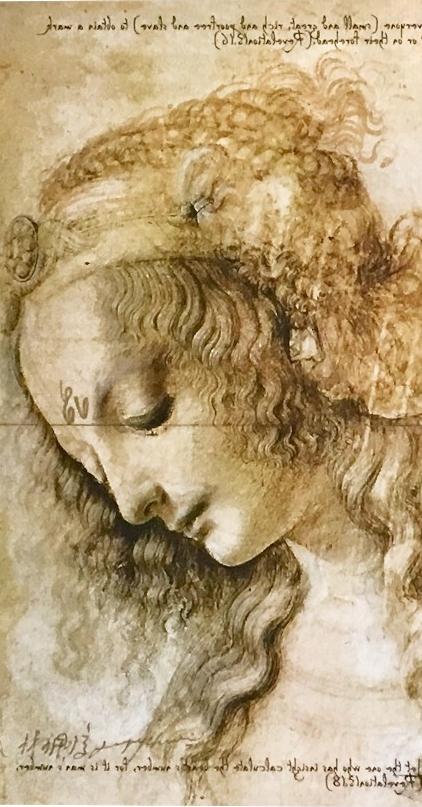

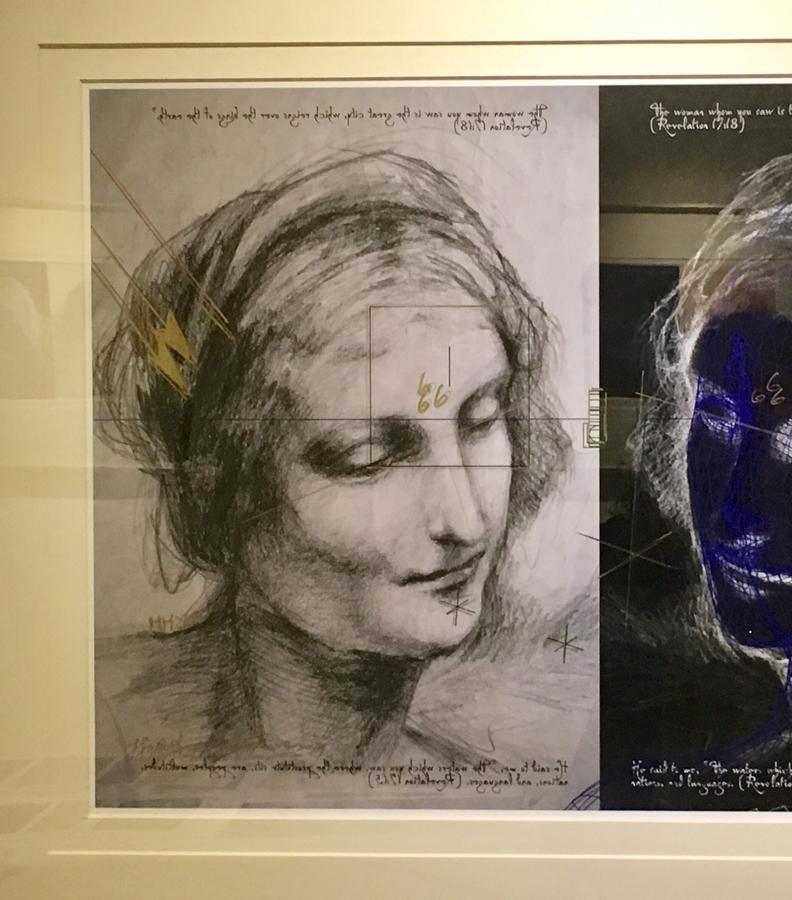
Therefore, I hired models, attempting to display the half-chrysalis, half-beast image of Eve Clone using real humans. However, the difficulties of techniques and makeup were hard to overcome and the expense high, so I called it to a halt. When I encountered this difficulty, I prayed to God desperately. God enlightened me of the prophet’s message, that in the Bible, “The Book of Daniel” 2:32–33, the Great Image (golden head, silver body, brass belly, iron legs, and part-iron, part-clay feet) is man’s kingdom. I suddenly realized that the ideal Eve Clone was to present not only cloned humans or artificial species, involved in the representation of technological culture, but further to criticize man’s kingdom that humans developed with their fallen wisdom and Atheist culture, which is the Great Image prophesied in the “The Book of Daniel” that was against Jesus.
Finally, Revelation of Eve Clone III was exhibited at the “Post-Humanist Desire” international art exhibition at MOCA Taipei. I used 3D animation to recreate all the characteristics in Revelation of Eve Clone I, such as reproductivity and the Time Code. Additionally, I added the Whore of Babylon, the Number of the Beast, and Bible verses related to the Great Image in the “The Book of Daniel.” In this exhibition, Eve Clone’s body had the texture of a golden head, a silver body, a brass belly, iron legs, and half-iron, half-clay feet. Her body, which looked like a fetus with a bowed head, was now a more attractive female body. Moreover, to show that she was the worshipped Great Image, I printed the animation file of Eve Clone into a 3D golden head, sticking it in the middle of the image so that the audience could touch the Number of the Beast on her forehead. This act of touching had multiple meanings: having sexual intercourse with her, being imprinted with the Number of the Beast, and raising a hand to worship her. In addition, it triggered Eve Clone to raise her head and dance, as if giving her life. The Time Code that keeps changing on the top of her head and the random Bible passages at the bottom of her feet together with the background music with weird iron rubbing sounds that sound like fake hymns convey a feeling of spookiness to

Making of Eve Clone Portrait IAR/1-6
Digital Print, Hand Drawing, 3D Animation, Augmented Reality Installation, tablet computer 2019, 84 x 65cm x 6 pcs


the viewers. The Bible descriptionof “The Book of Revelation” and “The Book of Daniel” from the Bible quote in Revelation of Eve Clone I and Revelation of Eve Clone III are as follows:
“And the second beast required all people small and great, rich and poor, free and slave, to receive a mark on their right hand or on their forehead” (Revelation 13:16).
“so that no one could buy or sell unless he had the mark—the name of the beast or the number of its name” (Revelation 13:17).
“Here is a call for wisdom: Let the one who has insight calculate the number of the beast, for it is the number of a man, and that number is 666” (Revelation 13:18).
“Then one of the seven angels with the seven bowls came and told me, ‘Come, I will show you the punishment of the great prostitute, who sits on many waters’” (Revelation 17:1).
“The kings of the earth were sexually immoral with her, and those who dwell on the earth were intoxicated with the wine of her immorality” (Revelation 17:2).
“On her forehead a mysterious name was written: BABYLON THE GREAT, THE MOTHER OF PROSTITUTES AND OF THE ABOMINATIONS OF THE EARTH” (Revelation 17:5).
“Then the angel said to me, “The waters you saw, where the prostitute was seated, are peoples and multitudes and nations and tongues” (Revelation 17:15).
“And the woman you saw is the great city that rules over the kings of the earth” (Revelation 17:18).
“All the nations have drunk the wine of the passion of her immorality. The kings of the earth were immoral with her, and the merchants of the earth have grown wealthy from the extravagance of her luxury” (Revelation 18:3).
“As you, O king, were watching, a great statue appeared. A great and dazzling
statue stood before you, and its form was awesome” (Daniel 2:31).
“The head of the statue was pure gold, its chest and arms were silver, its belly and thighs were bronze,” (Daniel 2:32).
“its legs were iron, and its feet were part iron and part clay” (Daniel 2:33).
“While you were watching, a stone was cut out, but not by human hands. It struck the statue on its feet of iron and clay, and crushed them” (Daniel 2:34).
Shattered by God and became like chaff on the threshing floor in summer. The wind carried them away, and not a trace of them could be found.
The Prophet of All Nations said, “The days in the world are numbered. When there is still something left, what is to come will come. The Great Image recorded in “The Book of Daniel” seen by the king has a golden head, silver chest and arms, bronze belly and waist, iron legs, and half-iron, half-clay feet. You observe and see a stone not sculpted by human hands hit the half-iron, half-clay feet, breaking it into pieces. Then the iron, clay, bronze, silver, and gold were shattered and became like chaff on the threshing floor in summer. The wind carried them away, and not a trace of them could be found. The stone that smashed this image became a great mountain filling up the world.” He also said, “The old world was decayed, and God used the flood to destroy it. Now God no longer resorts to flood but uses fire to burn. The world has come to an end.”
I followed the ending of the Great Image prophesied by the Prophet of All Nations to present the final destiny of Eve Clone. In 2014, I was invited to exhibit Revelation of Eve Clone IV in “Raising the Temperature” at the Queens Museum of Arts in New York. The work presented Eve Clone being submerged by seawater in a ruin. The water was dyed red, like blood from the dead. Although she strived to escape from the water, she was hit by a stone from the sky not sculpted by humans and smashed, becoming like the chaff on the
Making of Eve Clone Documentation I/1-10 Head and Hand Digital Prints, Hand Drawing, 3D Animation, Augmented Reality Installation, tablet computer 54 x 72 x 3cm x 10 pcs

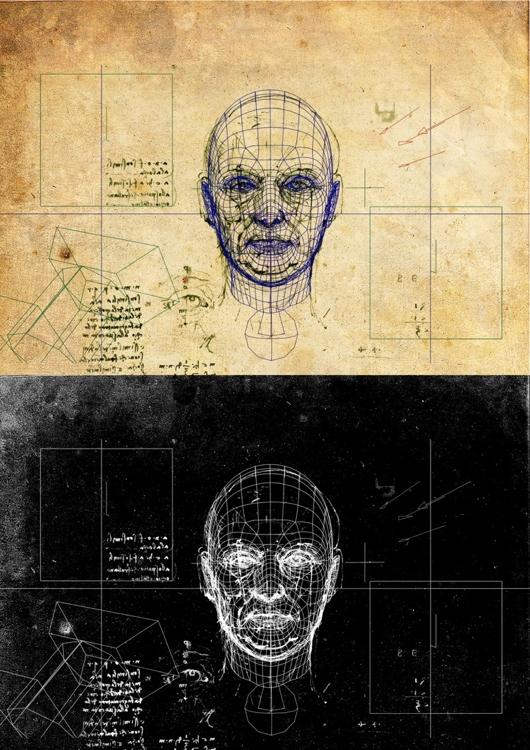
summer threshing floors, and the wind carried them away, that no place was found for them (“The Book of Daniel” 2:31–35). At the end of the film, the stone that smashed the Great Image became a huge mountain, filling up the world. Finally, I used verses from “The Book of Revelation” from the Bible as the ending, which echoed the background hymns to deliver the final fate of technological culture. This work reminded people that the technological culture they worship and the Big Image of the human country’s authority and system will eventually be destroyed by God. The image of the stone in the film referred to the huge stone sign on Mt. Zion because Mt. Zion refers to God’s Kingdom. The Bible verses used in this work were as follows:
So the first angel went and poured out his bowl on the earth, and loathsome, malignant sores broke out on those who had the mark of the beast and worshiped its image. And the second angel poured out his bowl into the sea, and it turned to blood like that of the dead, and every living thing in the sea died. Then the third angel poured out his bowl into the rivers and springs of water, and they turned to blood. And I heard the angel of the waters say: “Righteous are You, O Holy One, who is and who was, because You have brought these judgments. For they have spilled the blood of saints and prophets, and You have given them blood to drink as they deserve” (Revelation 16:2–6).
“As you, O king, were watching, a great statue appeared. A great and dazzling statue stood before you, and its form was awesome. The head of the statue was pure gold, its chest and arms were silver, its belly and thighs were bronze, its legs were iron, and its feet were part iron and part clay. While you were watching, a stone was cut out, but not by human hands. It struck the statue on its feet of iron and clay, and crushed them.” (Daniel 2:31–34).
The smoke that burns the Whore of Babylon ascends
In late 2014, I was invited by the Jamaica Center for Arts and Learning, New York, to participate in “Culture Capsules” international exhibition. Thinking that the top of the world culture, New York City, symbolized the contemporary Great Babylon and that the Bible states that Great Babylon is the Great Whore of Babylon, I intricately integrated the virtual image of Eve Clone with the virtual image of New York constructed by Google. Eve Clone proudly stands with open arms on top of the Empire State Building. The video shows Eve Clone and the entire city from parallel to bird’s-eye view from the sky, as if she is arrogantly looking down from high above, attempting to control everything and the world. This great city symbolizes the center where people busy pursue activities such as politics, economics, culture, technology, religion, education, and arts. It symbolizes every human desire, and it is the Great Image people worship. According to the Bible’s prophecy, God will get angry and send down fire to burn down this great city, and the smoke that burns the Whore of Babylon will ascend. The Bible verses quoted in this work were as follows:
“And the woman you saw is the great city that rules over the kings of the earth.” (Revelation 17:18).
“After this I saw another angel descending from heaven with great authority, and the earth was illuminated by his glory. And he cried out in a mighty voice: ‘Fallen, fallen is Babylon the great! She has become a lair for demons and a haunt for every unclean spirit, every unclean bird, and every detestable beast’” (Revelation 18:1–2).
“After this I heard a sound like the roar of a great multitude in heaven, shouting: ‘Hallelujah! Salvation and glory and power belong to our God! For His judgments are true and just. He has judged the great prostitute who corrupted the earth with her immorality. He has avenged the blood of His servants that was poured out by her hand.’
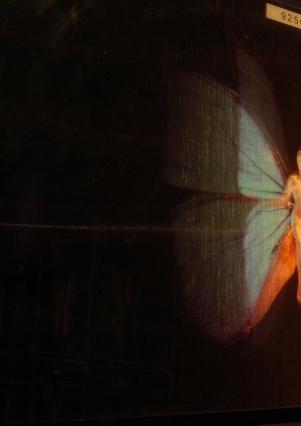 Clone Specimens 3D Animation, Digital Prints, Lenpicular Lens, LED, 2009
Clone Specimens 3D Animation, Digital Prints, Lenpicular Lens, LED, 2009
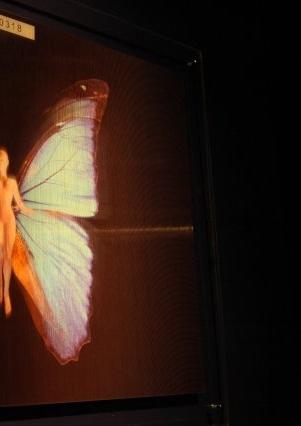
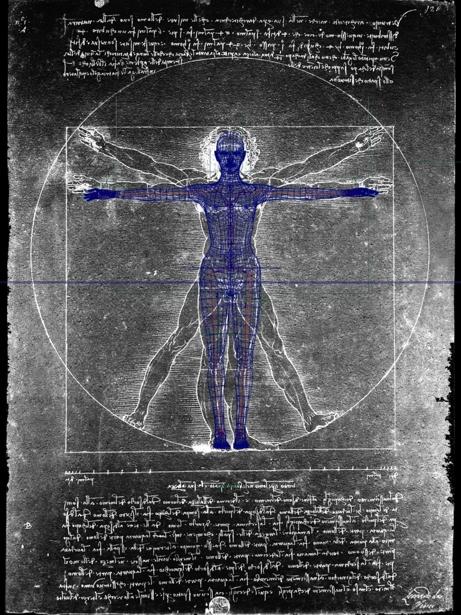
And a second time they called out: ‘Hallelujah! Her smoke ascends forever and ever.’” (Revelation 19:1–3).
“Then the seventh angel sounded his trumpet, and loud voices called out in heaven: ‘The kingdom of the world has become the kingdom of our Lord and of His Christ, and He will reign forever and ever’” (Revelation 11:15).
In 2017, I was invited to participate in the “Like Too Loud a Solitude” group exhibition at the Museum of the National Taipei University of Education. At that time, I pondered whether to continue the creation of this series of Eve Clone or start a new work, as Eve Clone had been terminated. After much prayer, God enlightened me to continue with the Making of Eve Clone series. I recalled the ambition of Leonardo da Vinci depicted in the movie The Da Vinci Code. Da Vinci committed sacrilege in challenging the holiness of Jesus and boldly anatomized the human body, which was considered holy and inviolable by the Church. Da Vinci has been considered the most holistic genius in human history, acting as artist and scientist. He dedicated his life to using his creativity to continue to invent and to conduct scientific research. He is the representative of humans developing intelligence. Had Da Vinci lived in the contemporary technological era, his creative desire would have been unbounded, and his challenge to God’s original creations would have been hard to imagine. This is what the Prophet warned, “The intelligence of the common people in the world is the intelligence of the people described in the Bible that will fall and be destroyed... That is the critical point of the testing of Adam and Eve by Satan in the Garden of Eden.”
Therefore, I started to study da Vinci and his works. In the end, I decided to appropriate his Vitruvian Man manuscript in my Making of Eve Clone I because in this manuscript, he used the
golden ratio to depict a perfect human body size and claimed that humans were the center of the world. I also discovered that the Vitruvian Man he depicted is the same ratios of the Eve Clone I created, such as the ratios of their facial features, limbs, and body. In this series, in addition to pointing out that the perfect ratios of Eve Clone happen to be the golden ratio used by da Vinci, I translated his strong creative desire and astounding ambition in the creative process of producing Eve Clone. The bold behavior of da Vinci, who dissected the human body to analyze the muscles, veins, and bones, was similar to that of contemporary scientists, who dare to modify God’s original creations. My Eve Clone works criticized this human-centered thought that attempts to challenge God’s original creations. Therefore, I made a two-phase comparison of Eve Clone and Vitruvian Man to represent human desires.
In the video Making of Eve Clone I, I looked back and represented the process of me creating Eve Clone and the evolution of her body in each period. From the original drafting of Eve Clone, which recorded my inspiration of drawings, to using computer 3D Maya software to construct grids, the pictures of each stage were as follows: human-like skin tone, metal-like color, holographlike green, and a body depicting the Great Image with golden head, silver body, bronze belly, iron feet, and half-iron, half-clay feet, the body rotating 360° and changing shape. Because of the 3D visual illusion, Eve Clone seemed to be surfacing from da Vinci’s manuscript into a threedimensional body. In combination with sound effects, a mysterious and weird feeling was created. In the middle of the video, I specifically presented the actual record of how to inspect the body ratios of Eve Clone in the computer software by showing the computer interface, 360° space, camera, and timeline. I also intentionally kept the patterns, symbols, icons, and images that only the computer can create so as to contrast them with da Vinci’s sketches, who in his time could only conduct two-dimensional drawings by hand, thereby indicating that the
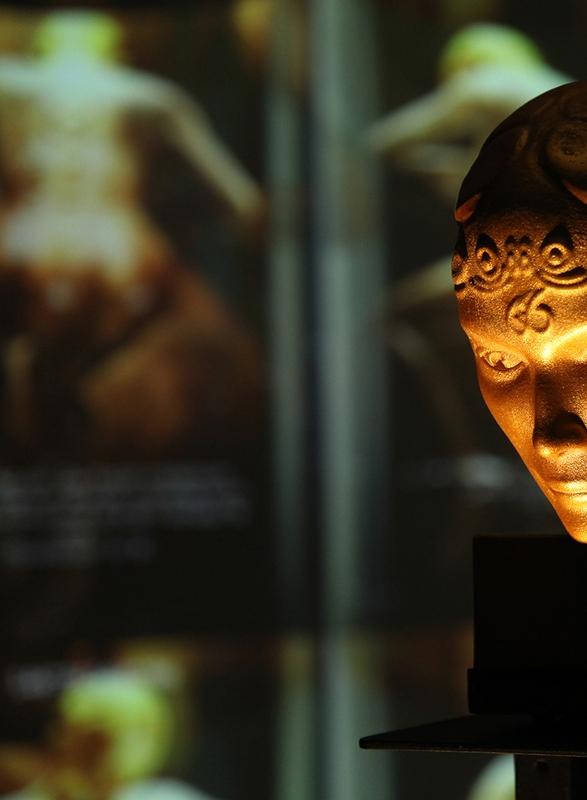 Revelation of Eve Clone III
Revelation of Eve Clone III
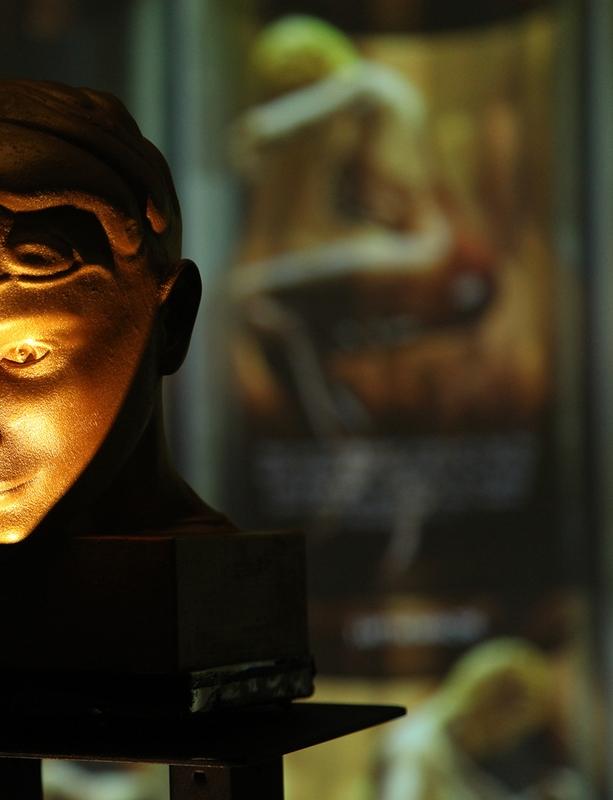
body of Eve Clone I created was more vivid, threedimensional, and digitized than his Vitruvian Man. Additionally, the mirrored writing of da Vinci’s work was replaced by me with Bible verses about the Great Image and the Whore of Babylon using his mirror writing, and I replaced his signature with mine as a code, in that the viewer could hardly notice that da Vinci’s words and signature were altered by me.
The Making of Eve Clone Documentation I series continued with the aforementioned concept. I incorporated the 3D development files of Eve Clone, including head and hand lines and grids, and pasted them with the head and hand manuscript of da Vinci to highlight that Eve Clone exhibited the golden ratio of the human body shown in da Vinci’s manuscript. This series contained five pieces of work: da Vinci’s drawing of the head integrated with the lines of Eve Clone’s head; da Vinci’s drawing of the head integrated with the grids of Eve Clone’s head; Eve Clone’s grid head gradually emerging; and Eve Clone’s golden head appearing with the the Number of the Beast. This work intentionally retained da Vinci’s mirrored writing as well as lines and grids composed by computer software and symbols such as icons, cameras, and controllers to echo and contrast the manuscript and digital files. Finally, I added the golden lines, dates recorded in the Bible, and number symbols such as 666at the tops of the prints by hand drawing them.
In the four pieces of work on the head and hands of Making of Eve Clone Documentation I, I used the augmented reality (AR) technique to transform Eve Clone from static to dynamic images, as if Eve Clone entered from a plane to the real space to have a dialogue with the viewer. I used the AR interactive technology to show that Eve Clone was like various products of technology that exist in daily life. When the viewers used AR to interact with the 2D documents of Eve Clone’s head and hands, they were surprised to find that the 2D head and hands moved on the screen. Eve Clone’s head gradually changed from asleep, facing up, to rising with open
eyes and turning left and right, before closing the eyes and returning to the original posture. The hands moved in a tempting gesture of the number 6, and like Satan’s horns indicating that Eve Clone lived in the same time and space as humans.
The six two-dimensional, digital print works Making of Eve Clone Portraits IAR are extensions of Portrait of Eve Clone and Making of Eve Clone II. They convey that the facial proportions and poses of Eve Clone are similar to Leonardo da Vinci’s portrayal of a woman, which perfectly follows the golden ratio. This series appropriated the drafts of portraits of women by da Vinci. Six portraits with beautiful poses were selected. Subsequently, the wireframes of six Eve Clone faces were matched with them, from facial features to poses. Surprisingly, when the wireframes of Eve Clone were placed onto da Vinci’s drafts, the two were the same size, representing the perfect ratio and poses of Eve Clone and her relationship with da Vinci’s drafts of women. The works intentionally retain the wireframes of the bone structure of Eve Clone, a computer icon, and a camera icon. Finally, to present that Eve Clone can live in a three-dimensional space, augmented reality devices project images of Eve Clone wireframes emerging from a two-dimensional frame and floating into the exhibition site. The viewer can use a tablet computer to interact with Eve Clone to the left and to the right. They can discover that the wireframe of Eve Clone moves, emerging from the frame and wandering between the left and right pictures. It is as if Eve Clone is entering from the digital era on the right side of theblack background, moving to the era of da Vinci’s draft on the left side, and then returning to the right side again. Eve Clone is like a soul existing in the three-dimensional space, continually being juxtaposed and integrated with the main body of the original image. The viewer can control this bizarre process of left–right interaction. This is the illusion created by extending the virtual into reality. Lin uses technological media to express Eve Clone’s virtuality of technology, thereby reflecting that this product of technology is existing in people’s lives and intimately coexists with


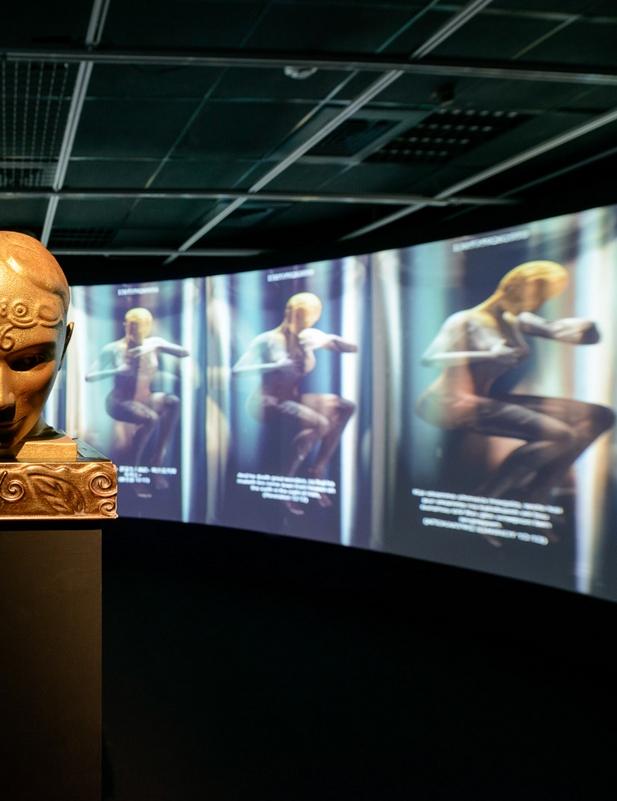 Revelation of Eve Clone III 3D Animation, Digital Image and Sound, Computer, Interactive System, Web Cam, Projectors, Stereo, 3D Printing Dimensions Variable
Revelation of Eve Clone III 3D Animation, Digital Image and Sound, Computer, Interactive System, Web Cam, Projectors, Stereo, 3D Printing Dimensions Variable
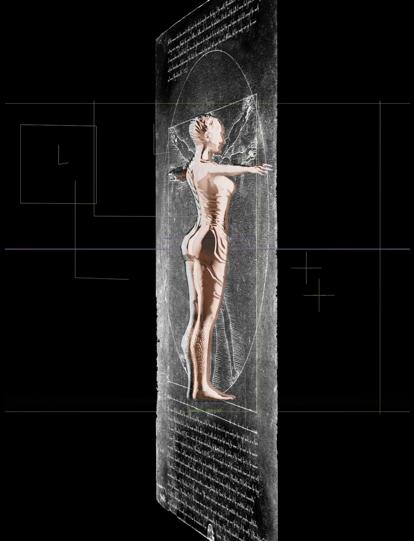 Making of Eve Clone I Digital Image and Sound, 3D Animation, Dimensions Variable 2016
Making of Eve Clone I Digital Image and Sound, 3D Animation, Dimensions Variable 2016
humans.
Making of Eve Clone Portraits IMR is an extension of the Making of Eve Clone I video, extending da Vinci’s drafts and Eve Clone into a real space. The viewers, having been invited to put on an MR(Mixed Reality) helmet, is surprised to find a huge integrated image of Eve Clone and da Vinci’s Vitruvian Man appearing in front of their eyes, proudly standing in the space like the Great Image. Combined with the background music and Bible verses read by computerized voice ringing in the viewer’s ears, this audio-visual experience drastically differs from past experiences, creating a sense of unease in the audience.
The video is a narrative. The large, integrated image of Eve Clone and Vitruvian Man present a 360degreeimage with a slow rotation. Eve Clone then emerges on da Vinci’s draft as if embossed before entering into the wireframes of the black computer space. There, it splits into six images, surrounding the main body of Eve Clone, and eventually it is integrated again with da Vinci’s Vitruvian Man. This process conveys the idea that Eve Clone, a product of technology, has the perfect ratio that da Vinci developed for the Vitruvian Man. It also conveys the desire expressed in da Vinci’s work, that humans are the center of the universe. More importantly, it represents the replication of Eve Clone and the magnificence of her existence, like the power of technology in human life.
When the viewer puts on the MR device, although he/she coexists with other viewers at the exhibition site, he/she is extracted from the site and immersed in a solo dialogue with the work. He/she seems to be watching a theater that mixes virtuality with reality, and the surrounding views become part of the theater. Lin utilizes technology to represent the essence of technology. Especially, she uses the features of mixed virtuality and reality of MR to express that the alluring technological product, Eve Clone, has long existed in human life, becoming the Great Image that people worship.
Awe-inspiring language, symbols, and technological media
Prof. Lin’s article stated that “Lin used an art form with form, body, color, and images to present, reaching an awe-inspiring state”. Indeed, art can refer to an artist having the ability to control media, giving the art language an effective development and implementation to express their profound meanings. Art is a diverse creation of visual, audio, and performance, of human activities; it is the performance of a creator’s imagination, artistic concept, and techniques. Clearly, only through the control of techniques can the thoughts, languages, beliefs, and concepts of art be fully presented. Therefore, Word and Tech assist each other, forming a close relationship all around. In the creative process of each series of my work, in order to fully express my artistic concept (my Word), I strive to find the most suitable media, transforming it into a language, symbol, or even a concept itself. In other words, Word and Tech complement each other. The technological media used in the Eve Clone series both represented the virtuality of artificial life and became the key language through which I criticized the essence of technology. They were the virtuality of 3D animation that could present the female body with artificial life, the webcam that could take in and sense the location of the viewer, the hologram that could integrate the media and concept into multilayered language along with the viewer’s perspective, the interactive program with the audience using a computer system and the Kinect infrared sensor, the Time Code showing the coexistence of Eve Clone and humans, the “delay” computer program showing Eve Clone being cloned, and the AR technology keeping Eve Clone in real space. All of these show that Tech is the critical language to interpret the Word. In the large installation work Revelation of Eve Clone III, especially, I mastered various high-tech skills, such as the software and techniques of merging three projectors into a curved projection, real-time control of the Time Code in milliseconds, a sculpture of golden head with a sensor system enabling it to interact with the audience in real time, the use of a computer |”delay” program to reproduce Eve Clone


3D Animation, Moving Hologram, Acrylic Frame, Spotlight 46cm×57.5cmx4cm each piece


images, and the control of a static Eve Clone in black and white images that gradually became colorful images.
Without these technologies, I could not have presented Eve Clone so vividly, virtually, and mystically. She could both communicate with people and be reproduced, and she seemed to be able to keep living in virtuality. I used the language of representation to present the essence behind the dazzling and attractive external features of artificial nature and artificial life. I used sarcasm for the viewer to reflect on the trap behind the beautiful sugar coating. As Roland Barthes said, “The best weapon against myth is perhaps to mythify it in its turn, and to produce an artificial myth.” As Prof. Lin described as “awe-inspiring:” “This is not merely a presentation of technique itself, but has God’s Word and thoughts behind it! These kinds of God’s Word and thoughts must be derived from the author’s actual care and understanding of life through various topics toward the truth in the universe, toward people and society, and toward herself.”
Eduardo Kac stated, “In the end, a work of art is not relevant for being the first or the last of its kind, but for speaking to viewers and participants in meaningful ways. Looking back on my creations, it is as if God guided me to understand and deconstruct the reality of man’s kingdom. Because of the enlightenment of the Word from the Prophet, I understood that humans must “return to Eden, return to Nature, and return to God” to be able to respect God and love people. And only then could the various problems derived under the human Atheist culture be resolved. I shaped Eve Clone as the desire of humans to challenge God’s original creations. She evolved in each generation, from the human–chrysalis integrated female body in Eve Clone II to Eve Clone the Whore of Babylon that was marked with 666, to Revelation of Eve Clone, in which she became the Great Image in the human country referred to in
the “The Book of Daniel” in the Bible. This evolutionary process depicted the codependent relationship between humans and technology. I wanted to use this series to unveil how the Atheist culture and technological culture constructed by humans became an evil power that fights back and controls humans, becoming the Whore of Babylon God wants to burn and the Great Image of the man’s kingdom that God wants to smash. Finally, in the Making of Eve Clone series, I integrated Eve Clone with da Vinci’s manuscript, showing that Eve Clone was the creation of humans’ ultimate development with their fallen intelligence and their challenge against God’s original creations, and that she had been existing in every corner of daily life.
At the end of editing this book, I witnessed Typhoon Swallow flooding the Kansai International Airport in Japan. Later, a huge earthquake of magnitude 6.7 hit Hokkaido, causing severe mud slides that dismantled mountains and destroyed villages, and also causing soil to liquefy and roads and houses to collapse. Recently, Typhoon Mangkhut hit the Philippines, Hong Kong, and China, and Hurricane Florence attacked the United States, causing the worst disasters in a century. All of these are ongoing disasters, and in the future, disasters will only increase in number and severity. This is the consequence of humans developing technological culture. The Prophet of All Nations, Elijah Hong, has repeatedly warned, “The amount of disaster that humans suffer from humans’ fallen intelligence has reached saturation. As long as we still indulge in worldly intelligence, as long as we are still being controlled by a fallen power, we can never have peace.” This is why I used art to represent the Eve Clone that humans are developing, and used this piece to deliver the revelation and notification of the end of the world: Only if humans return to Eden, respecting and obeying nature, can they avoid apocalyptic disasters.
